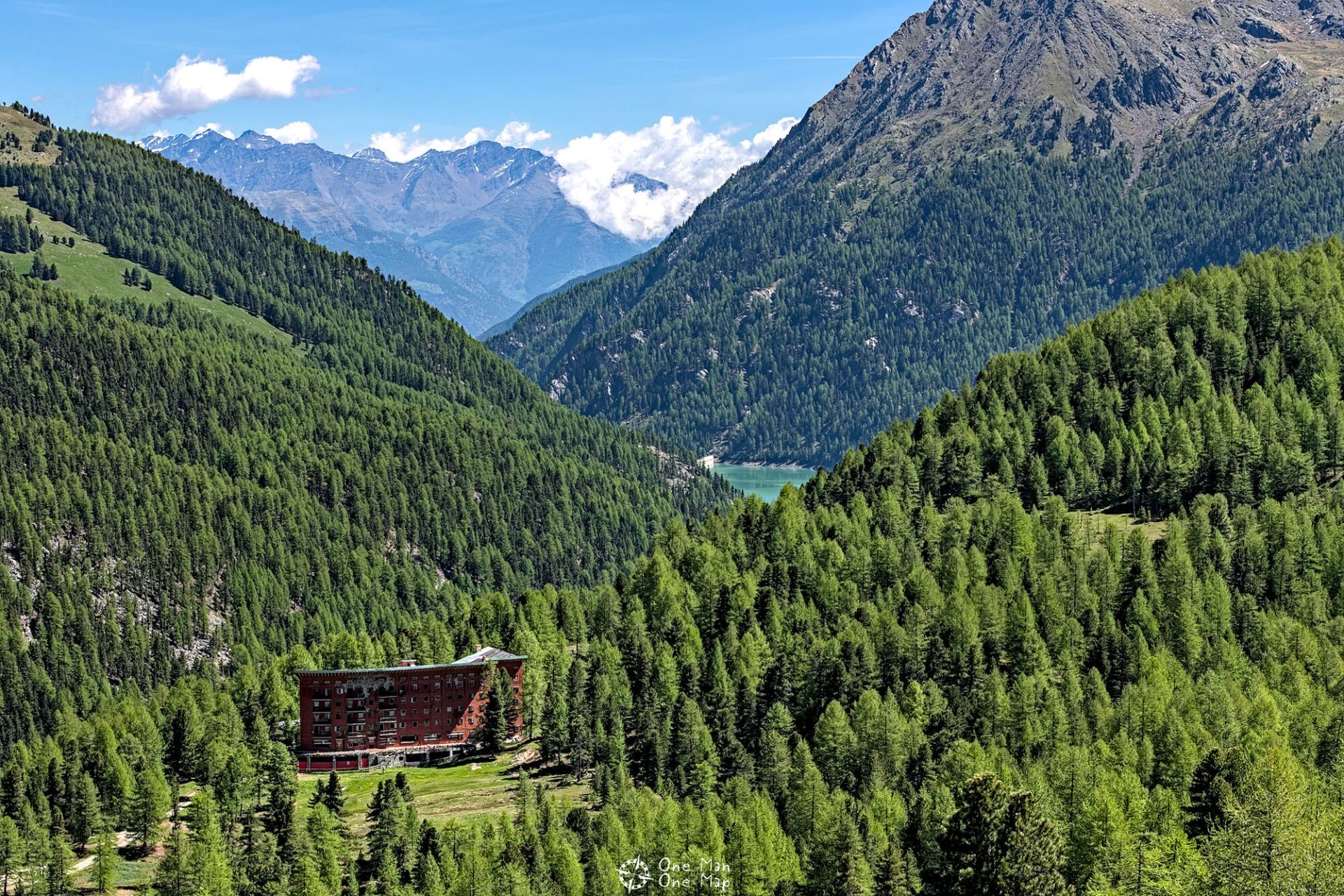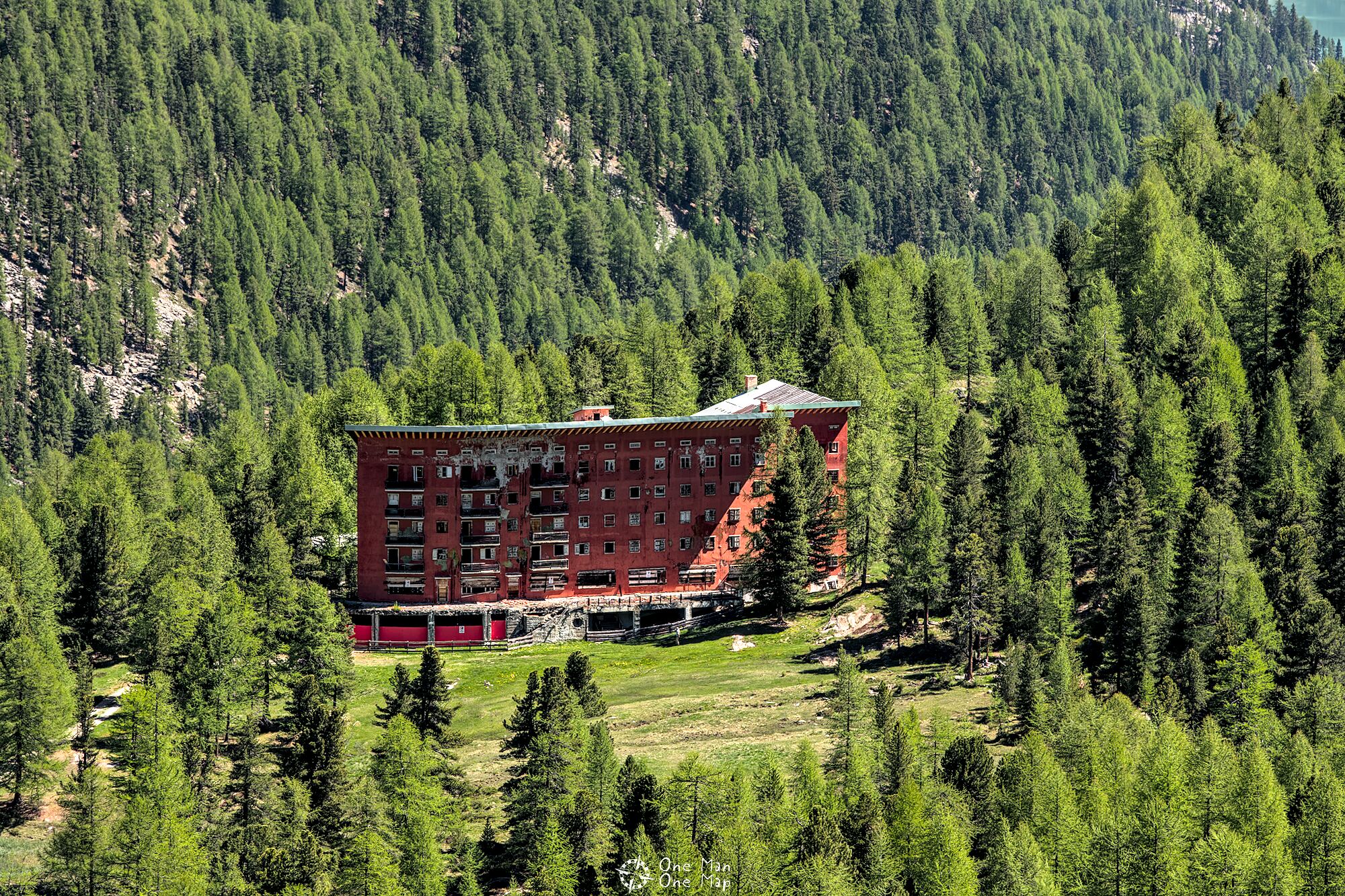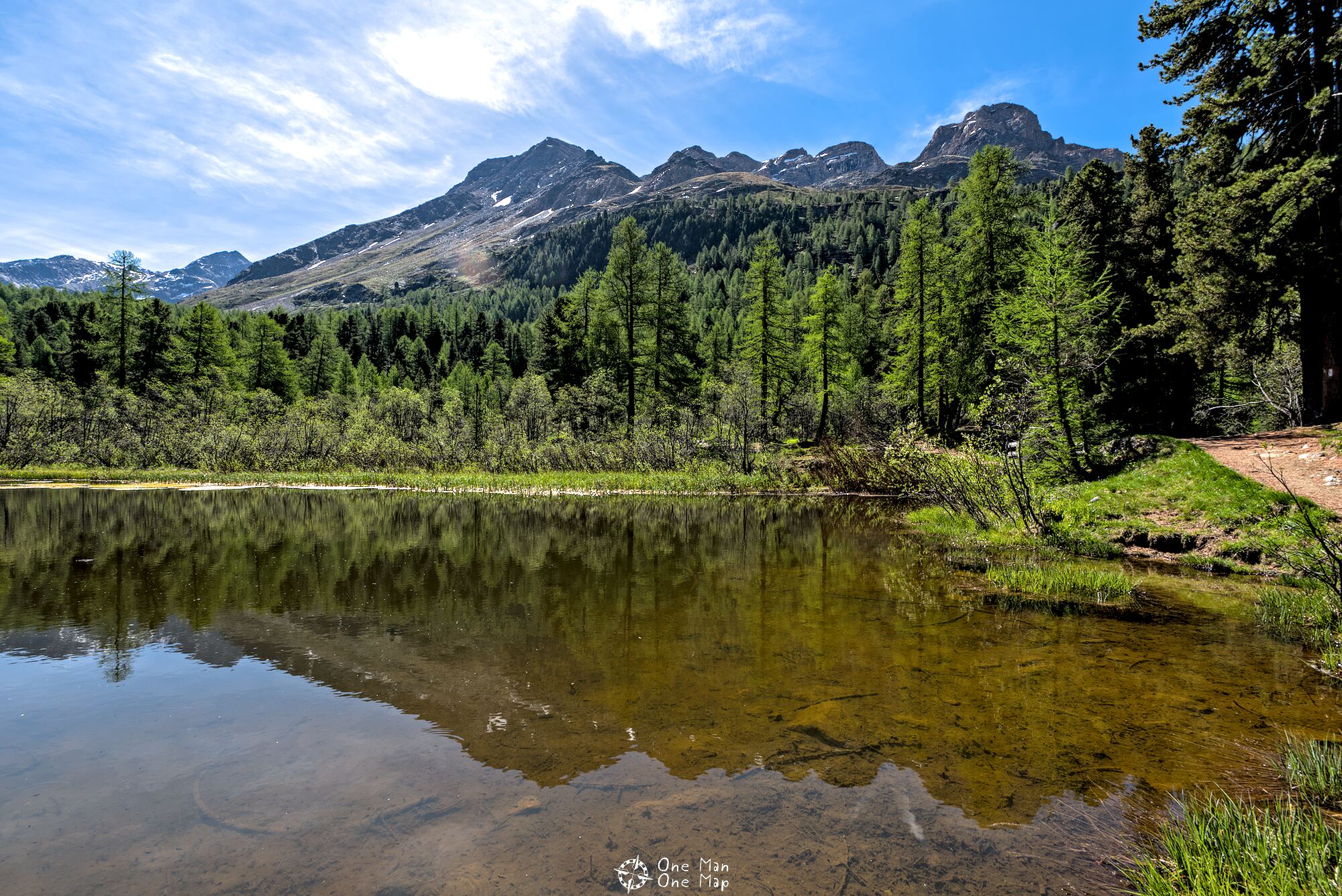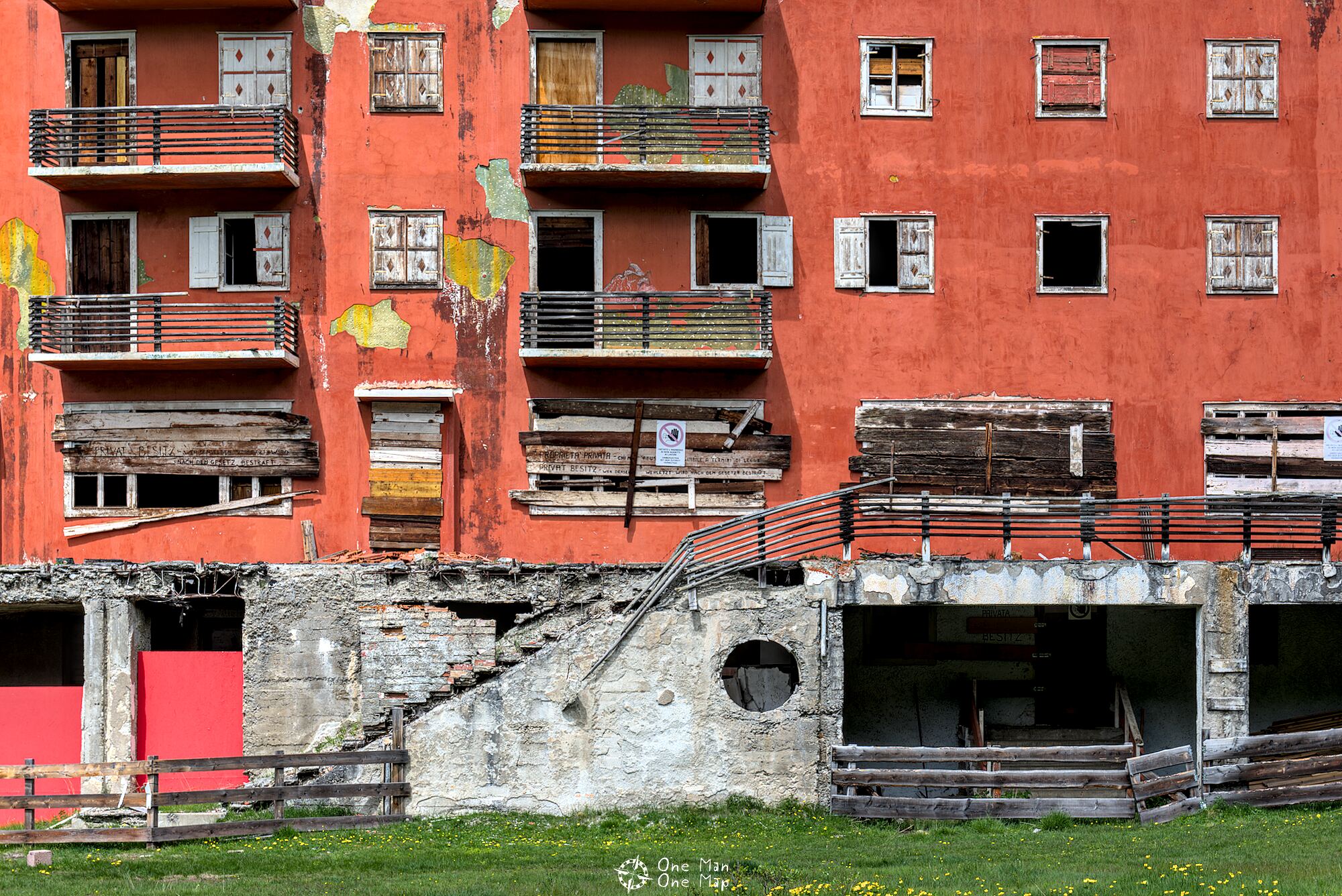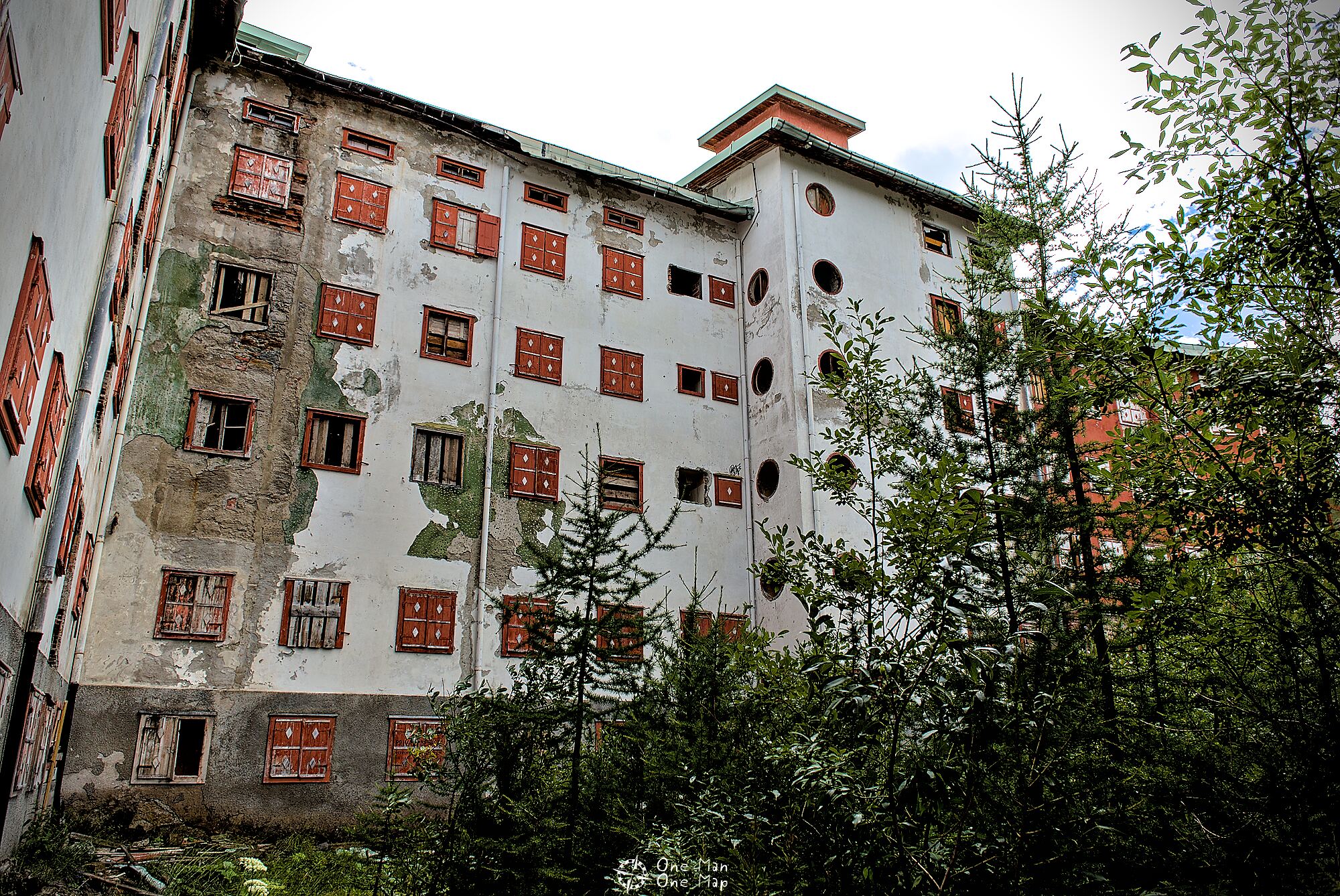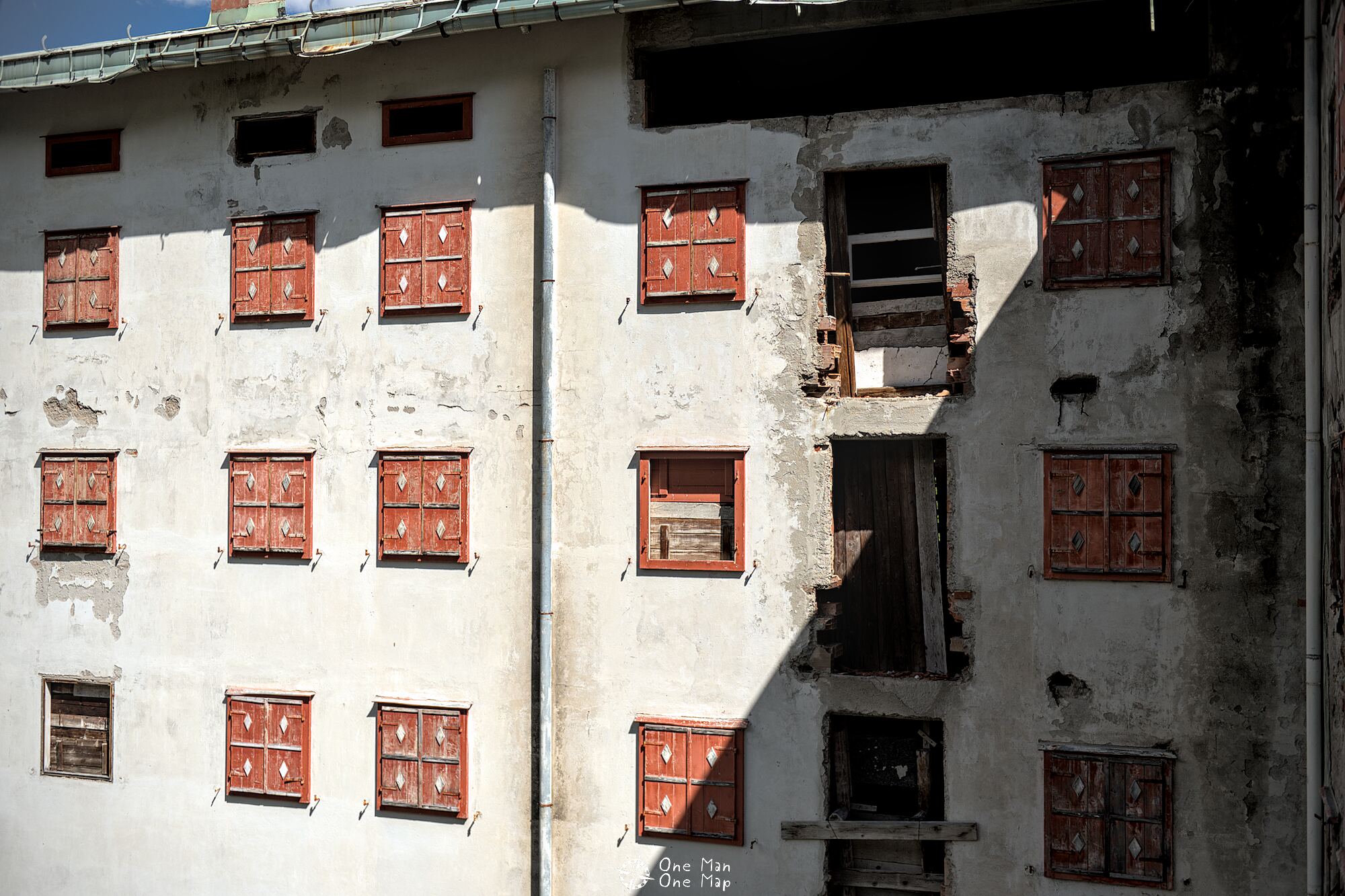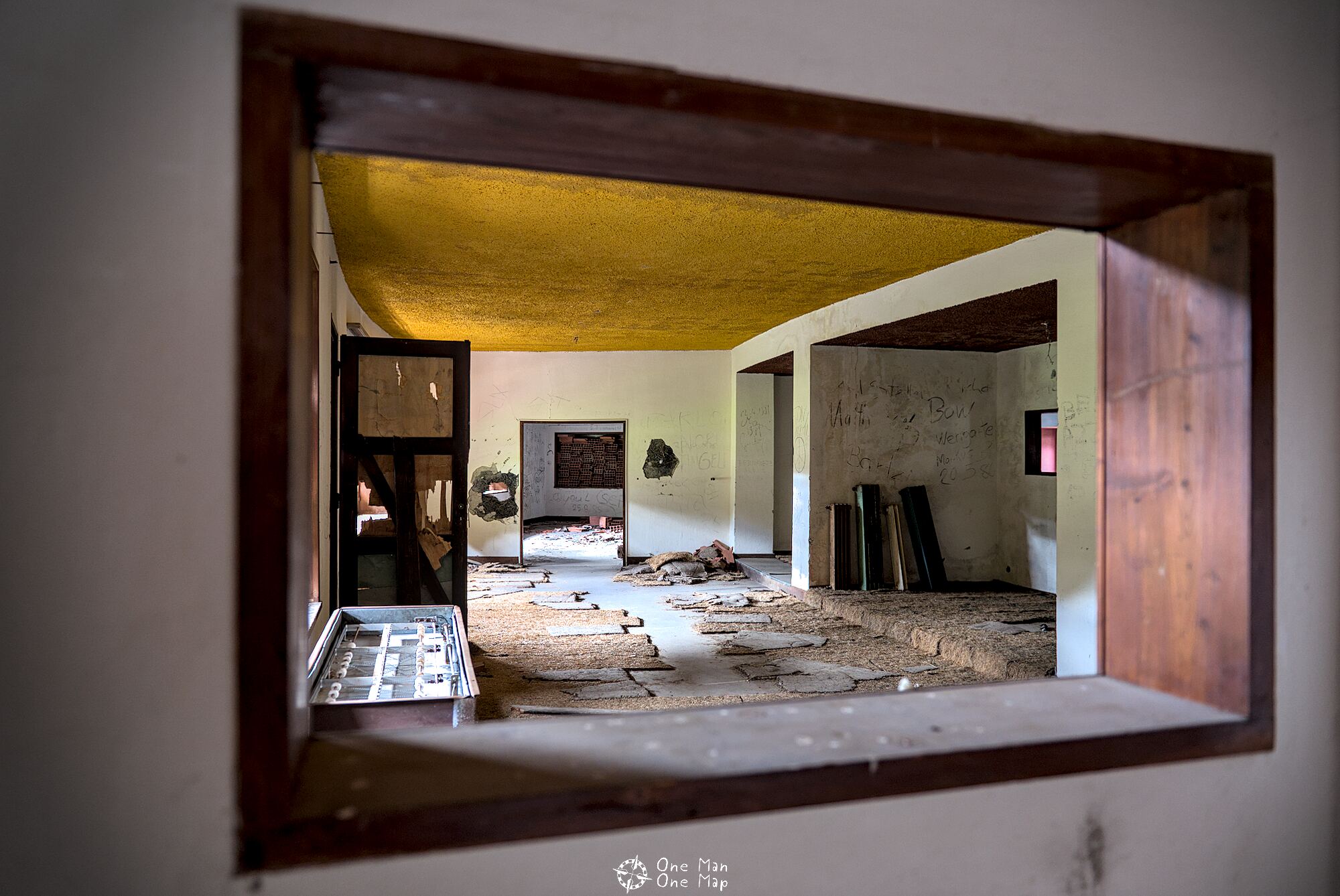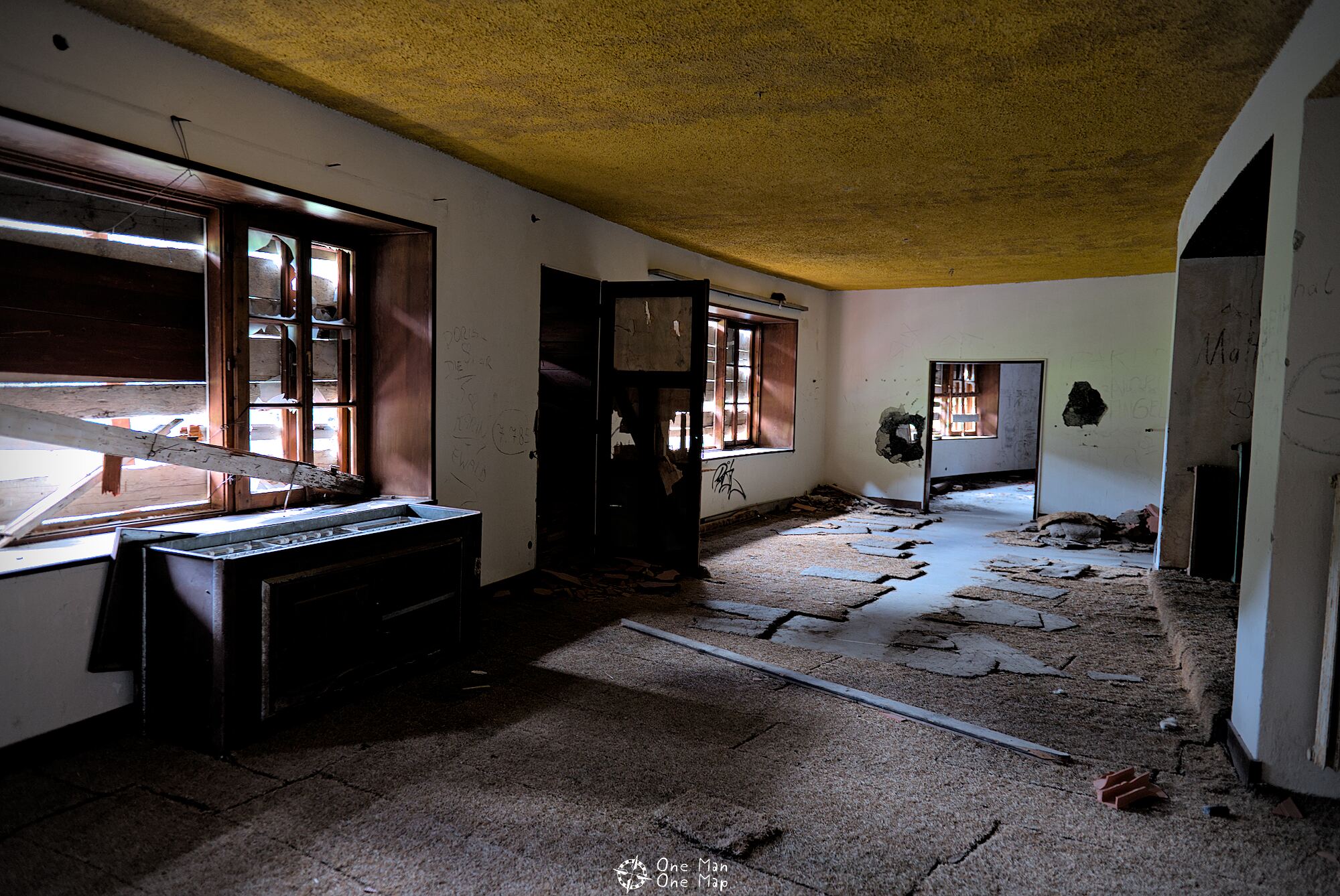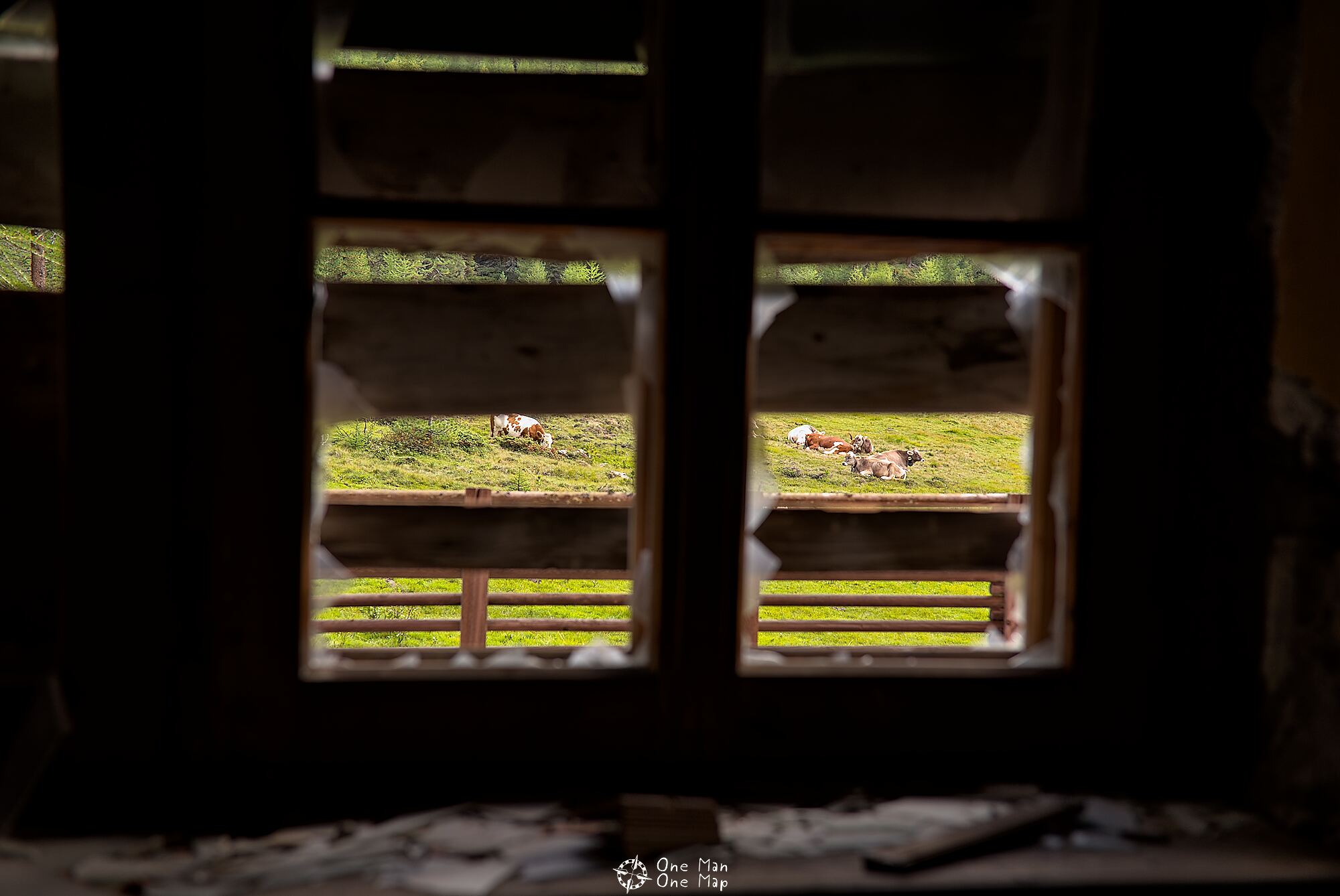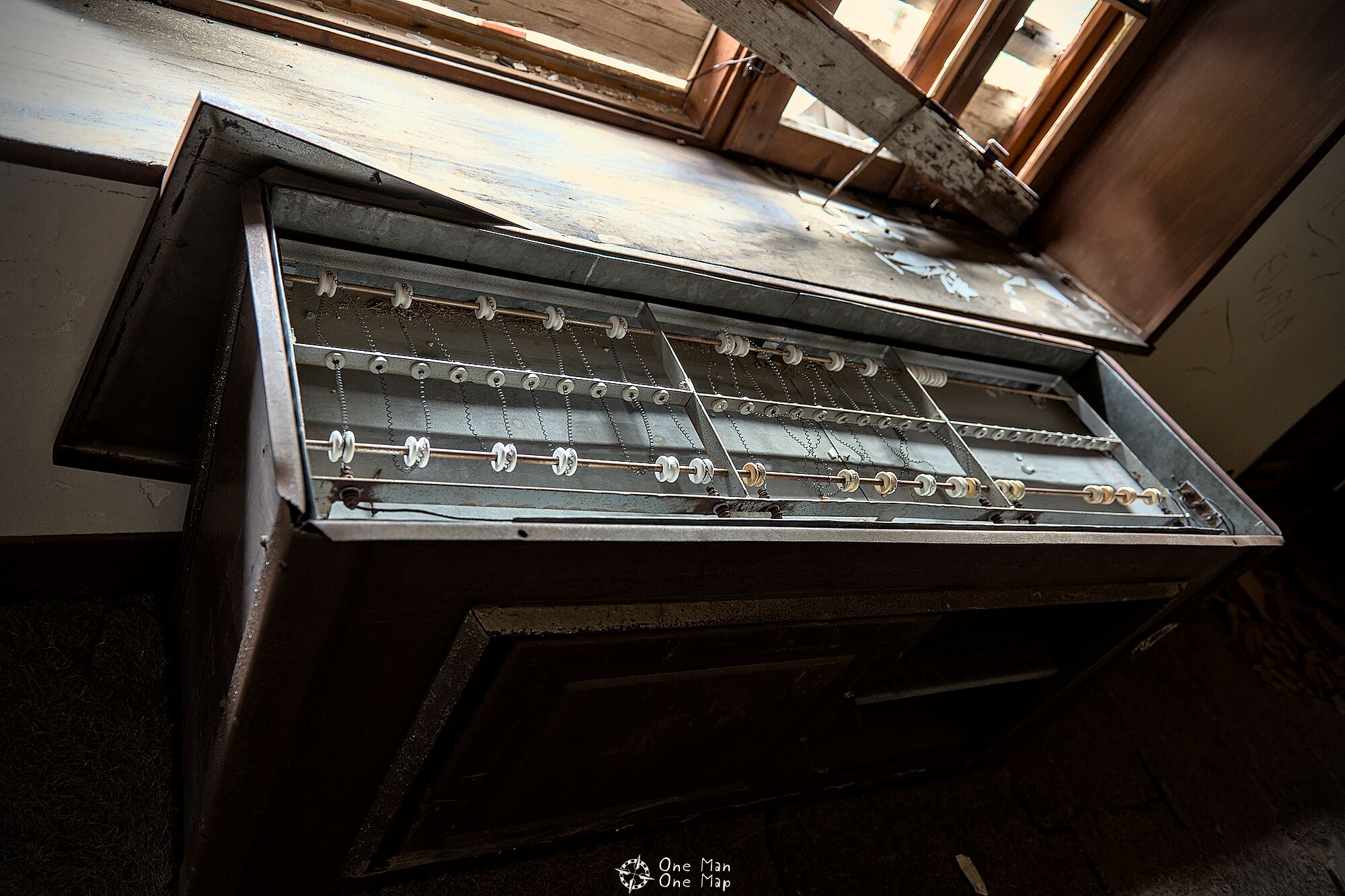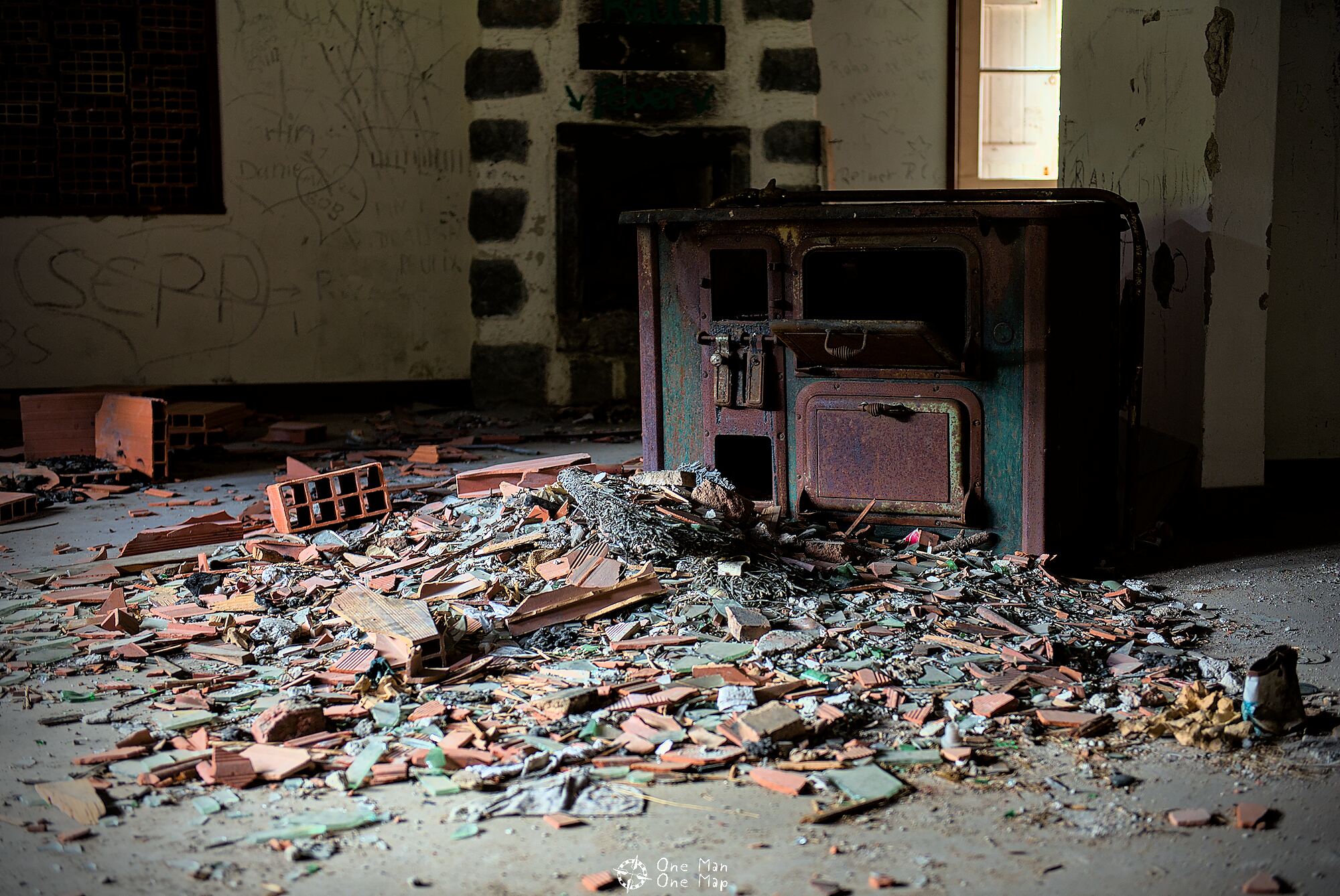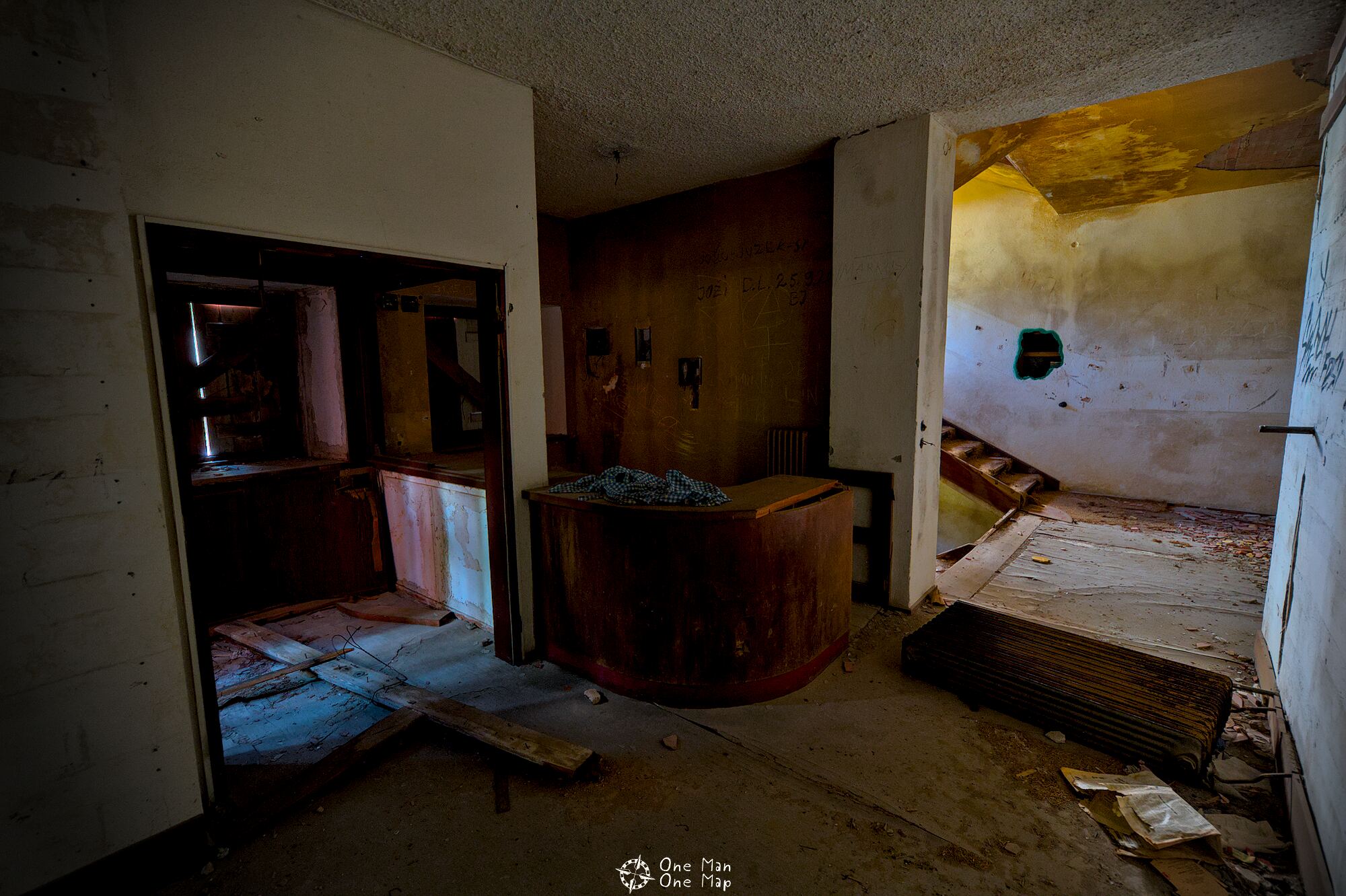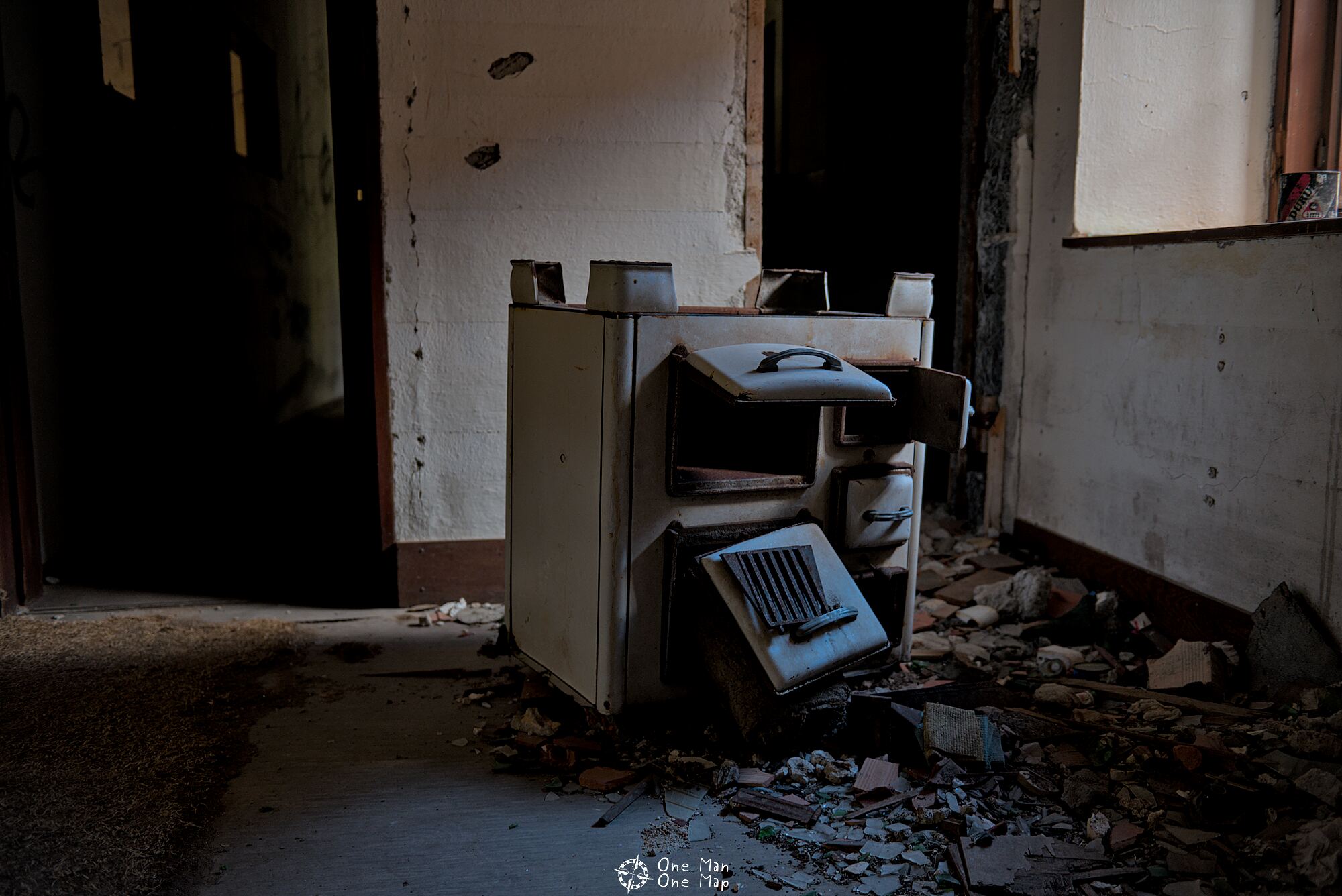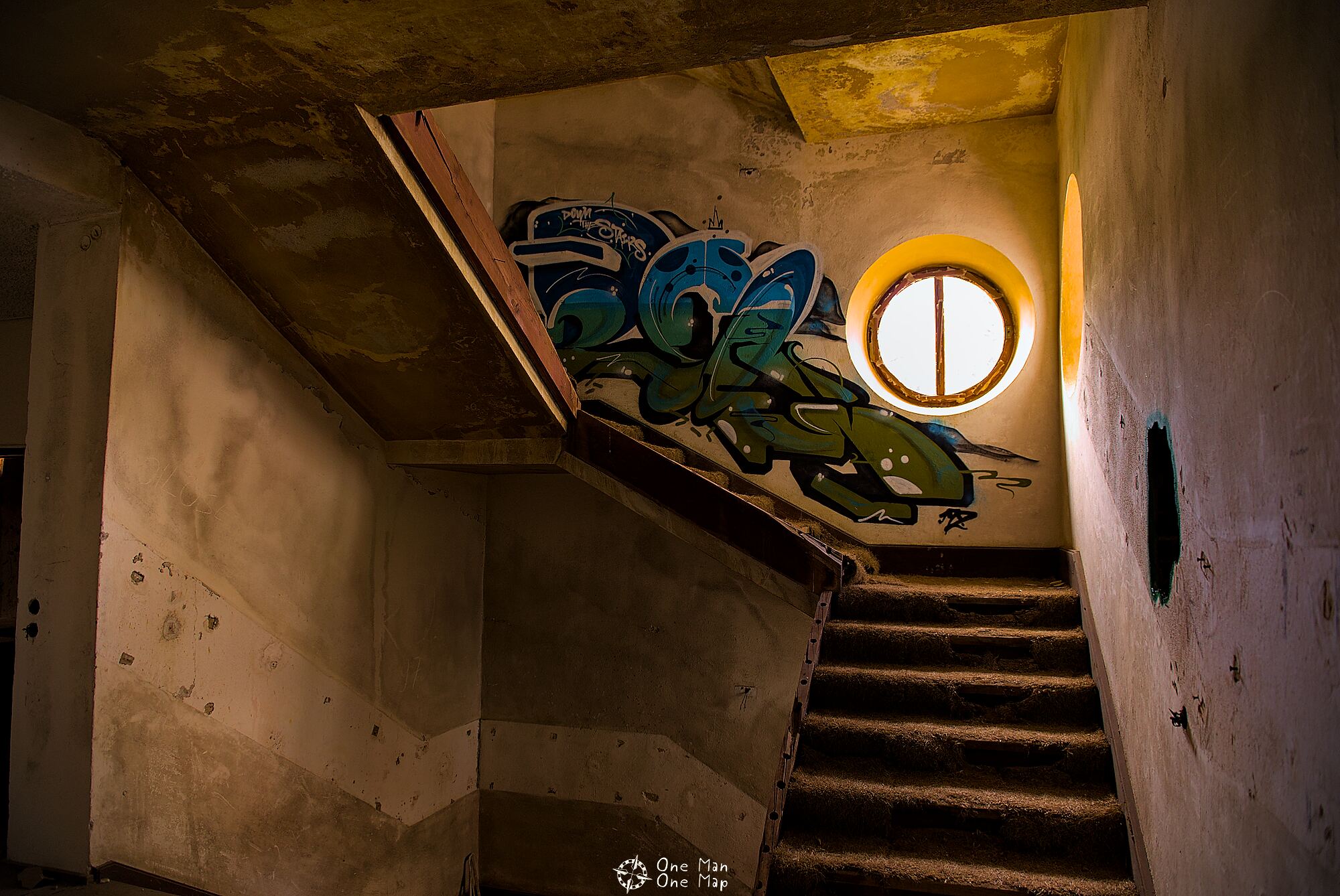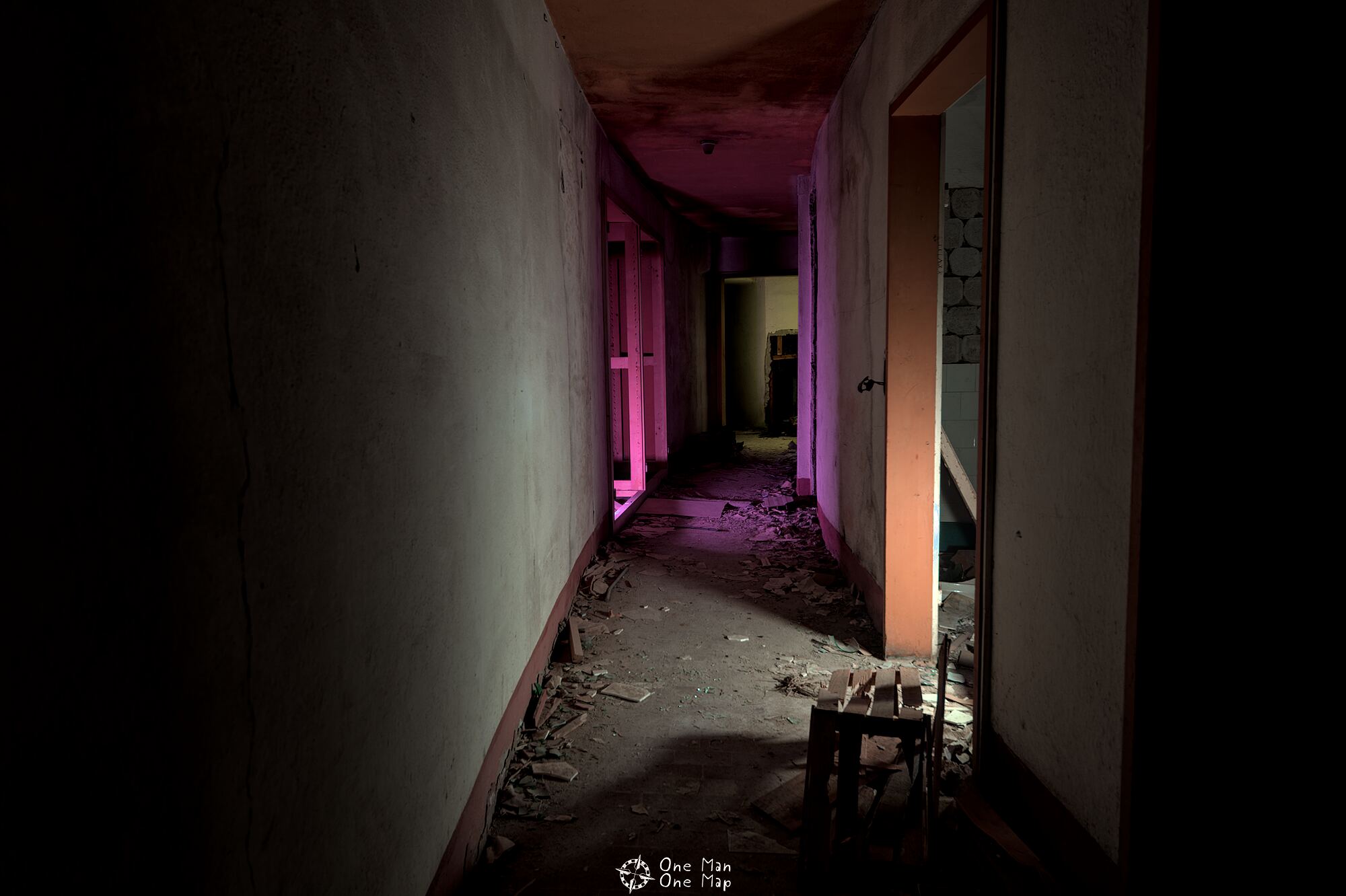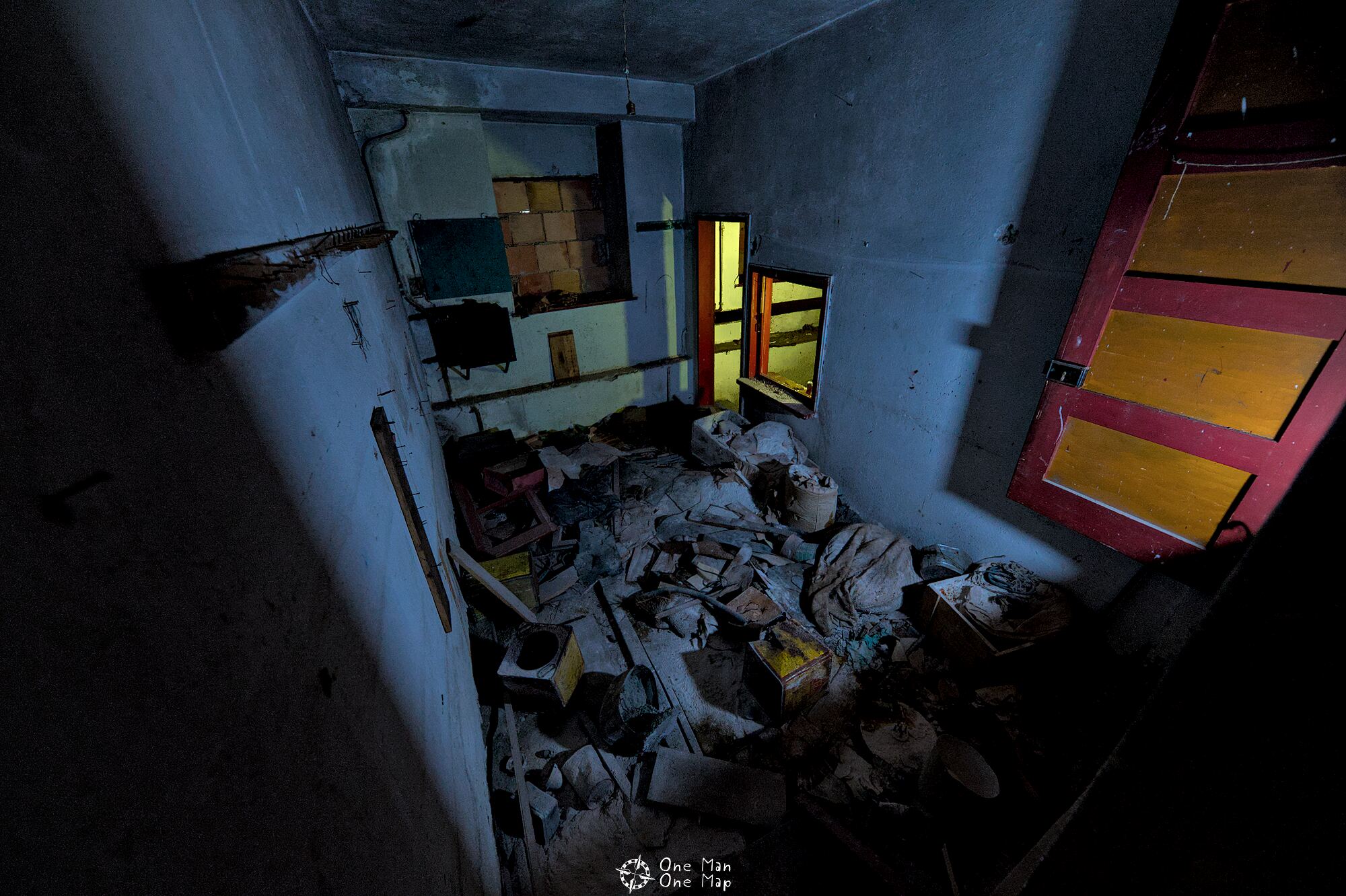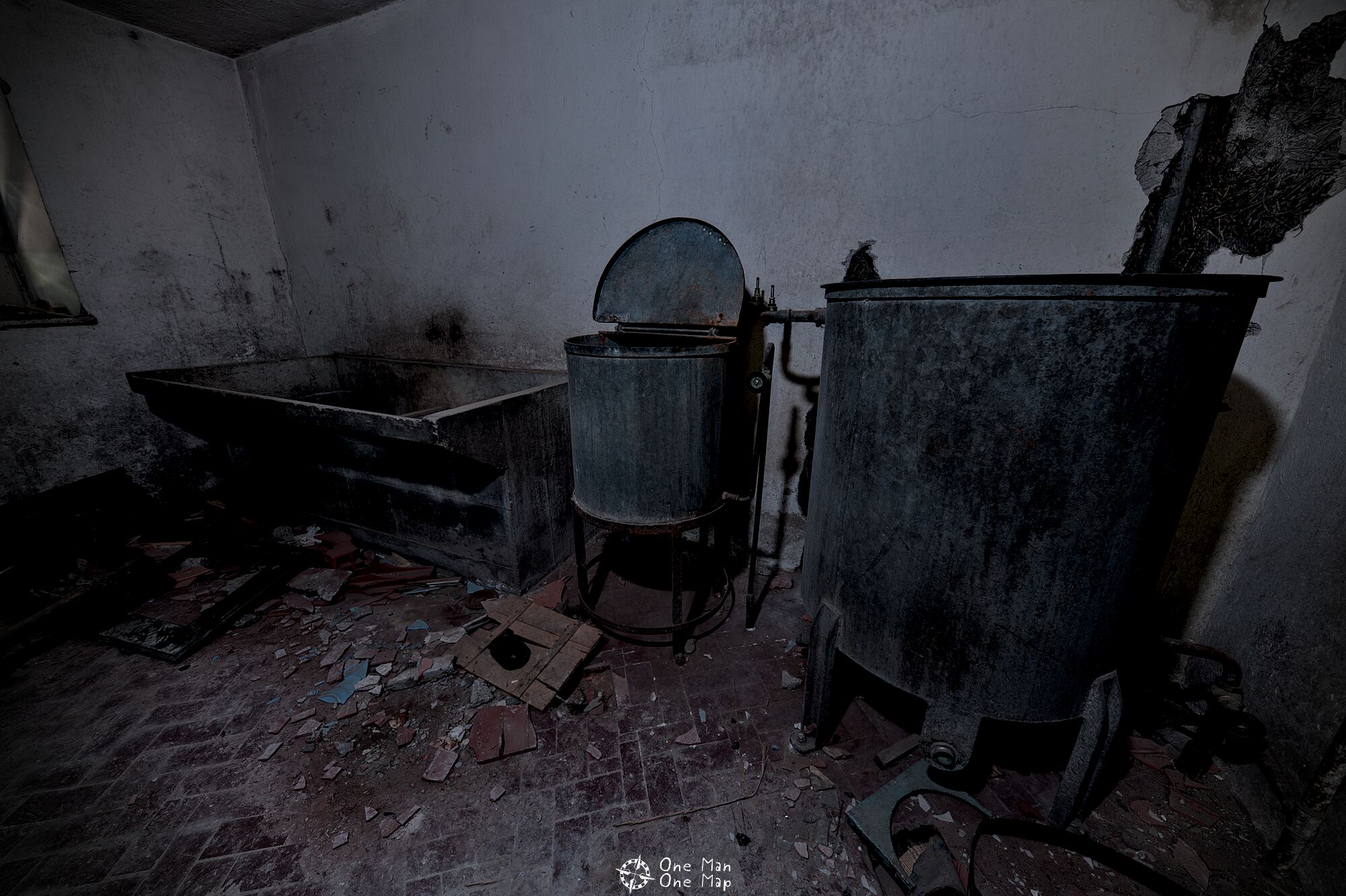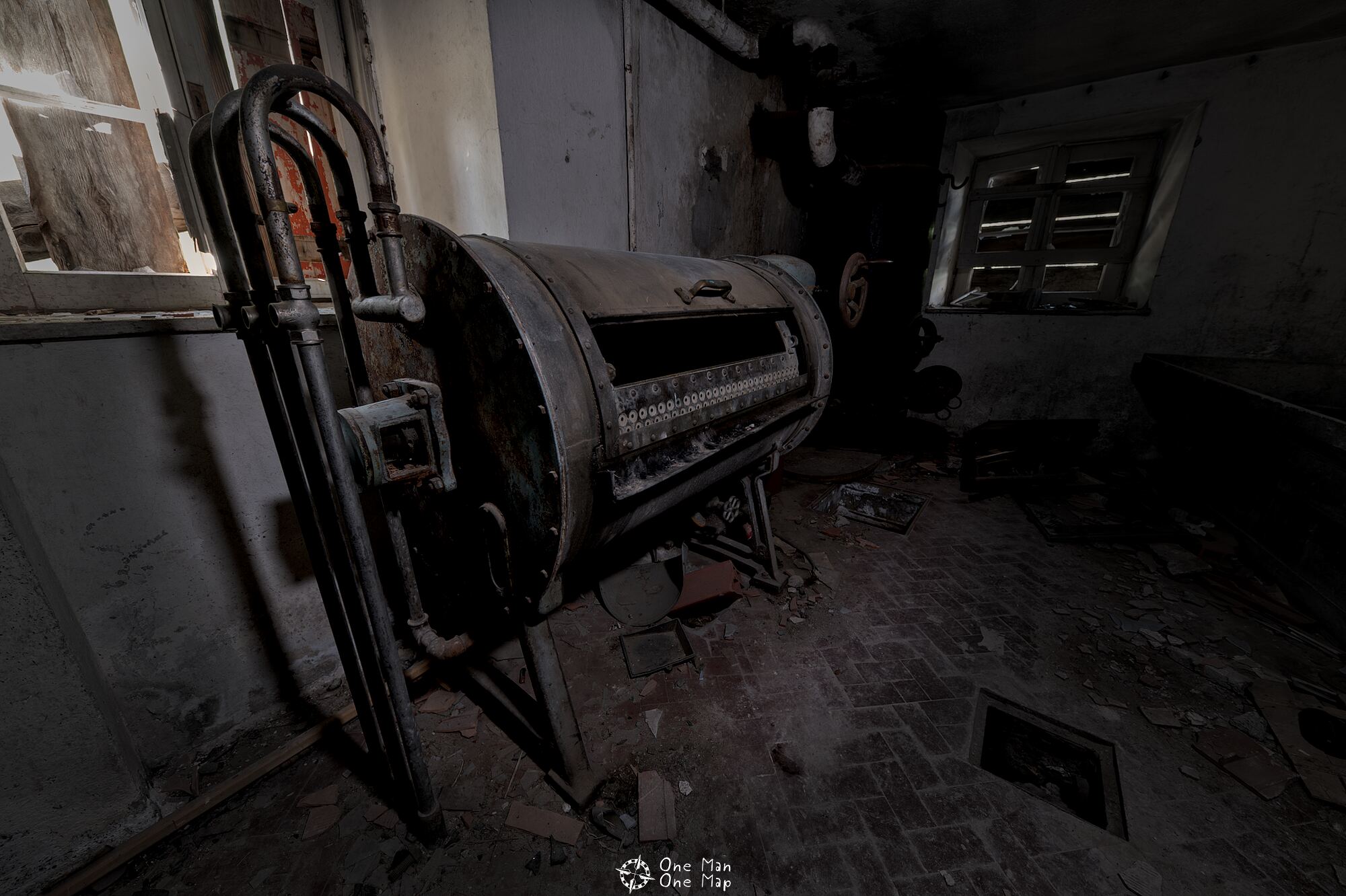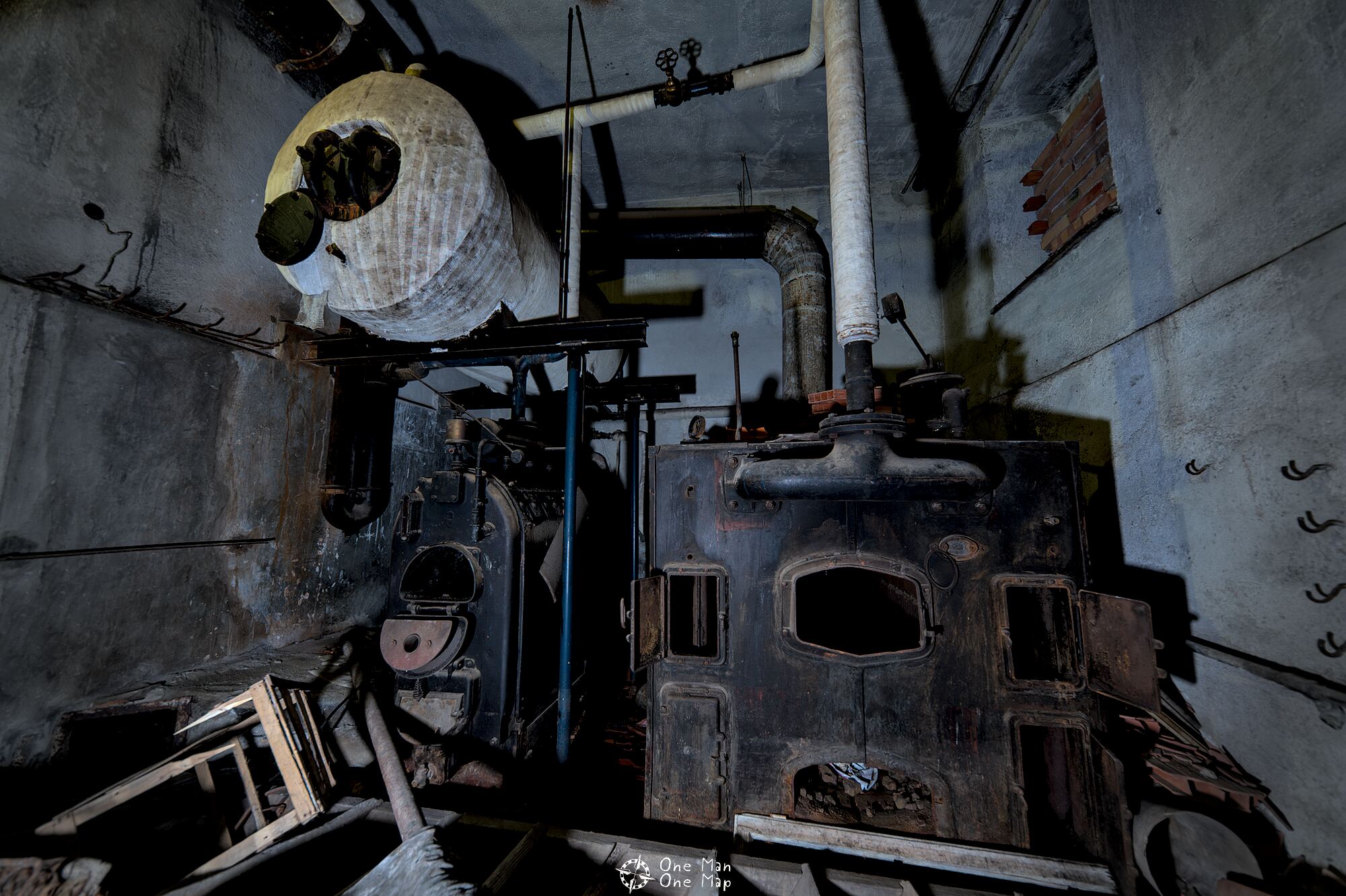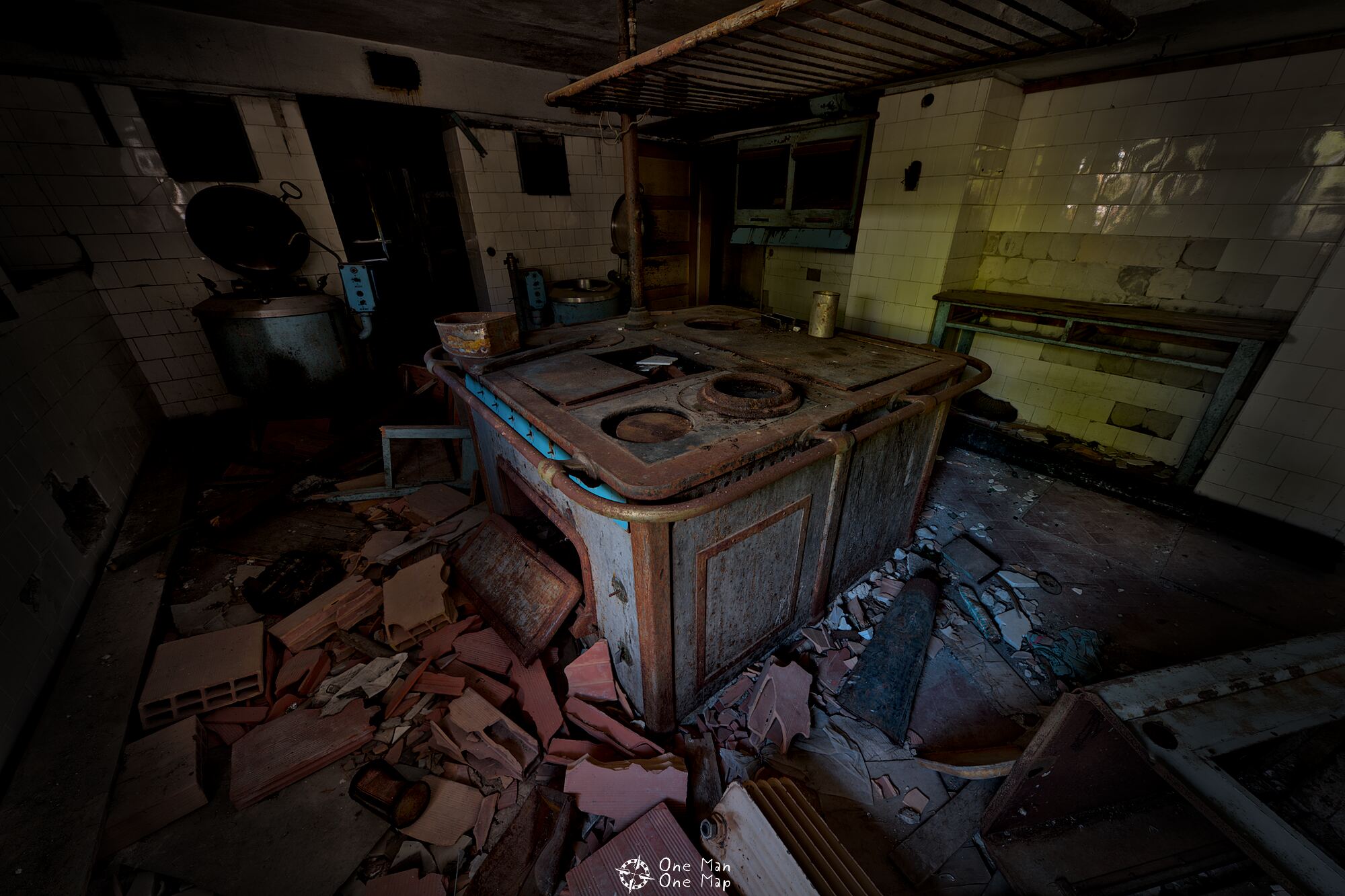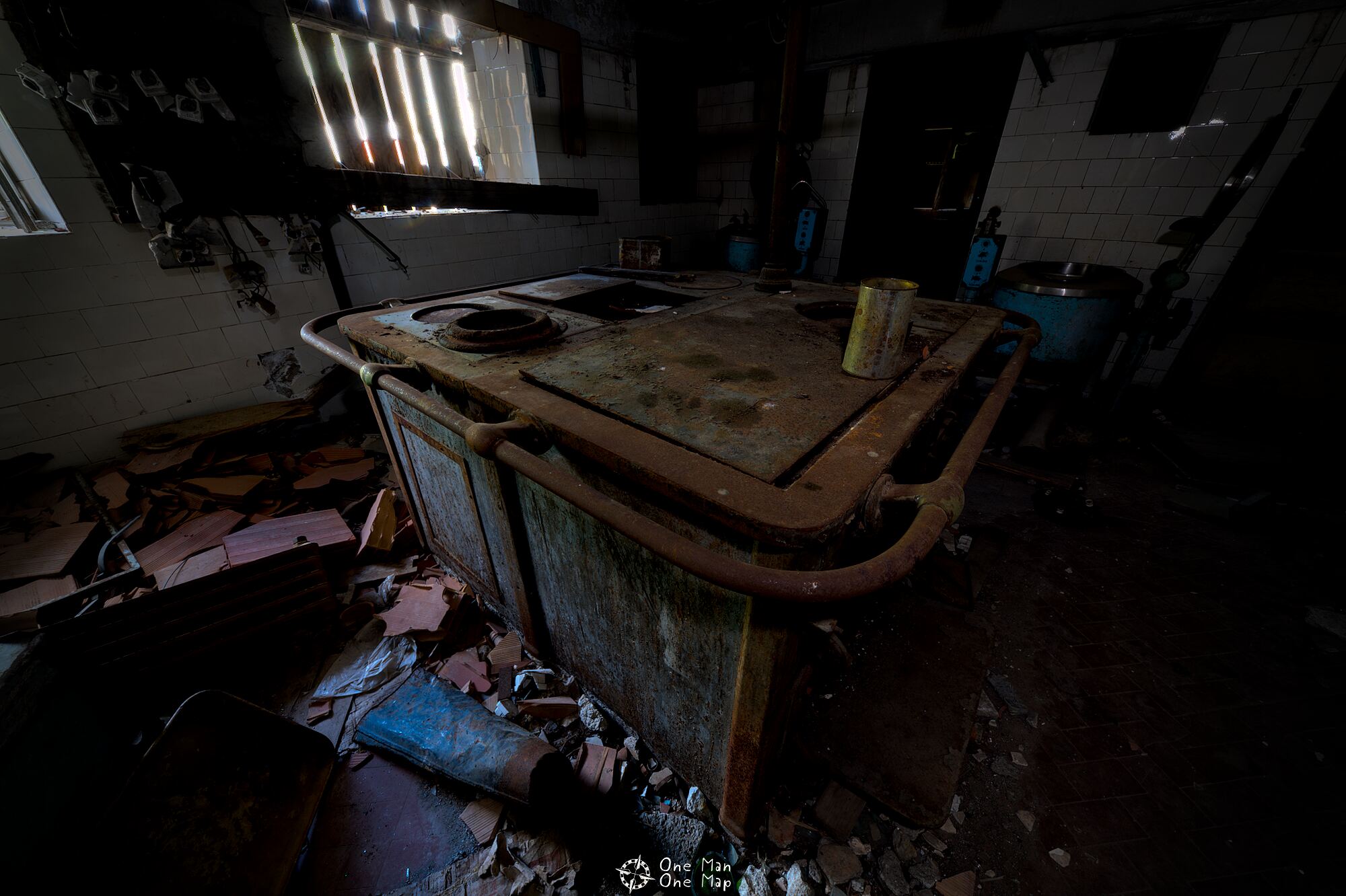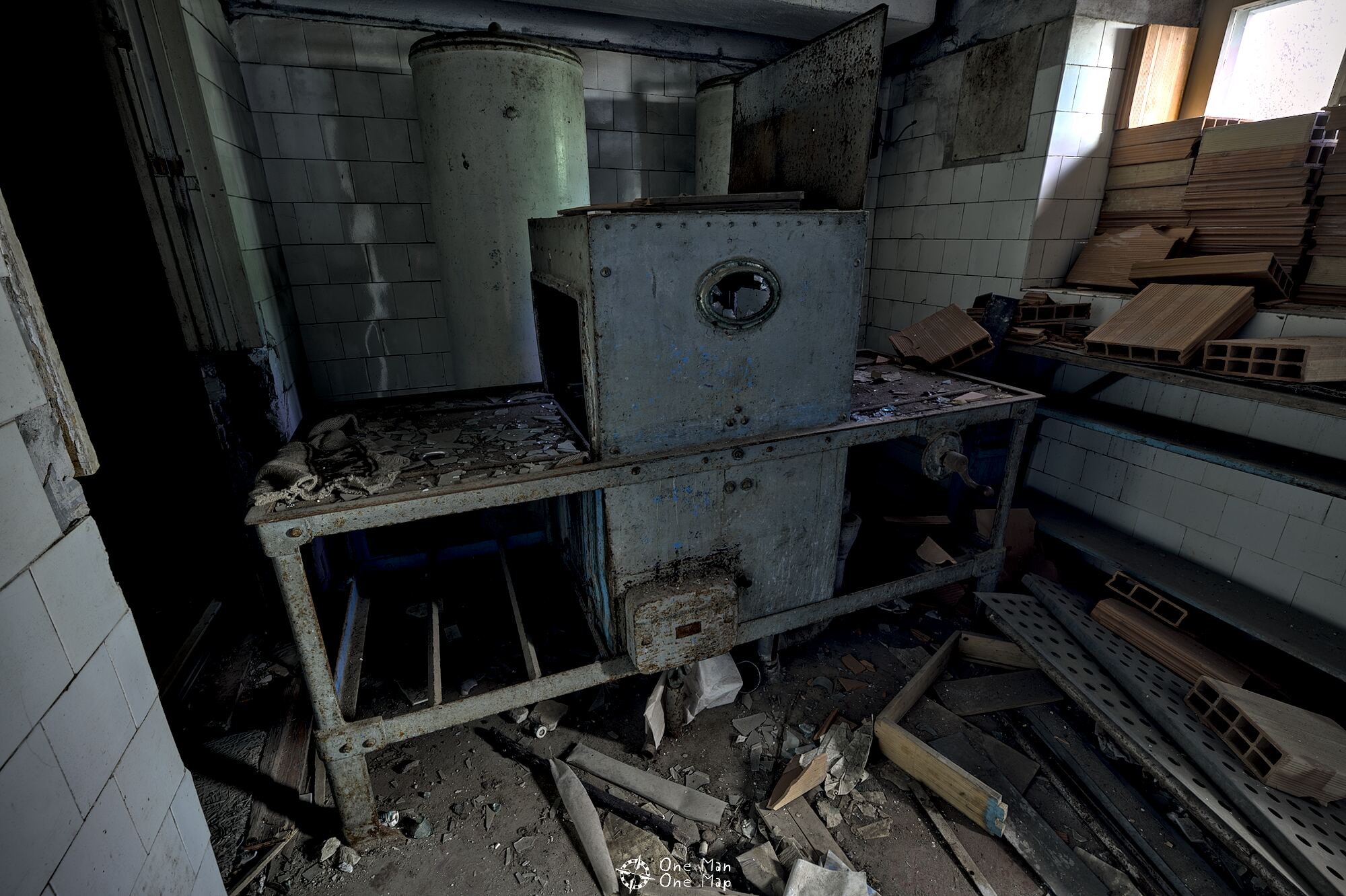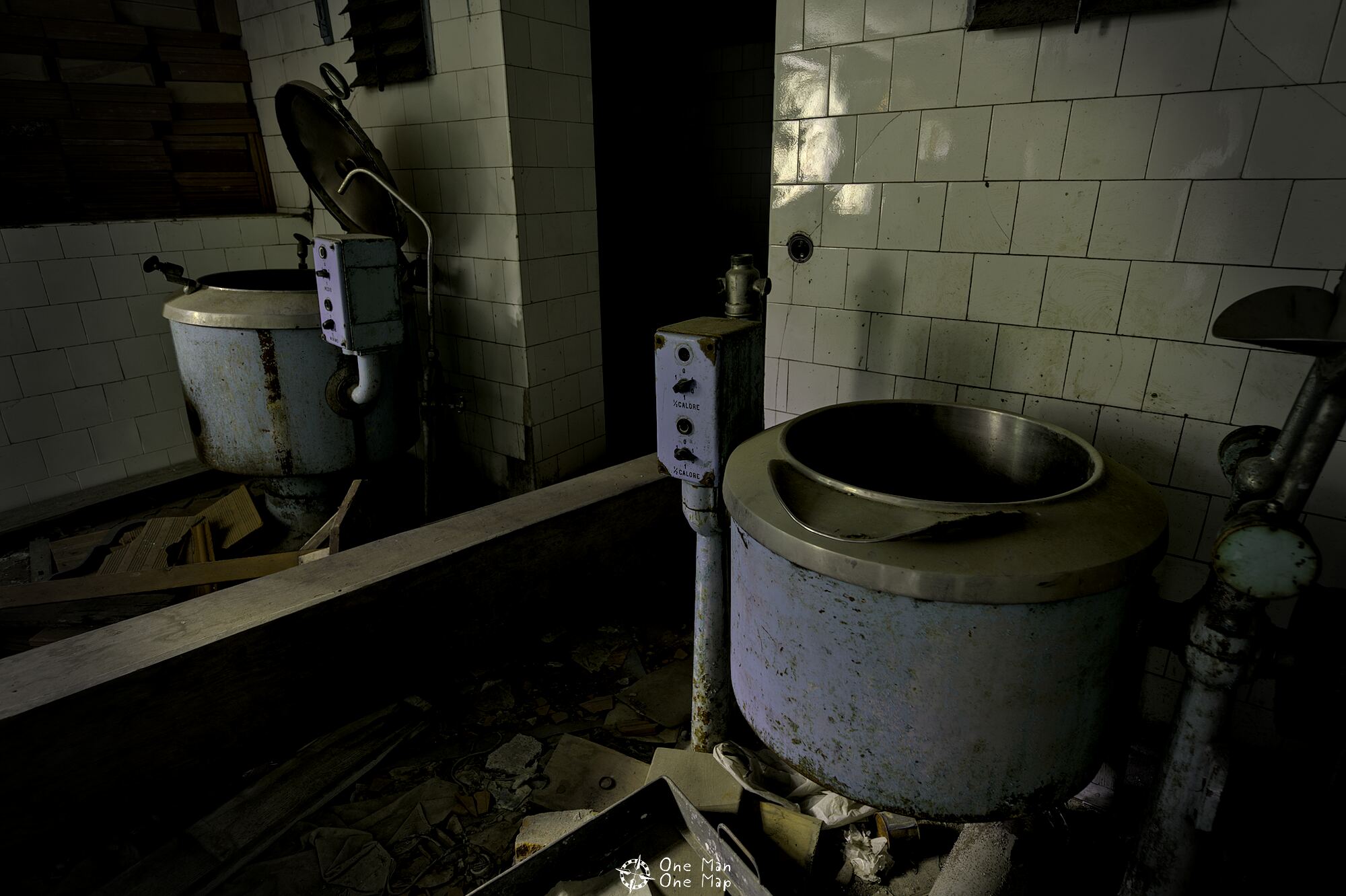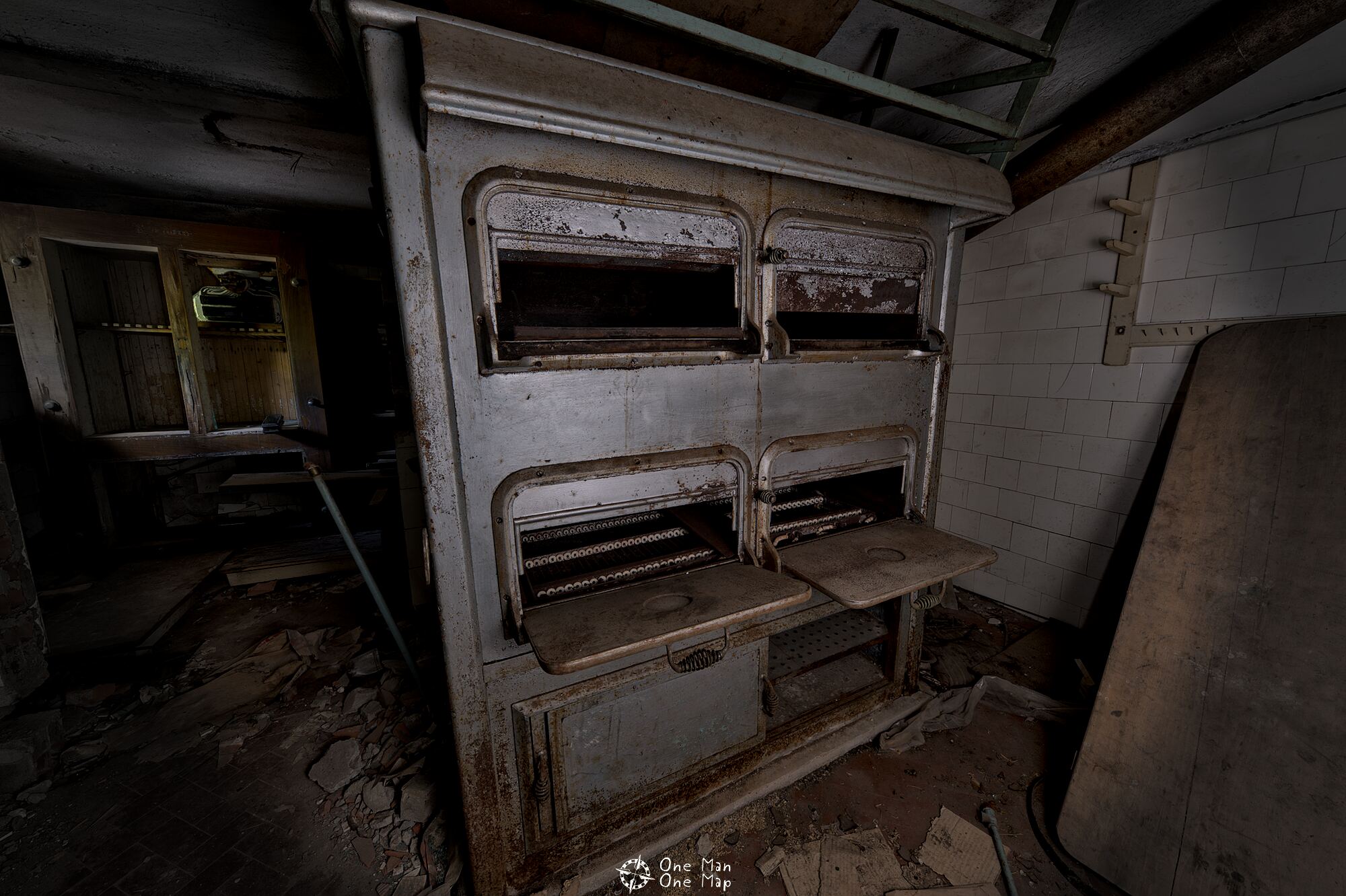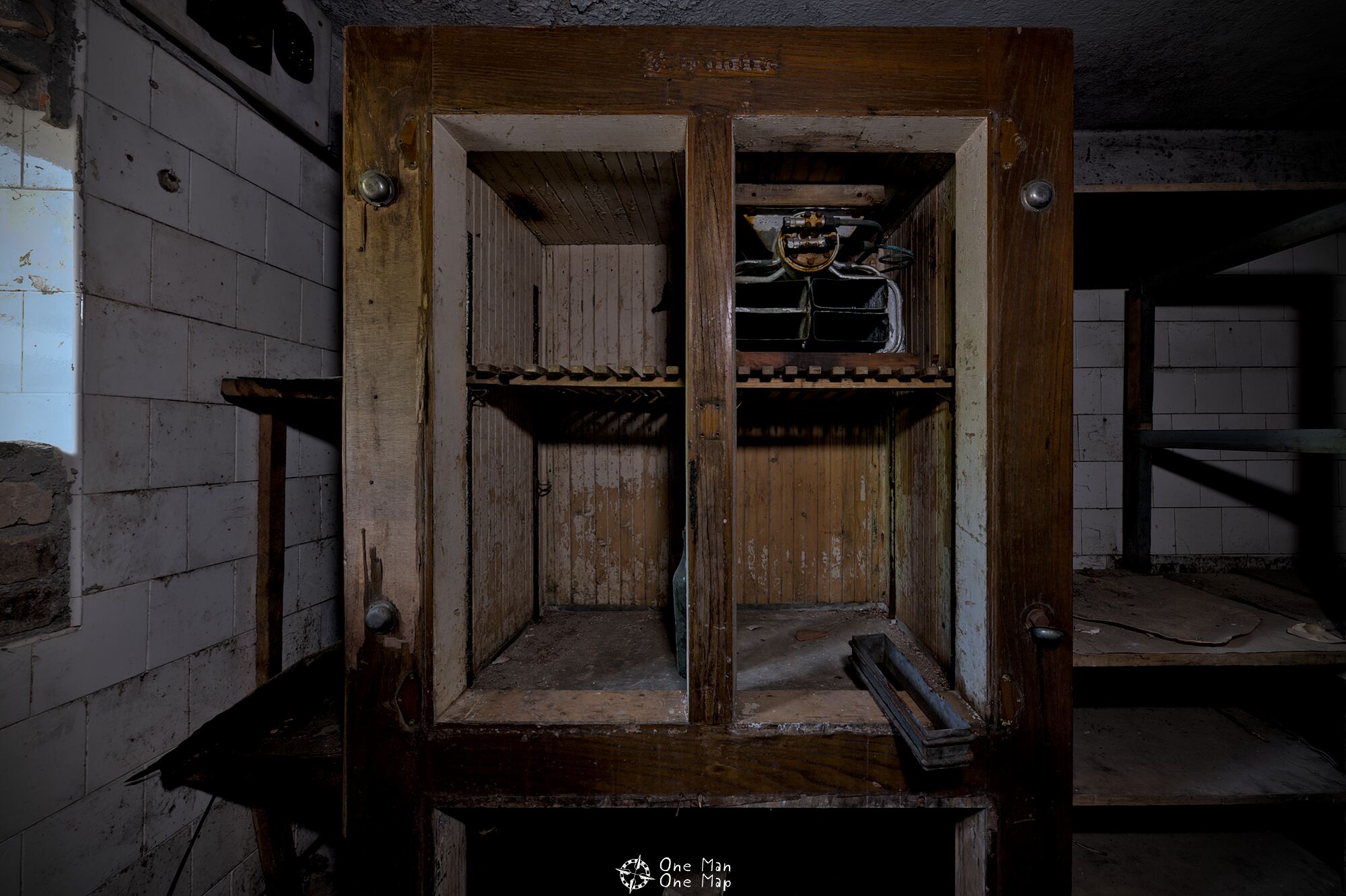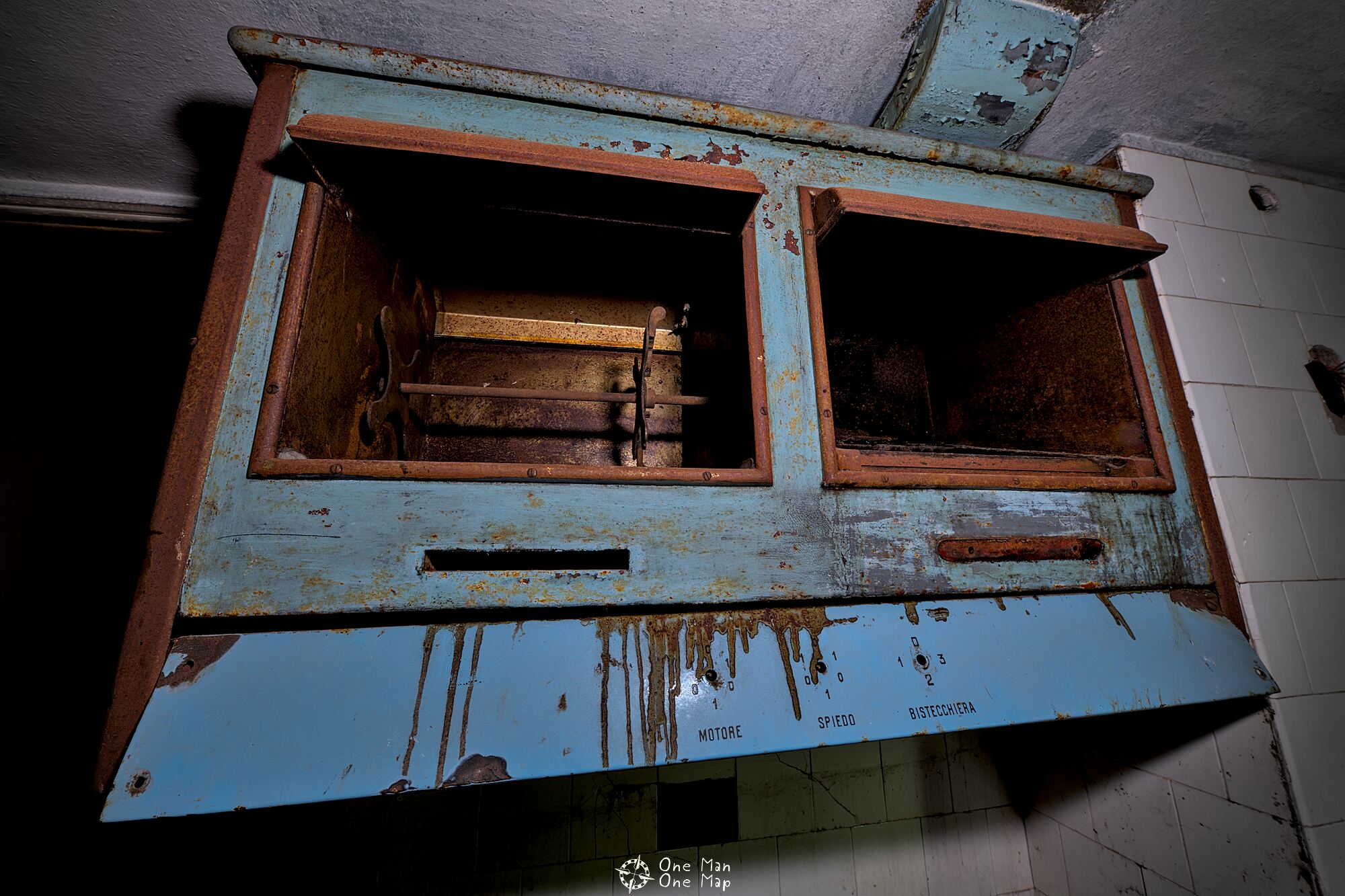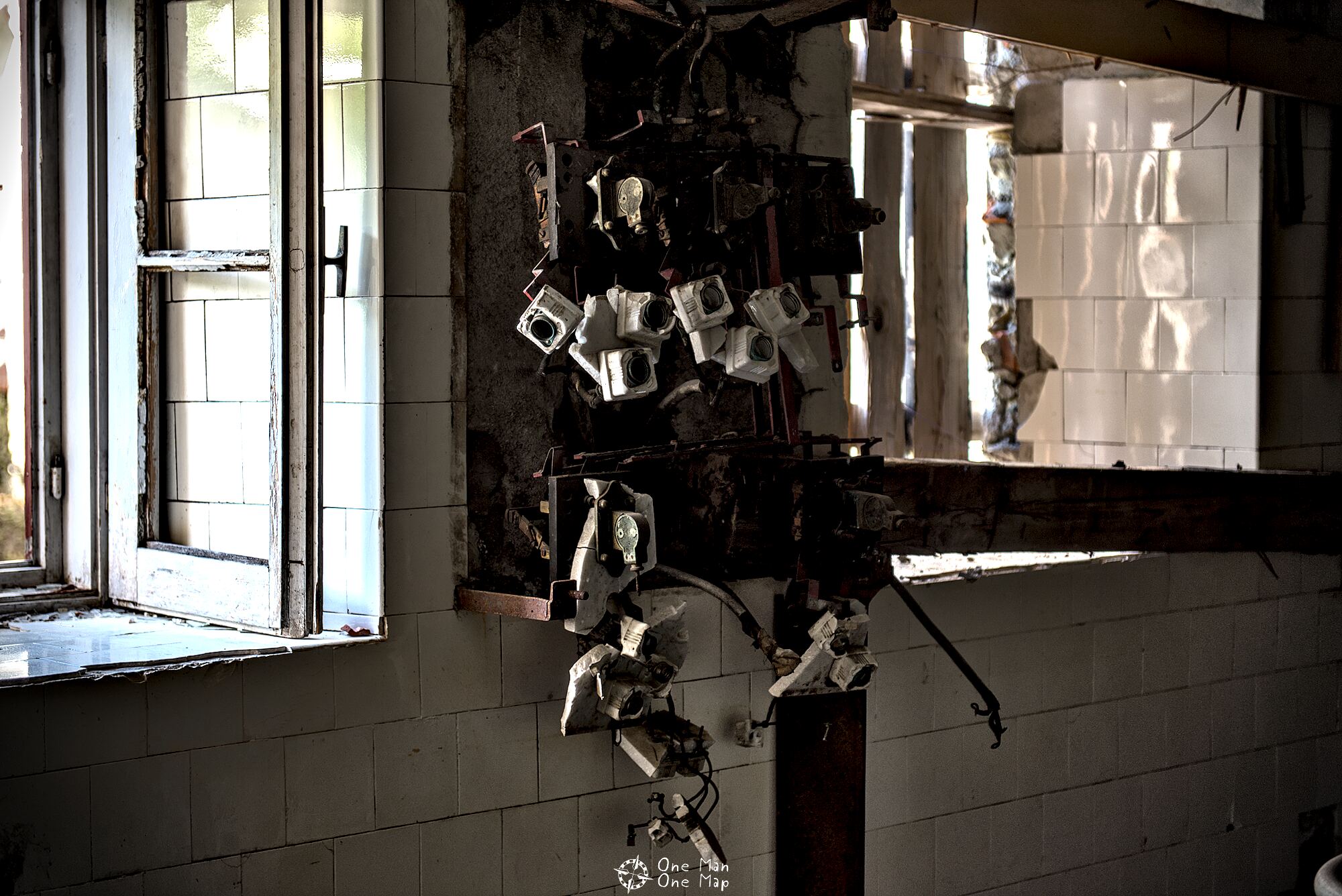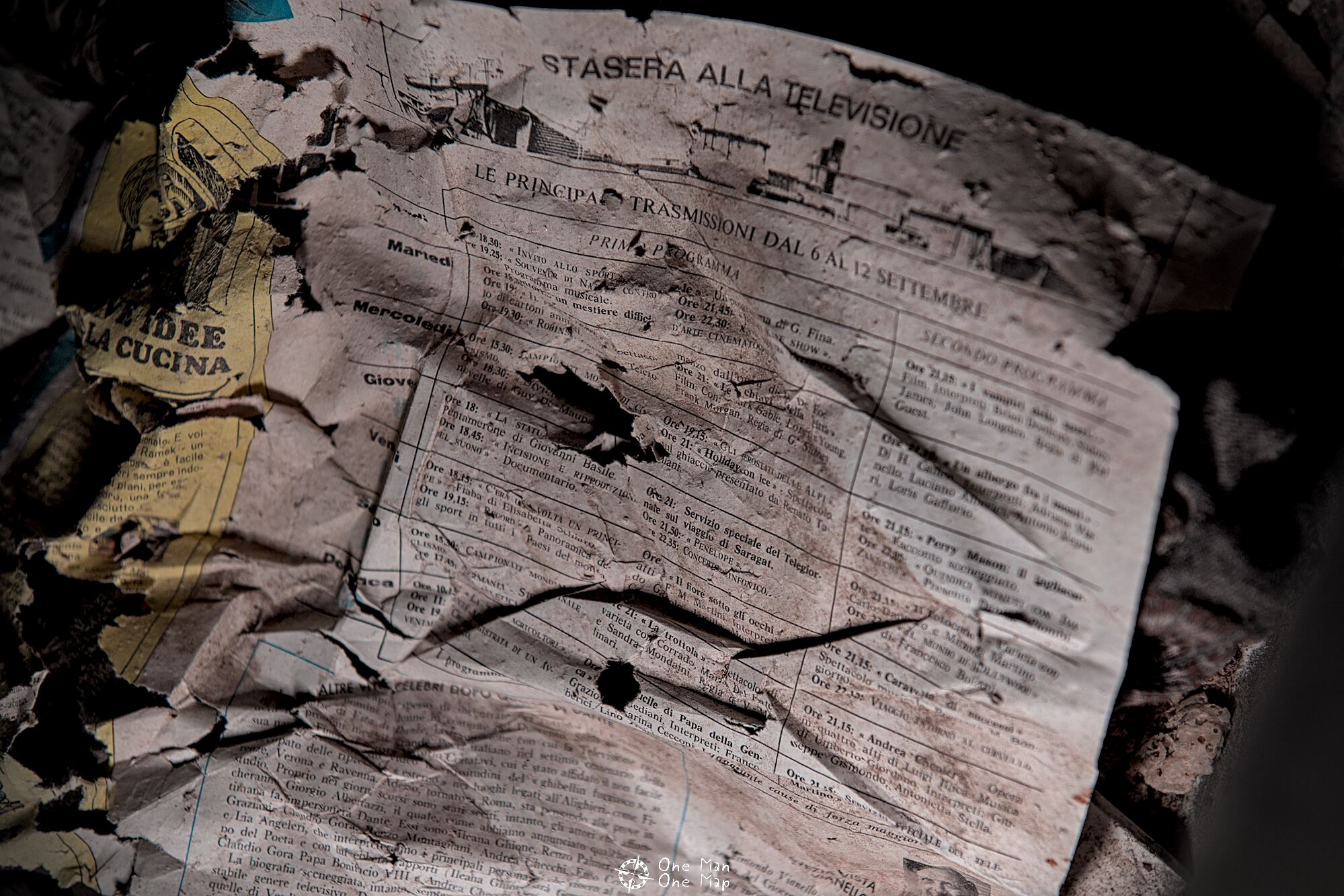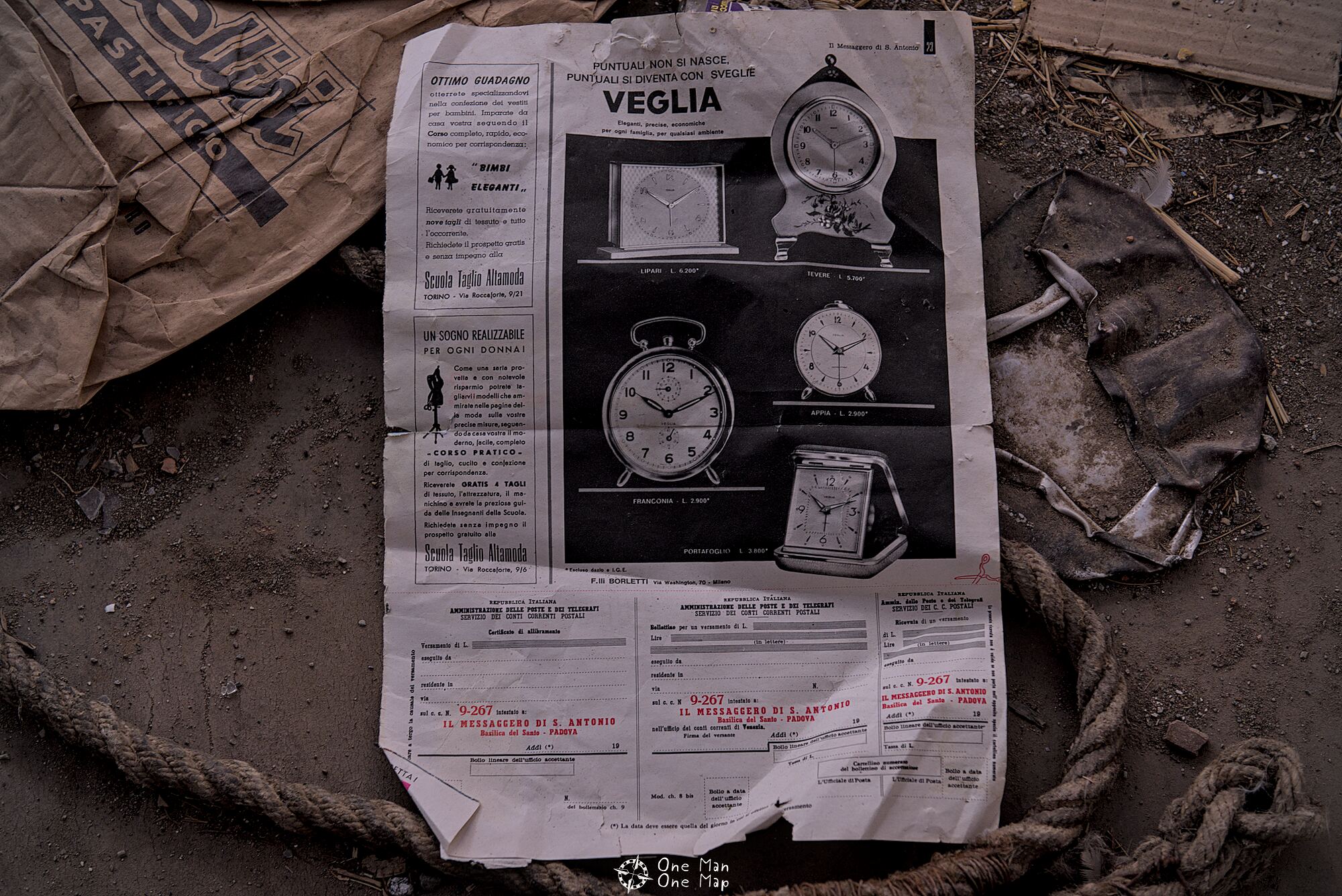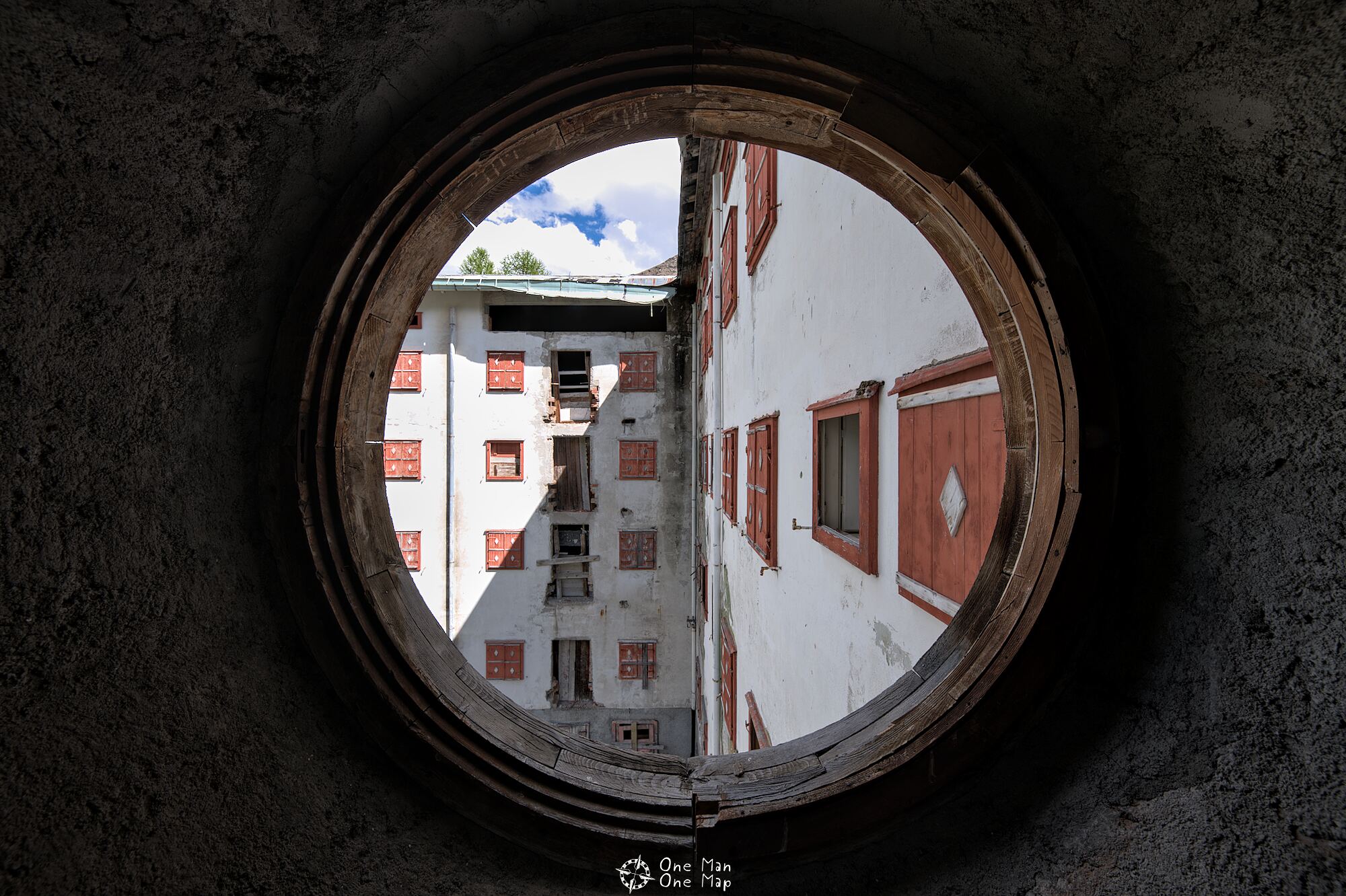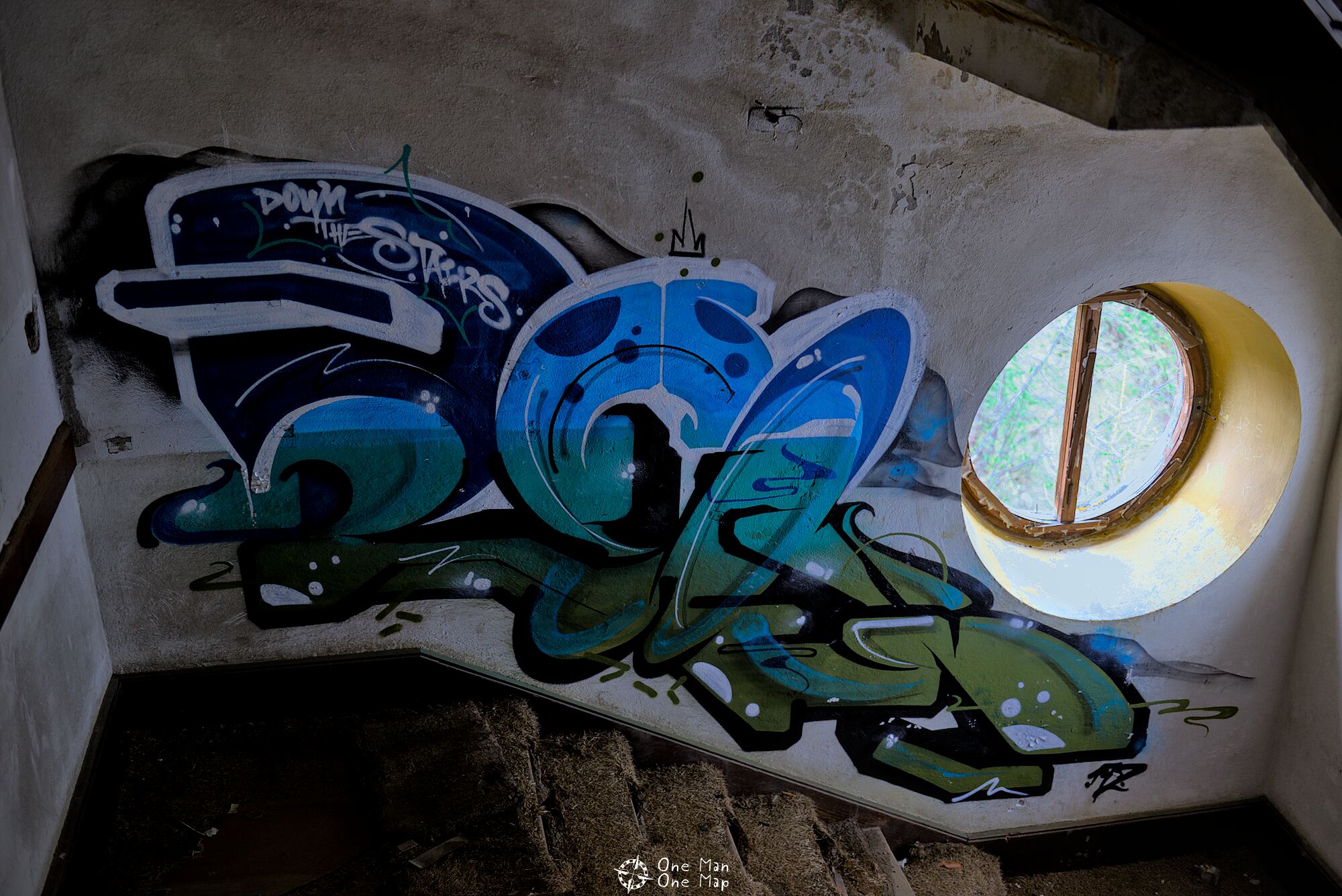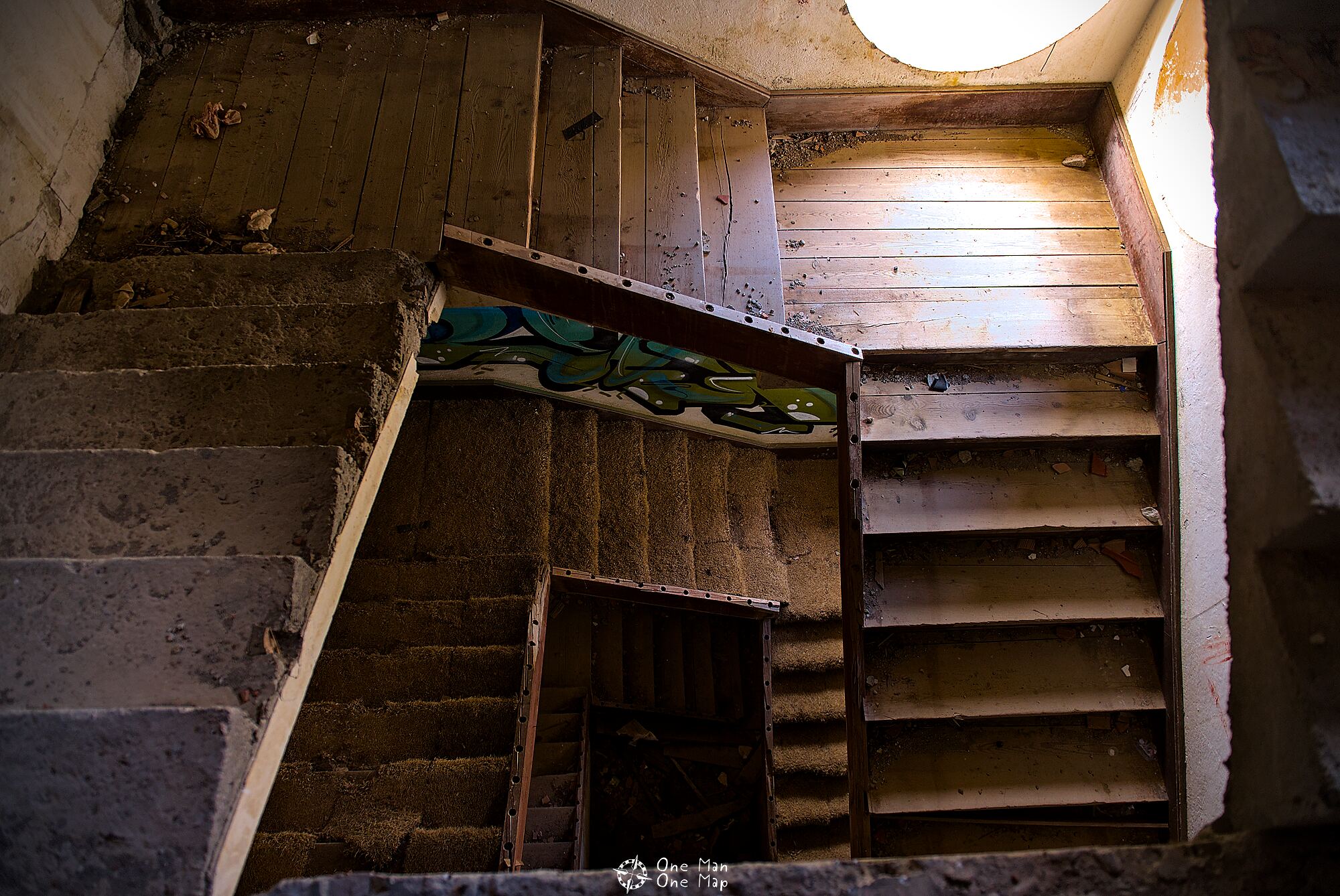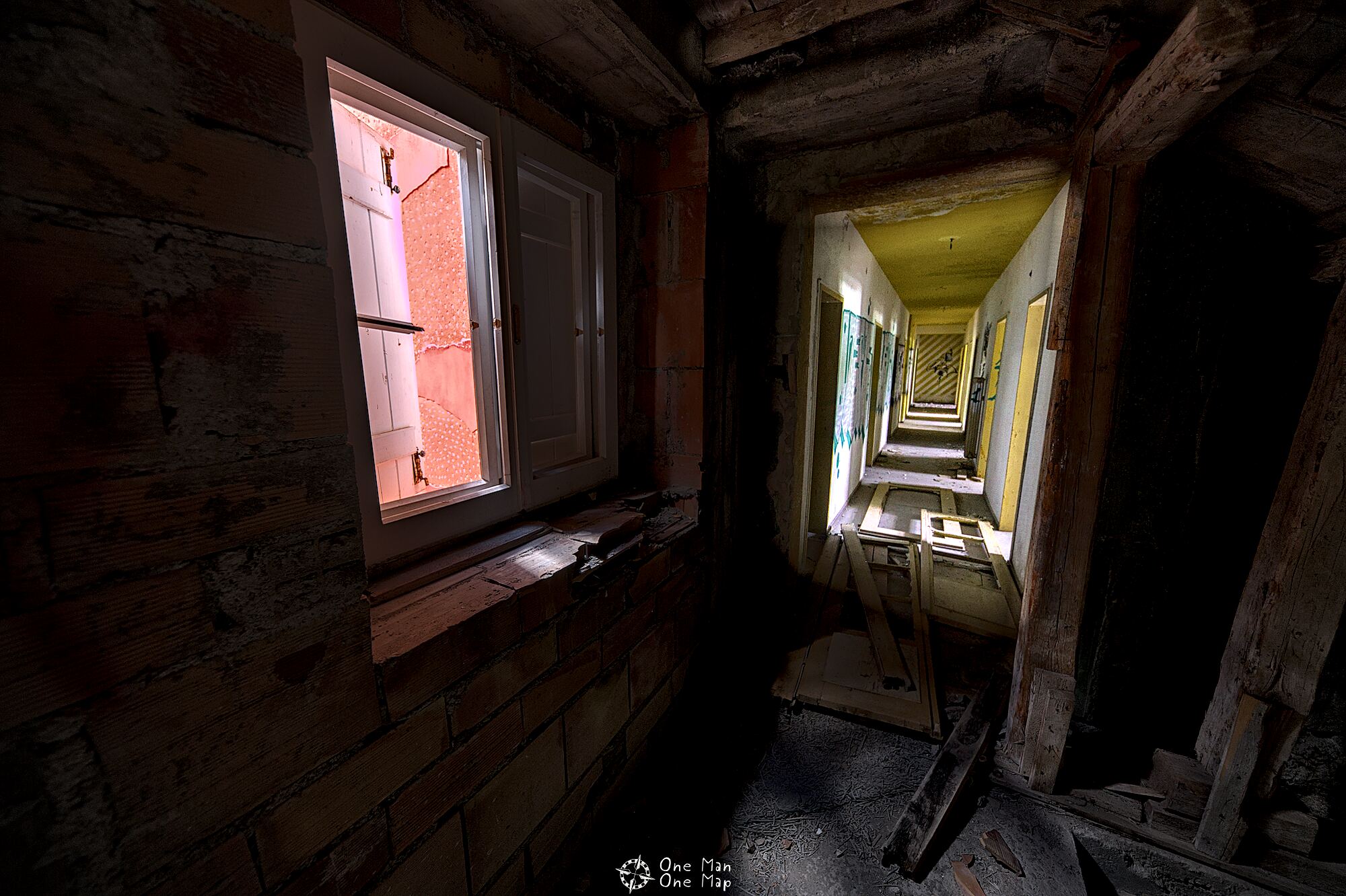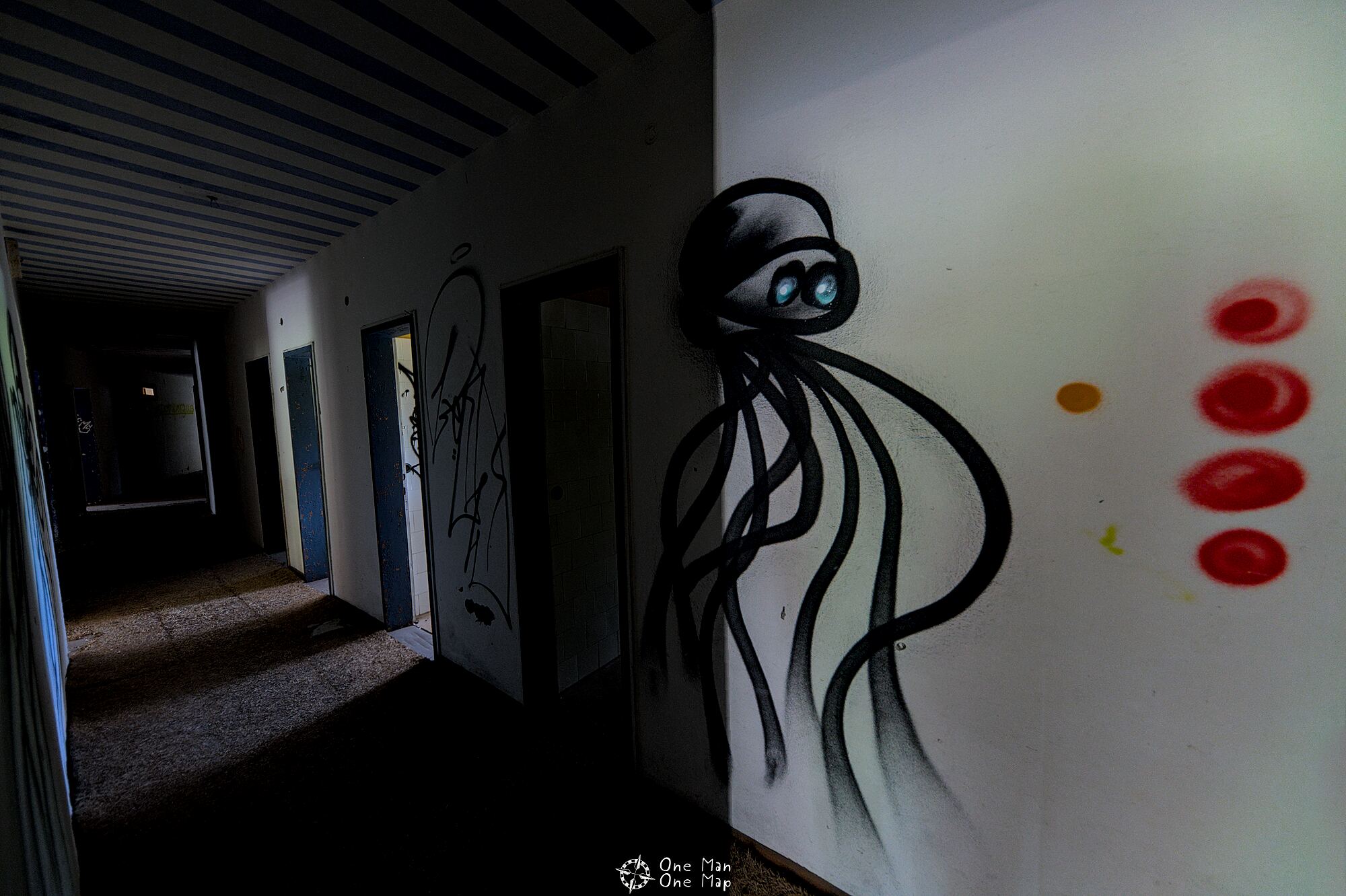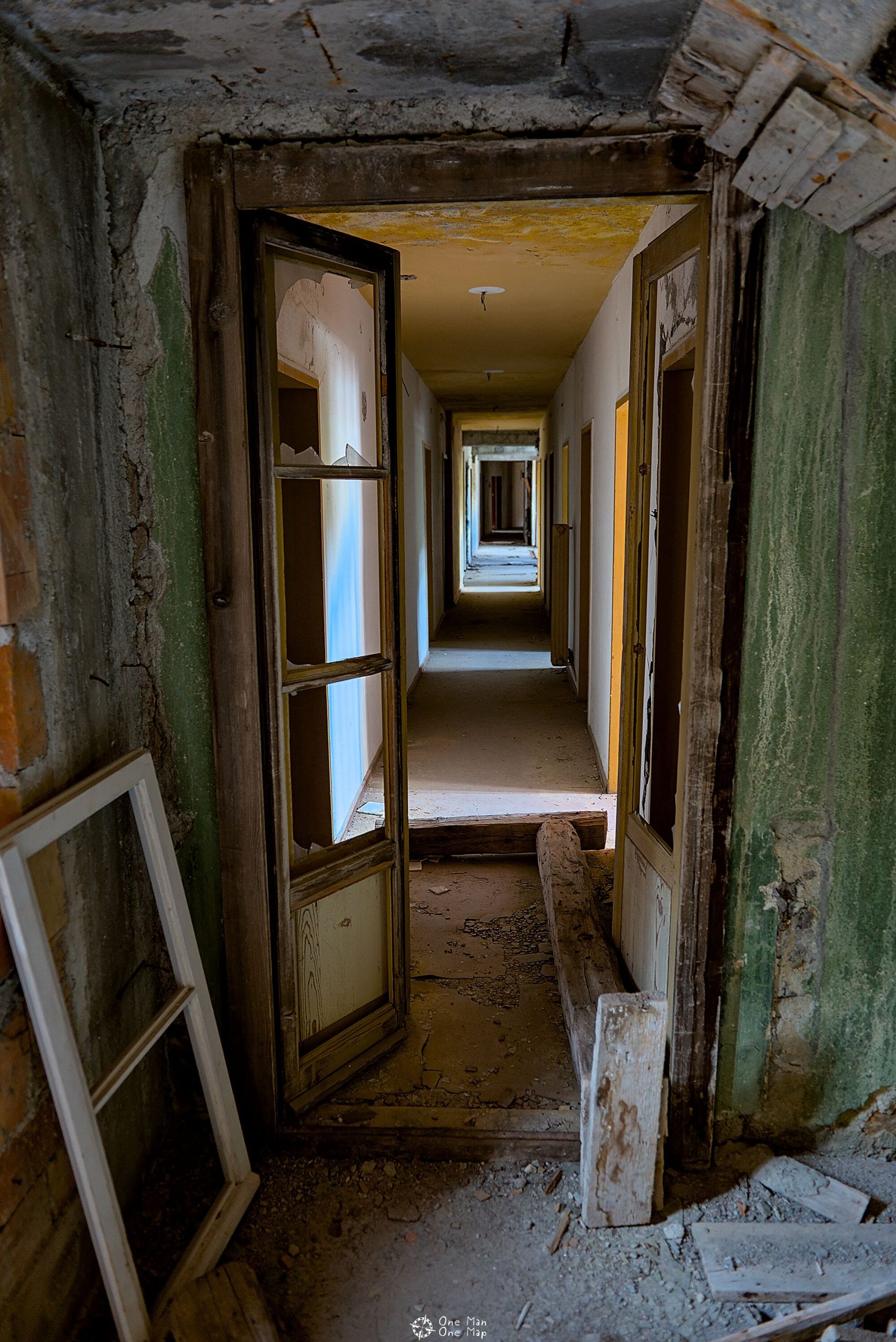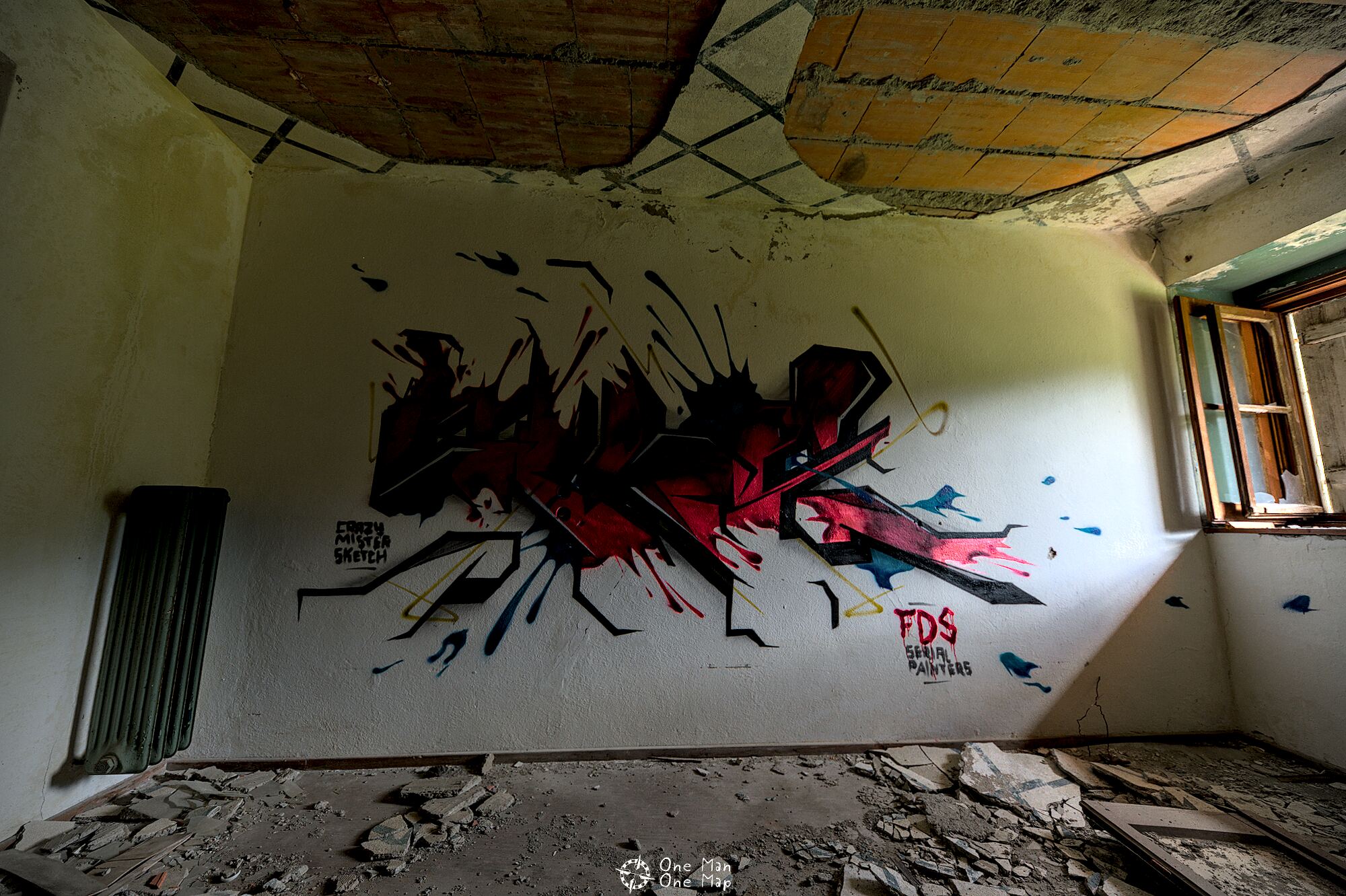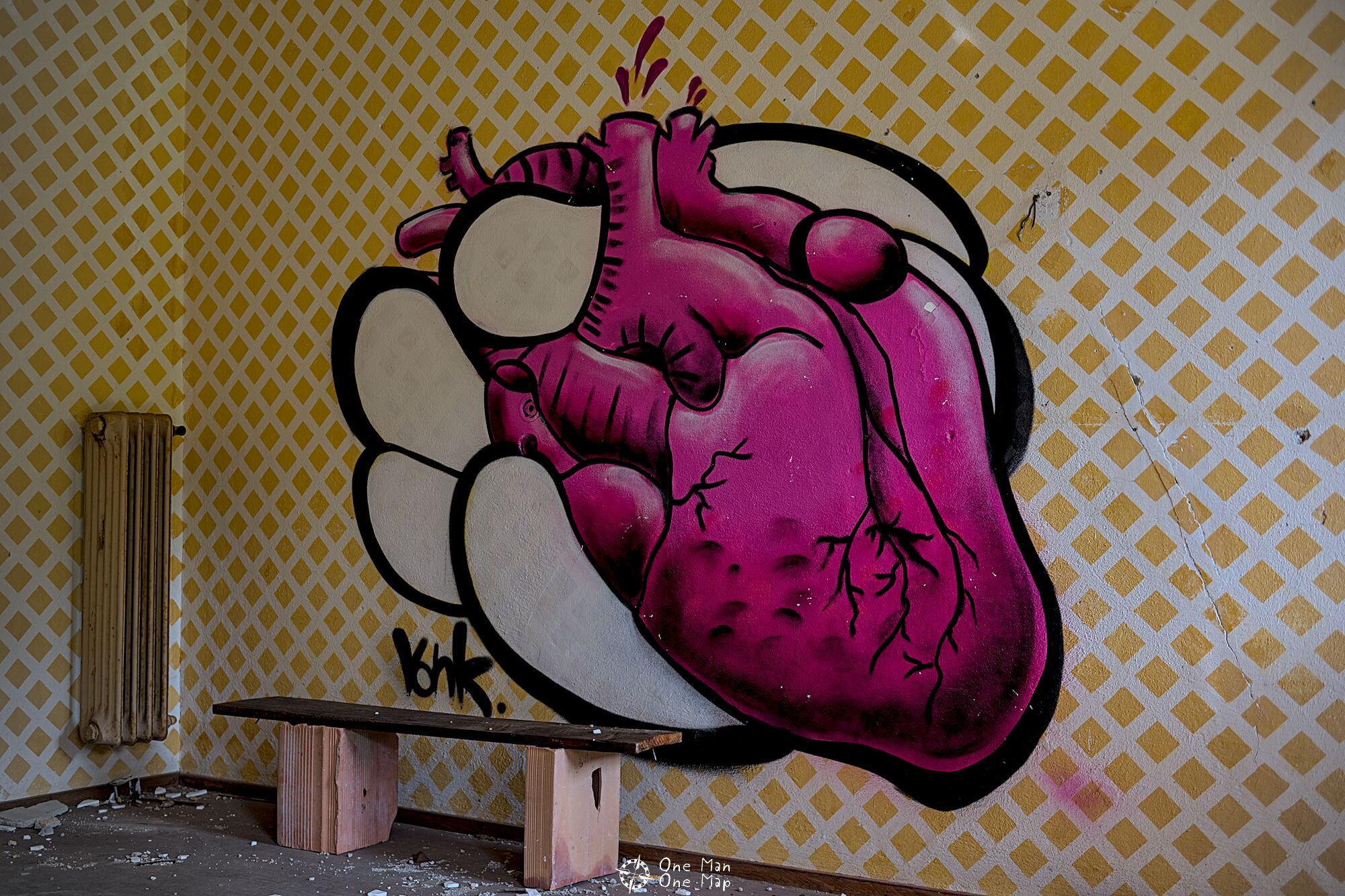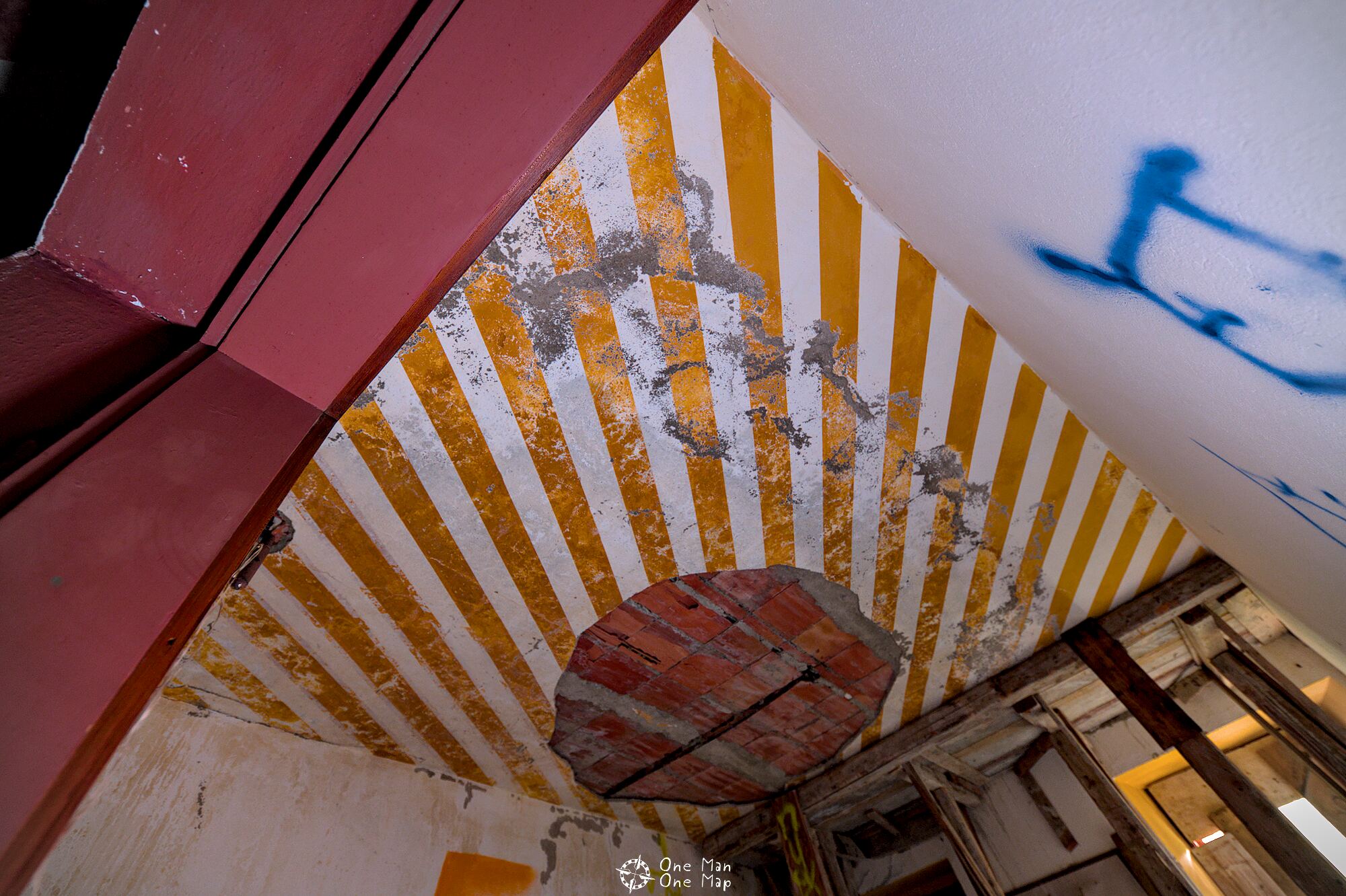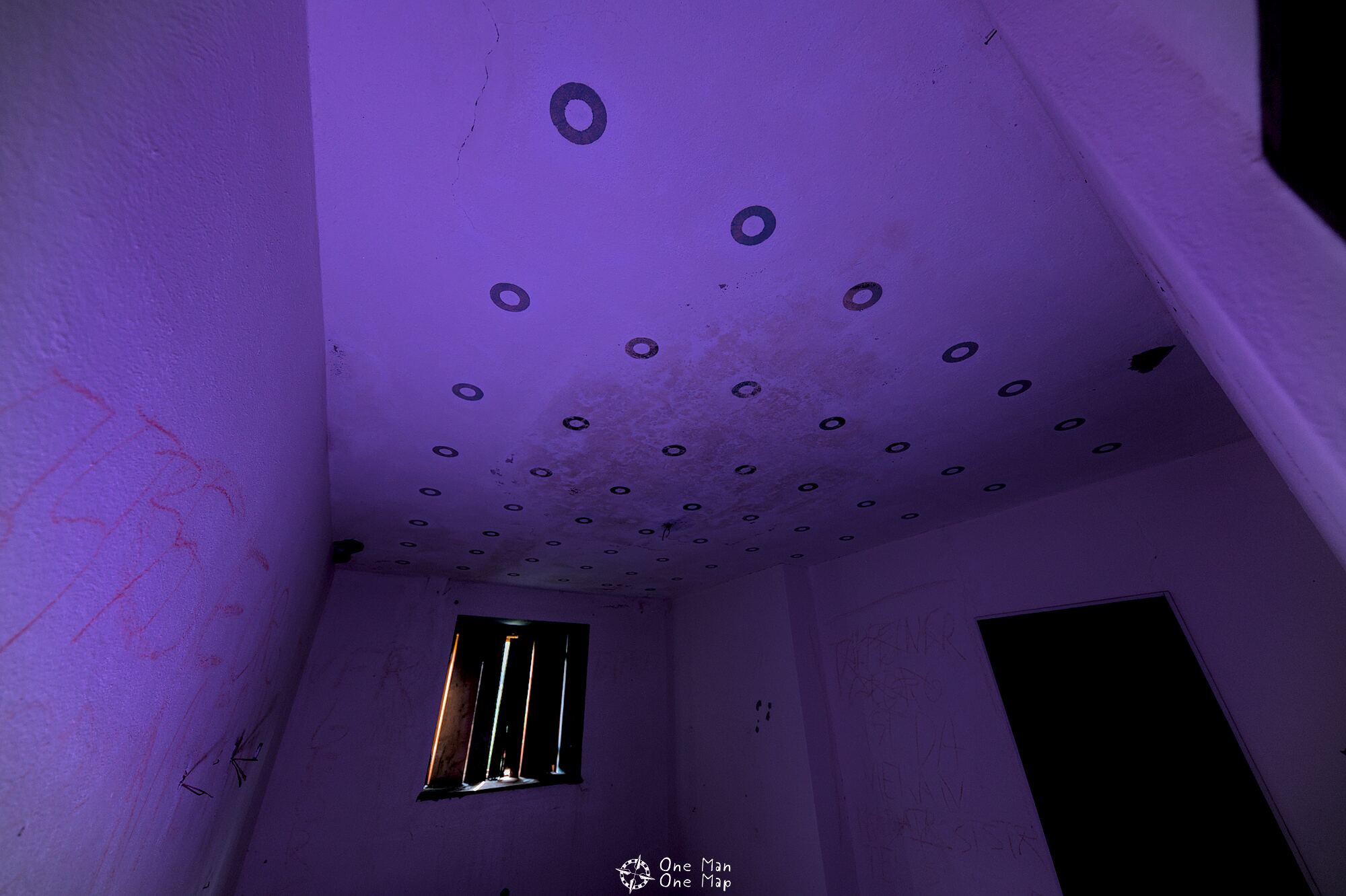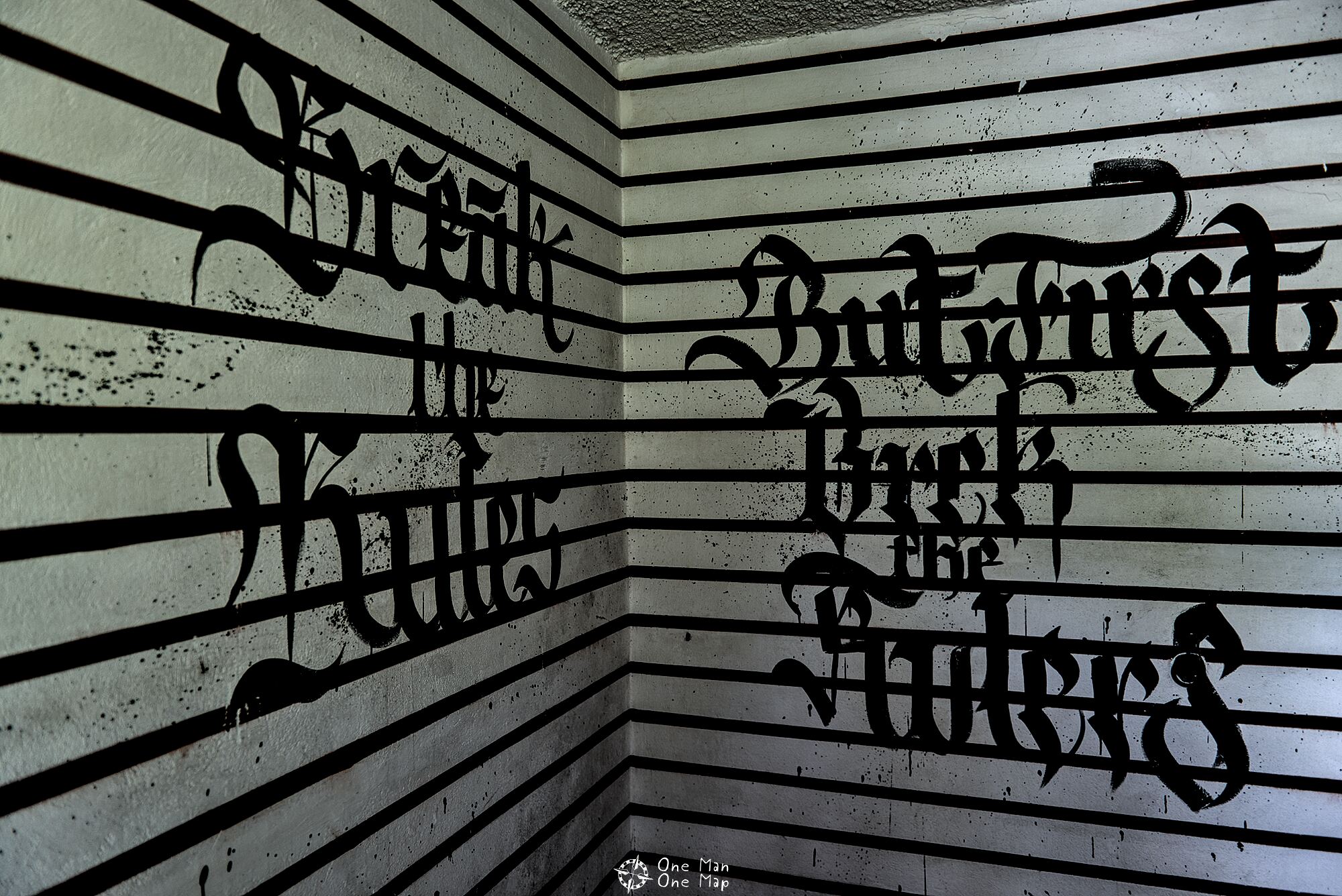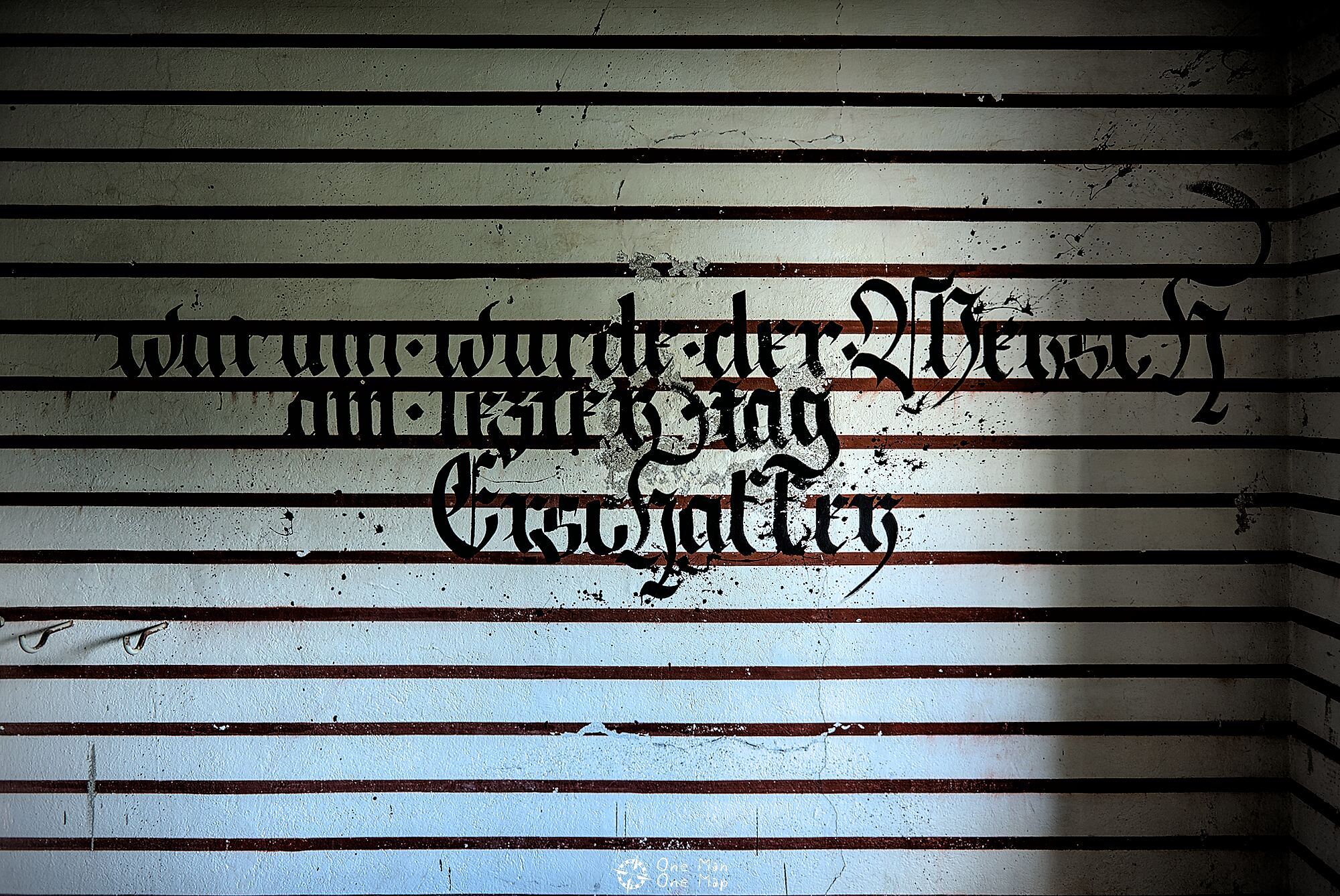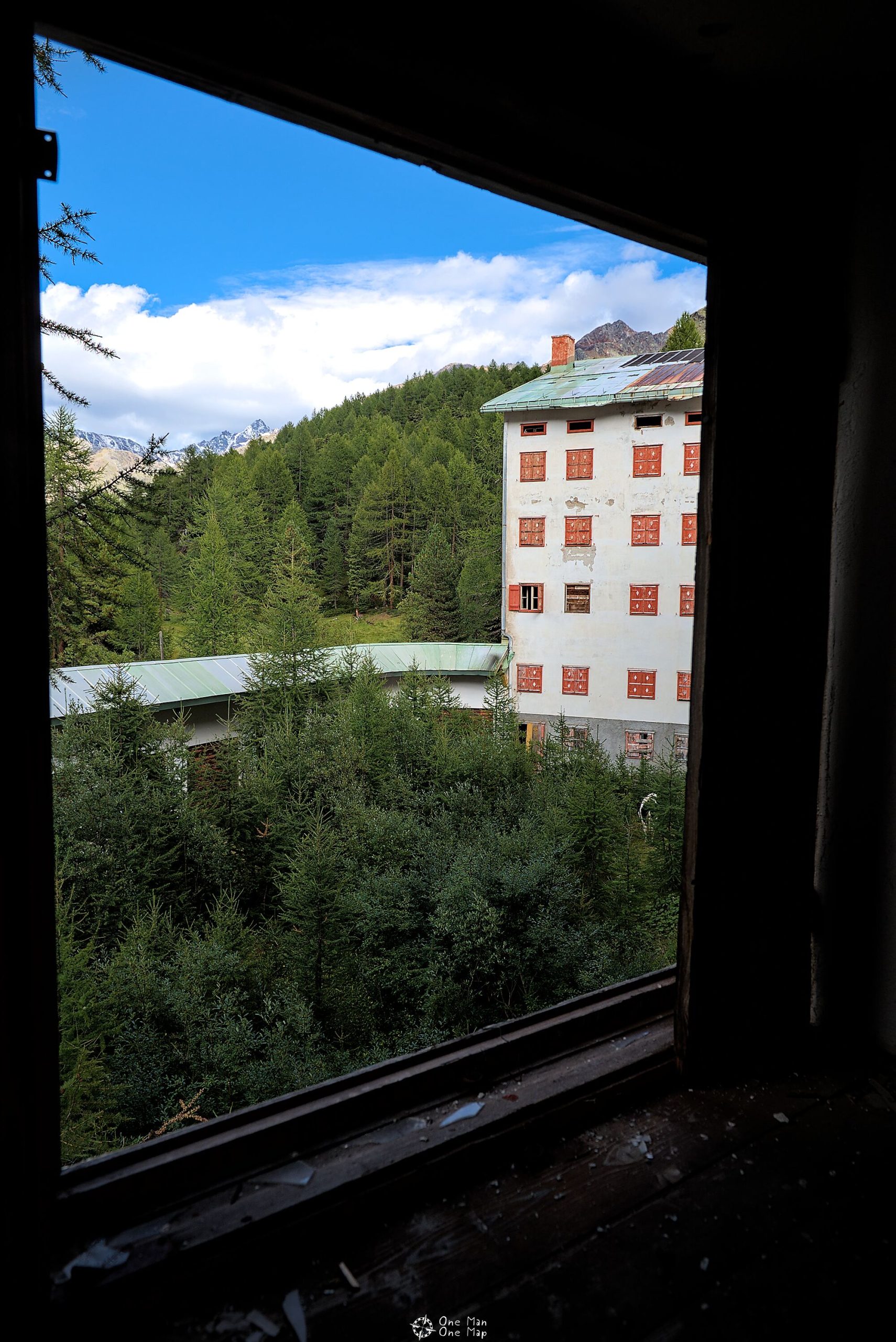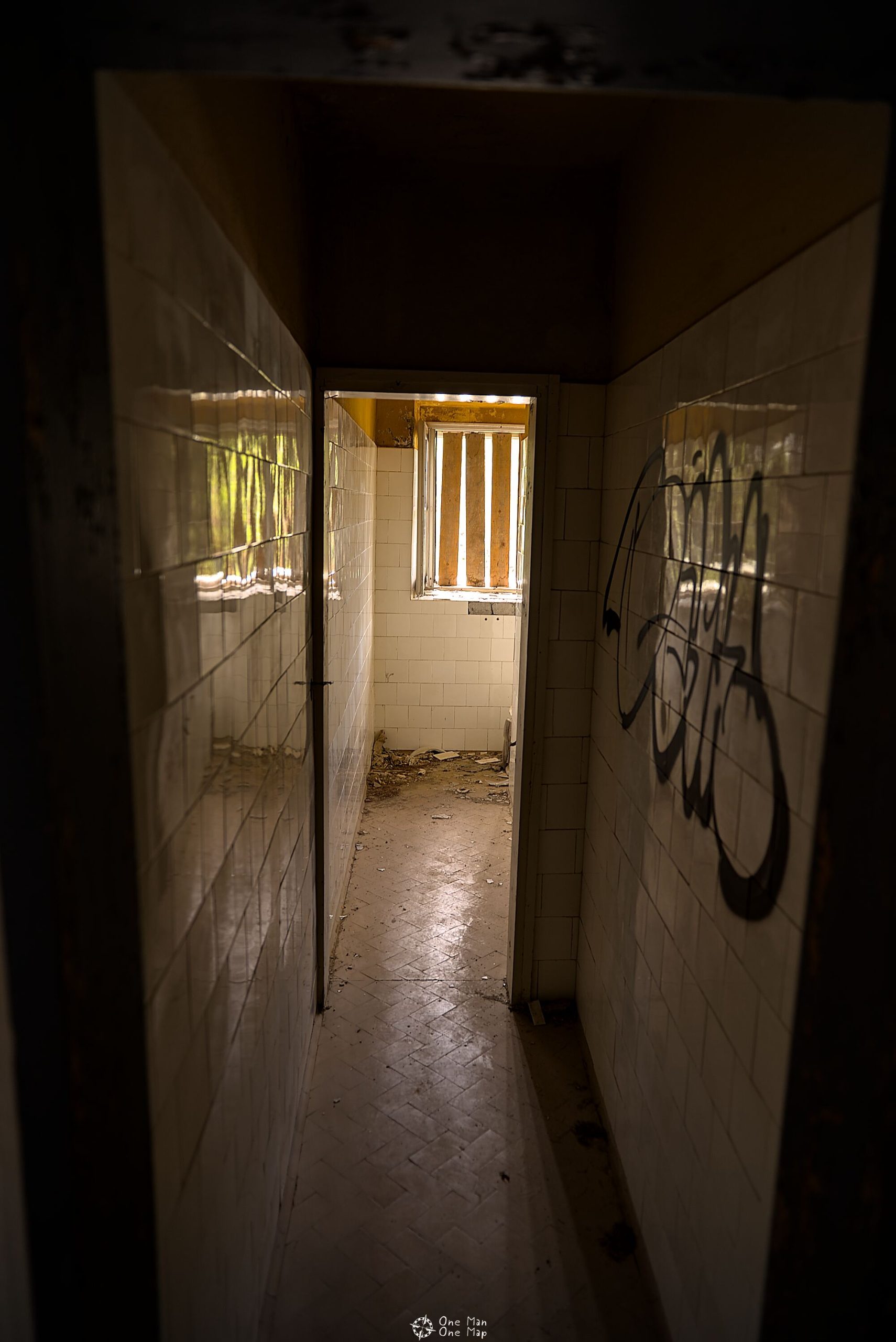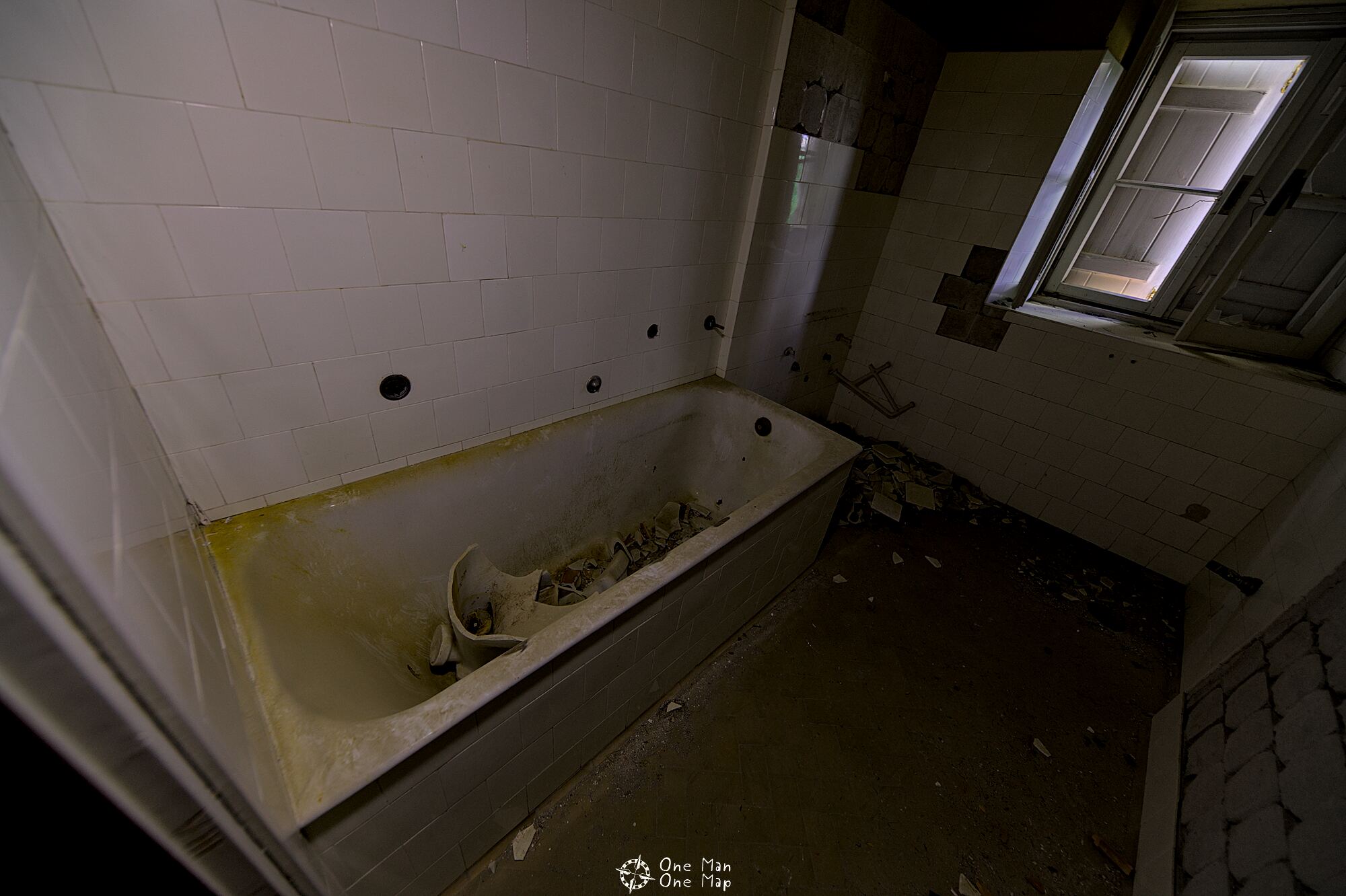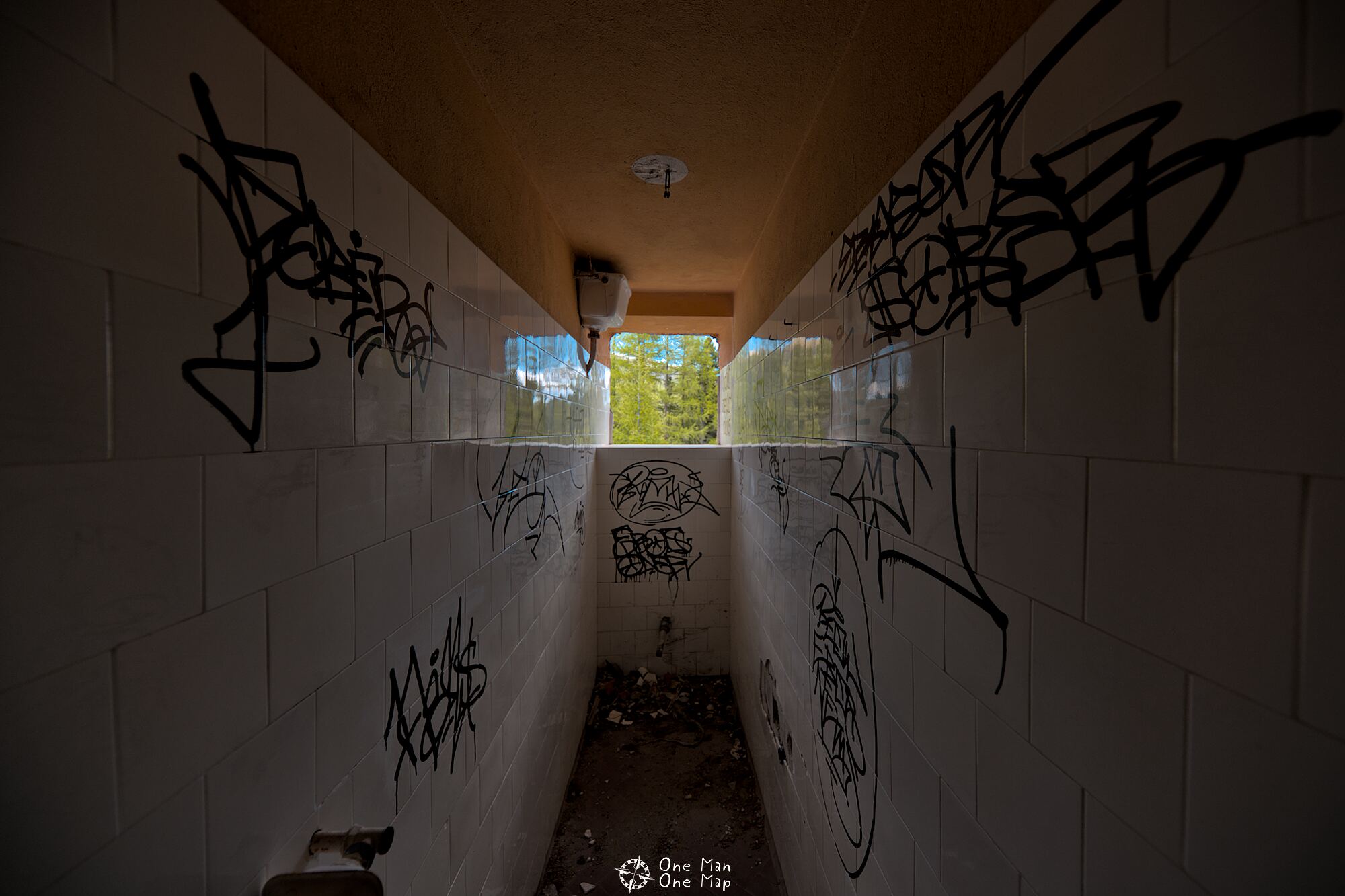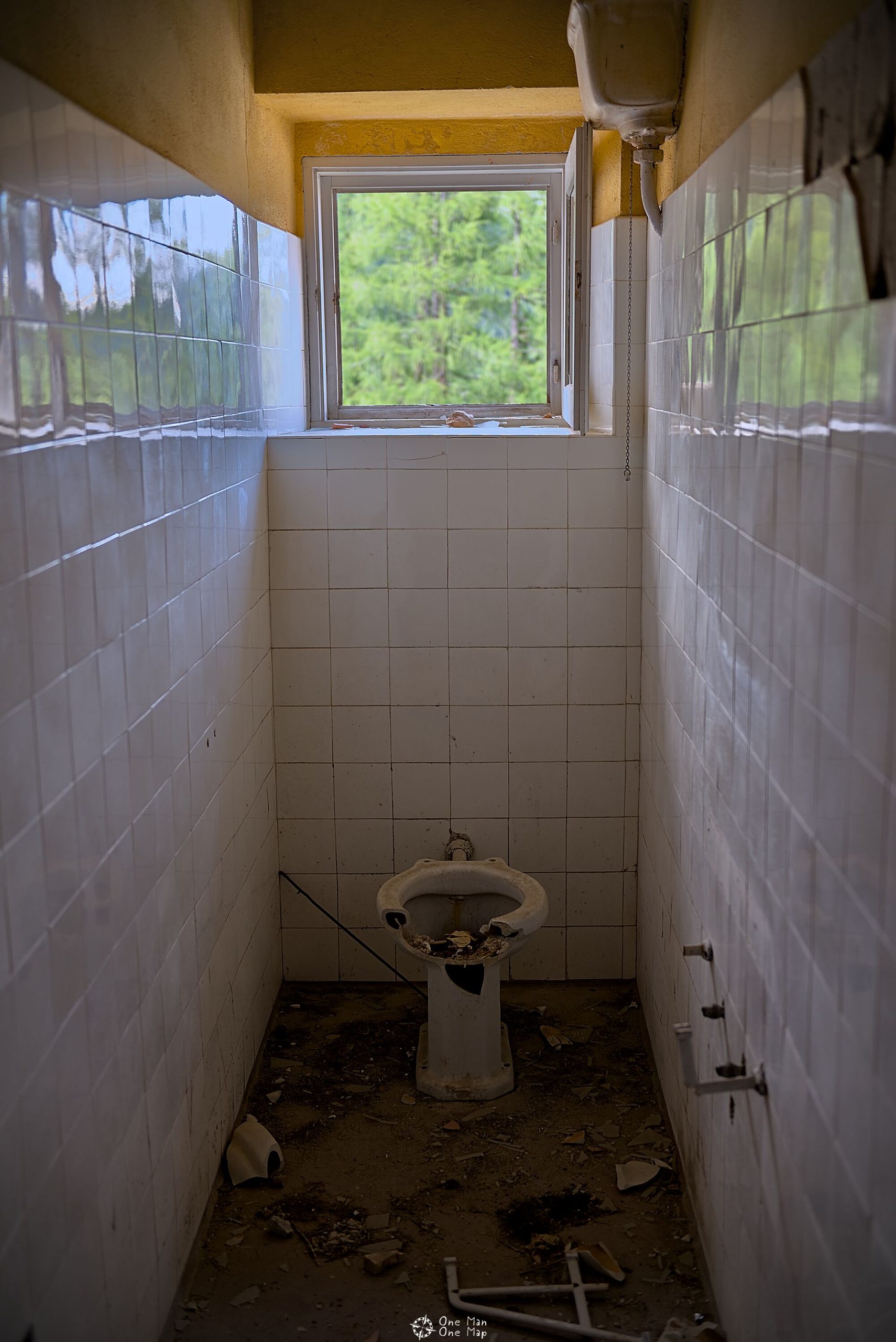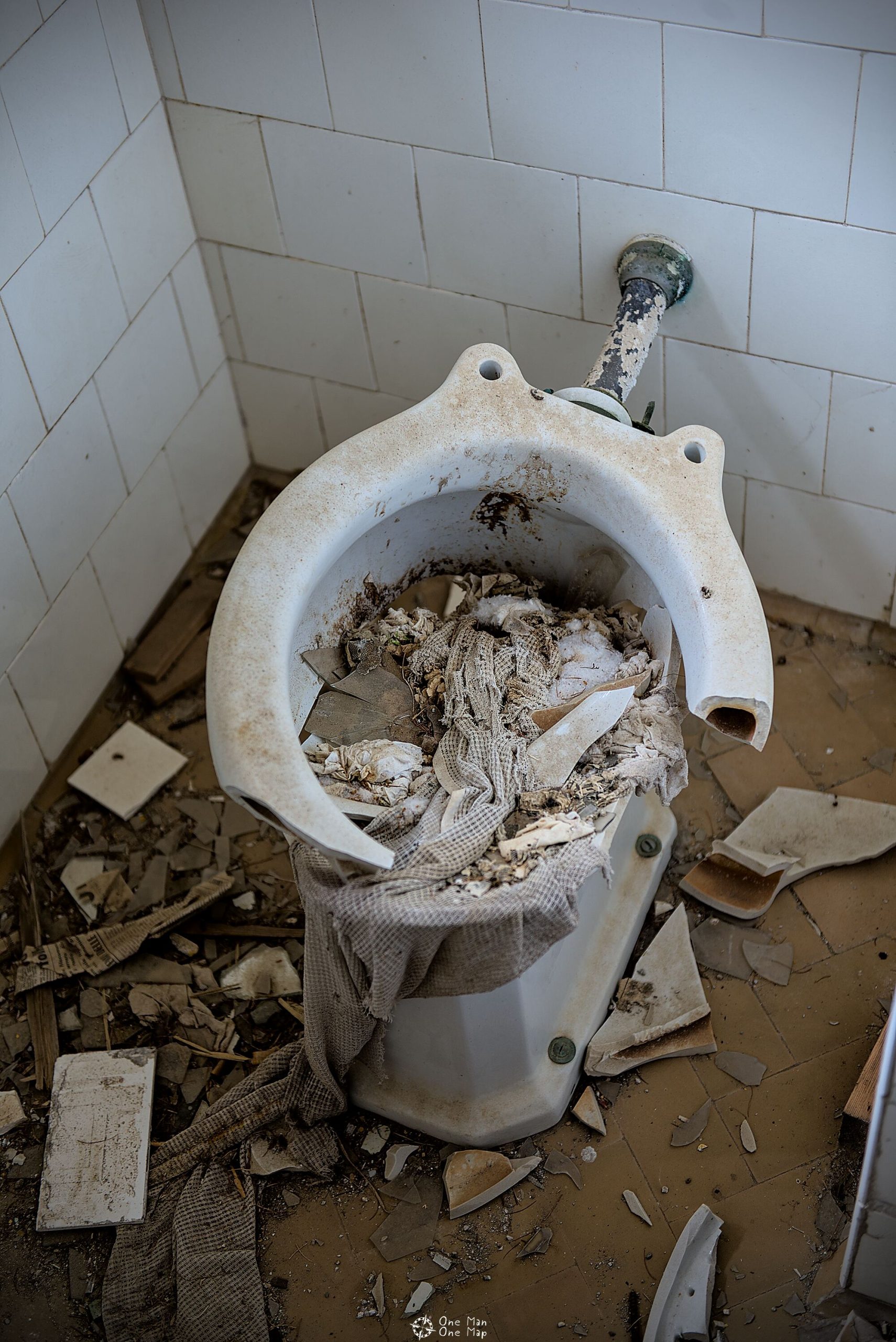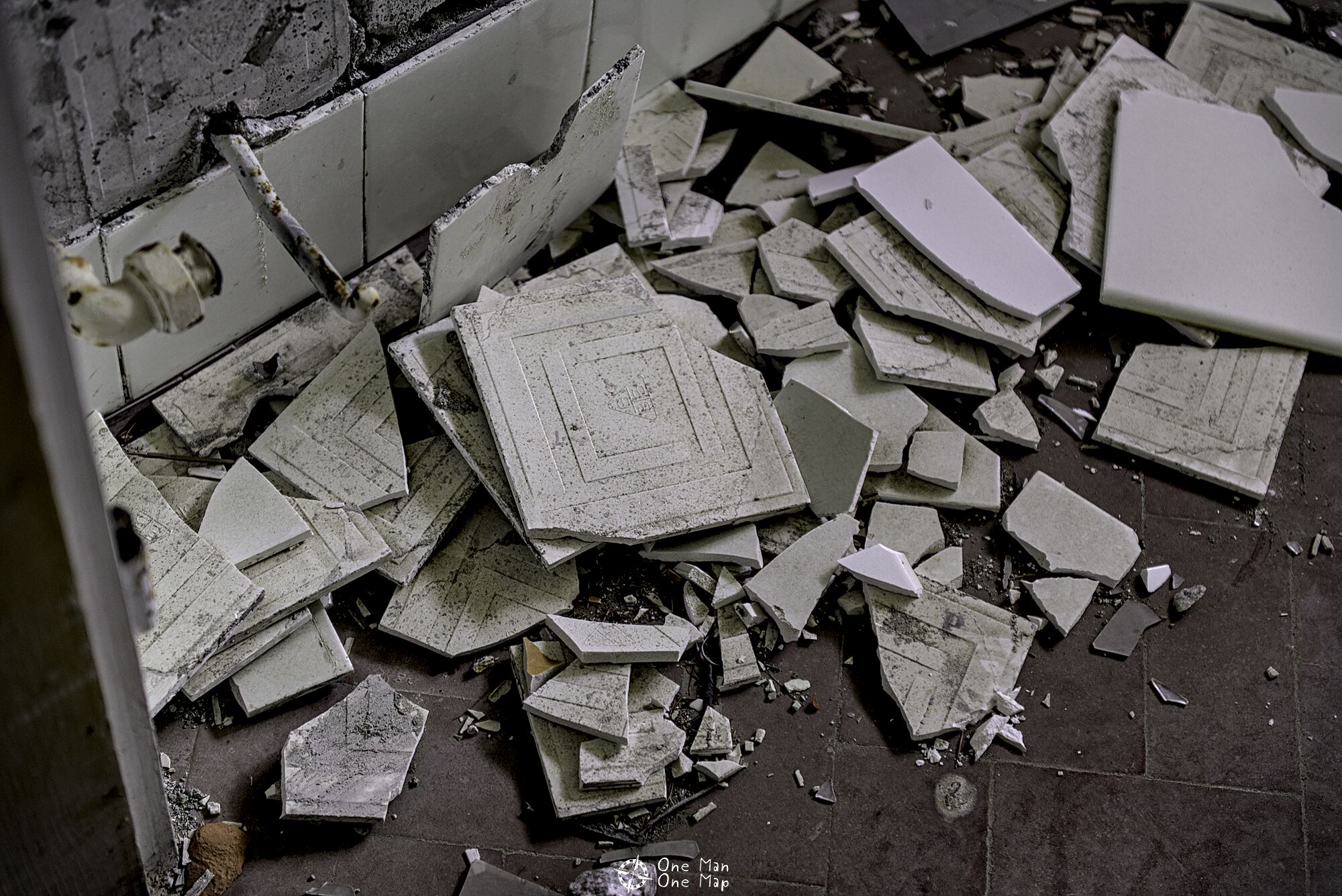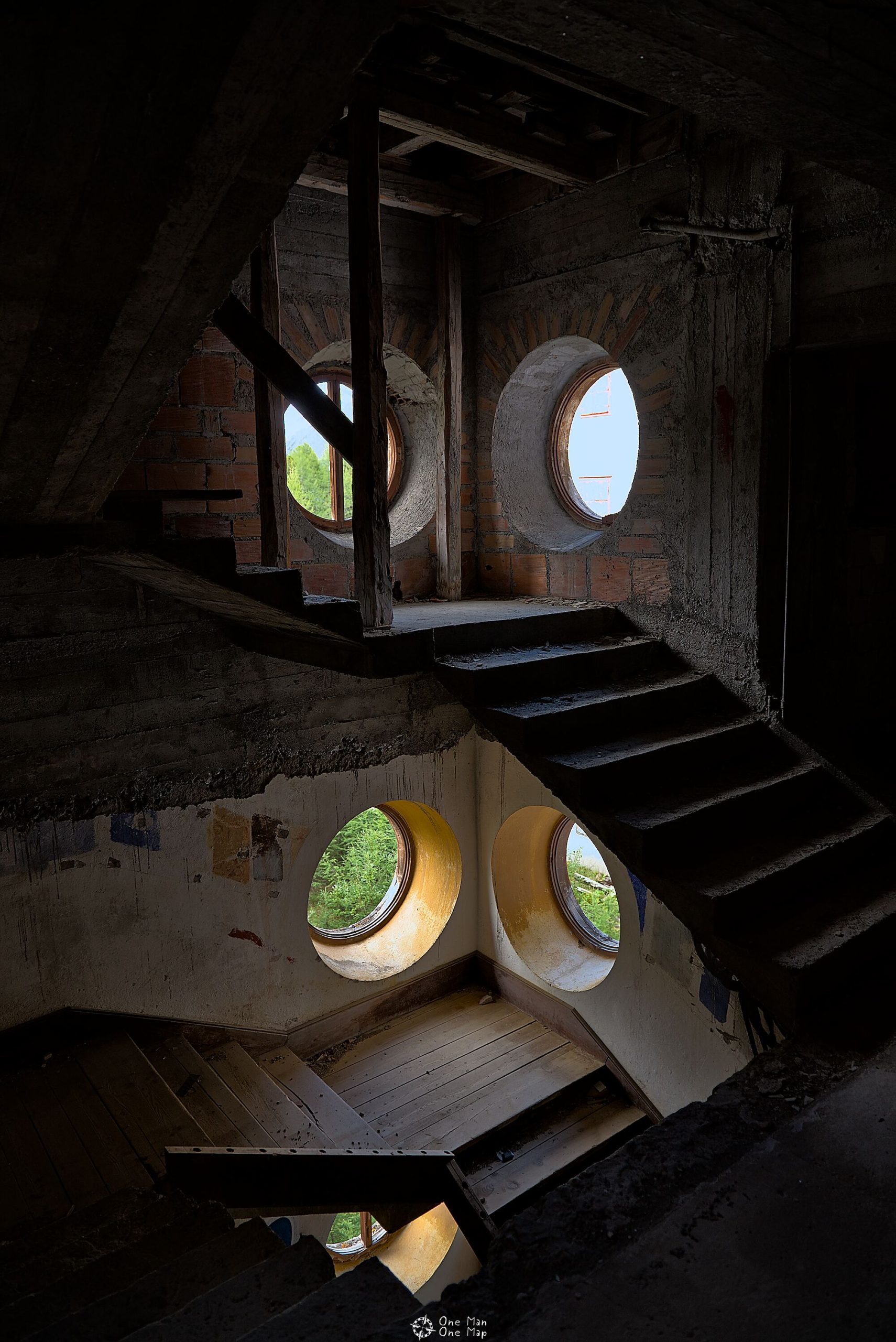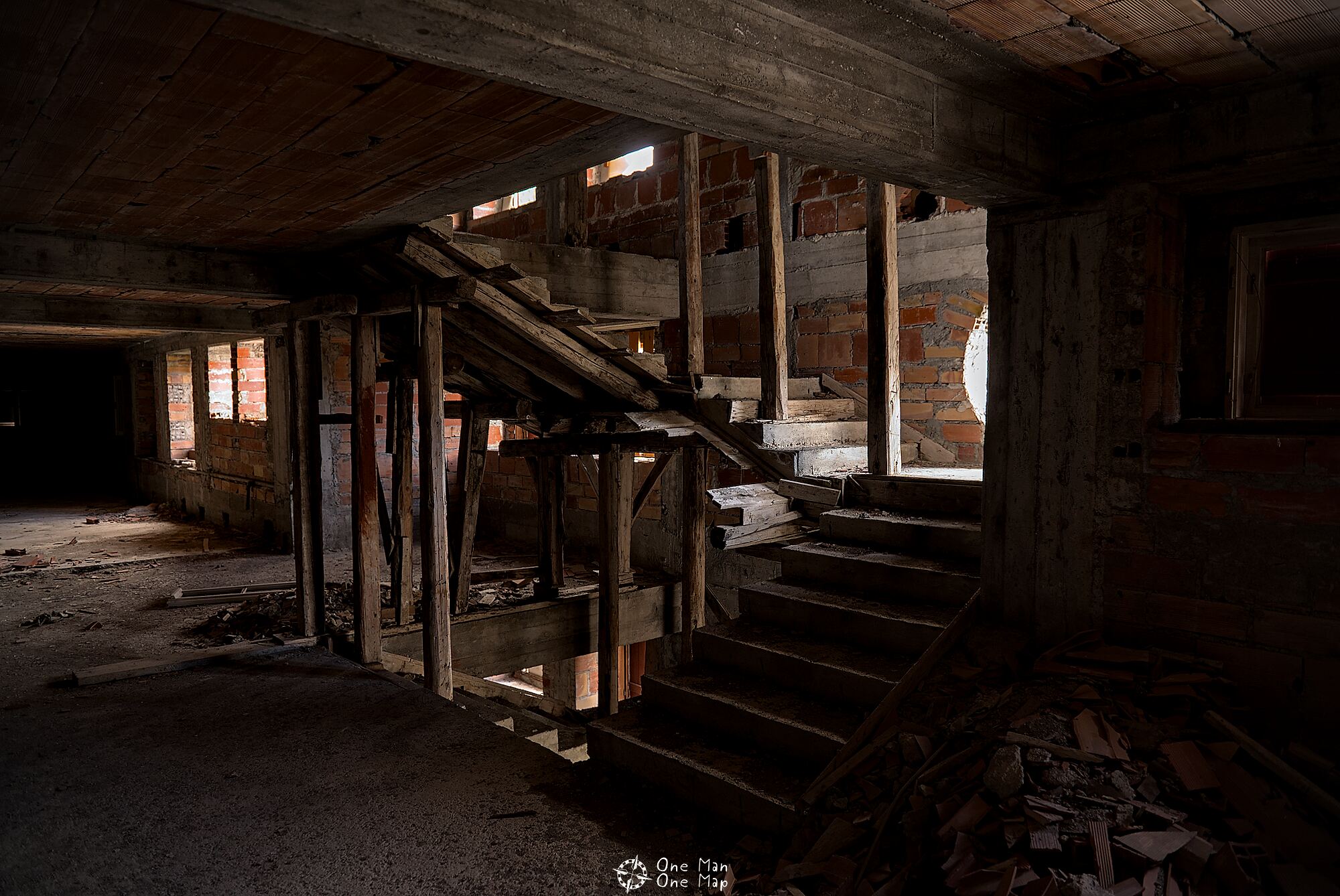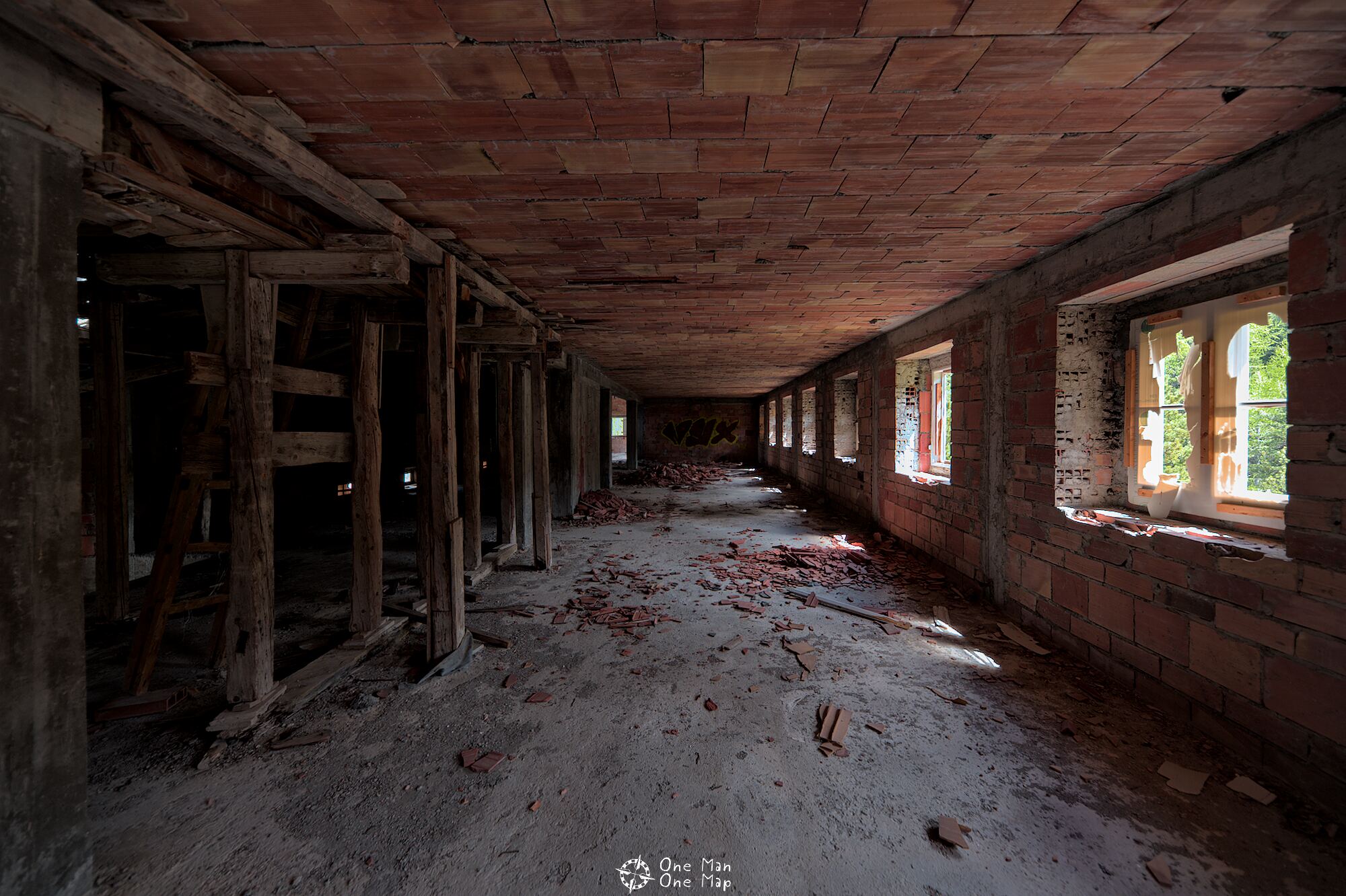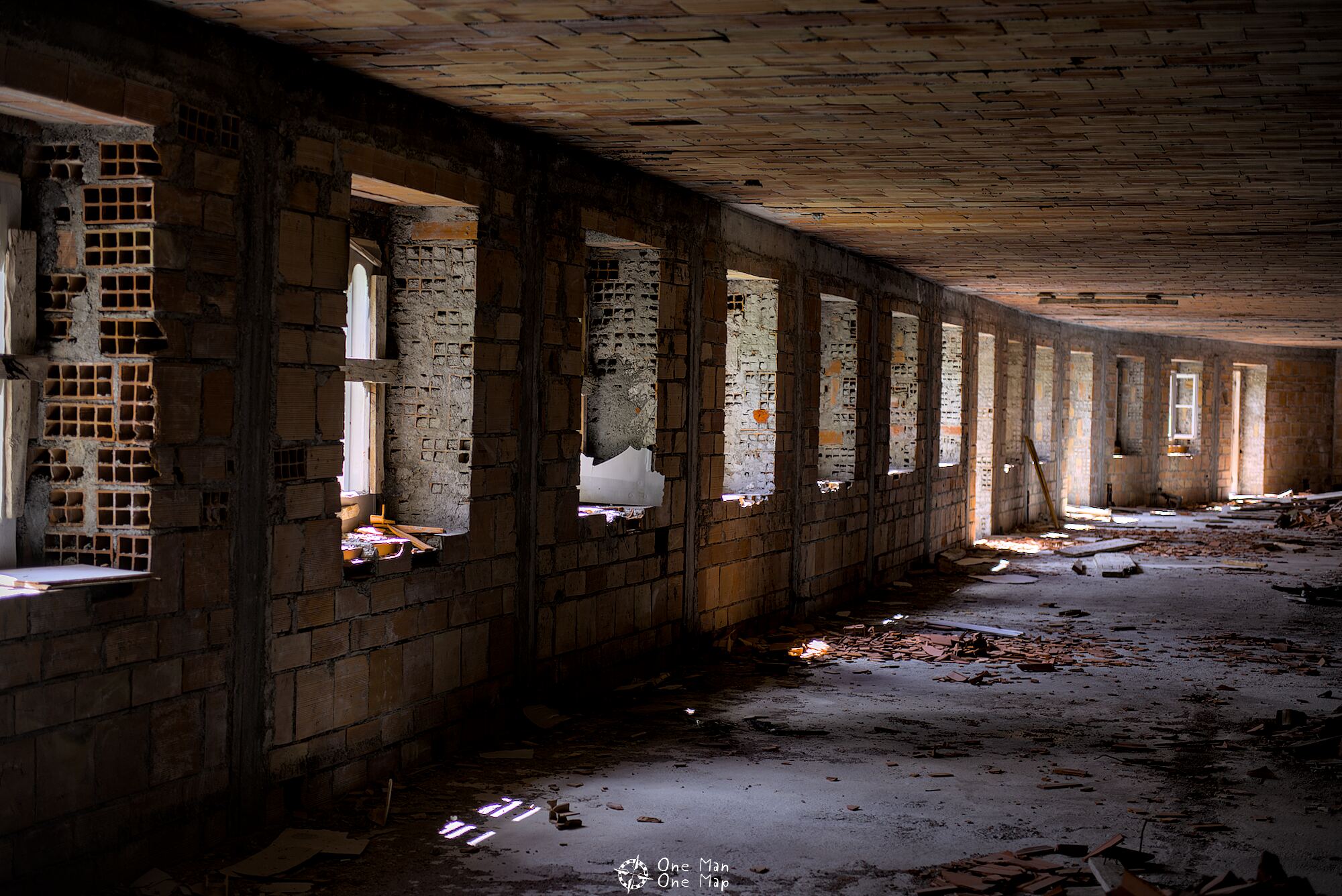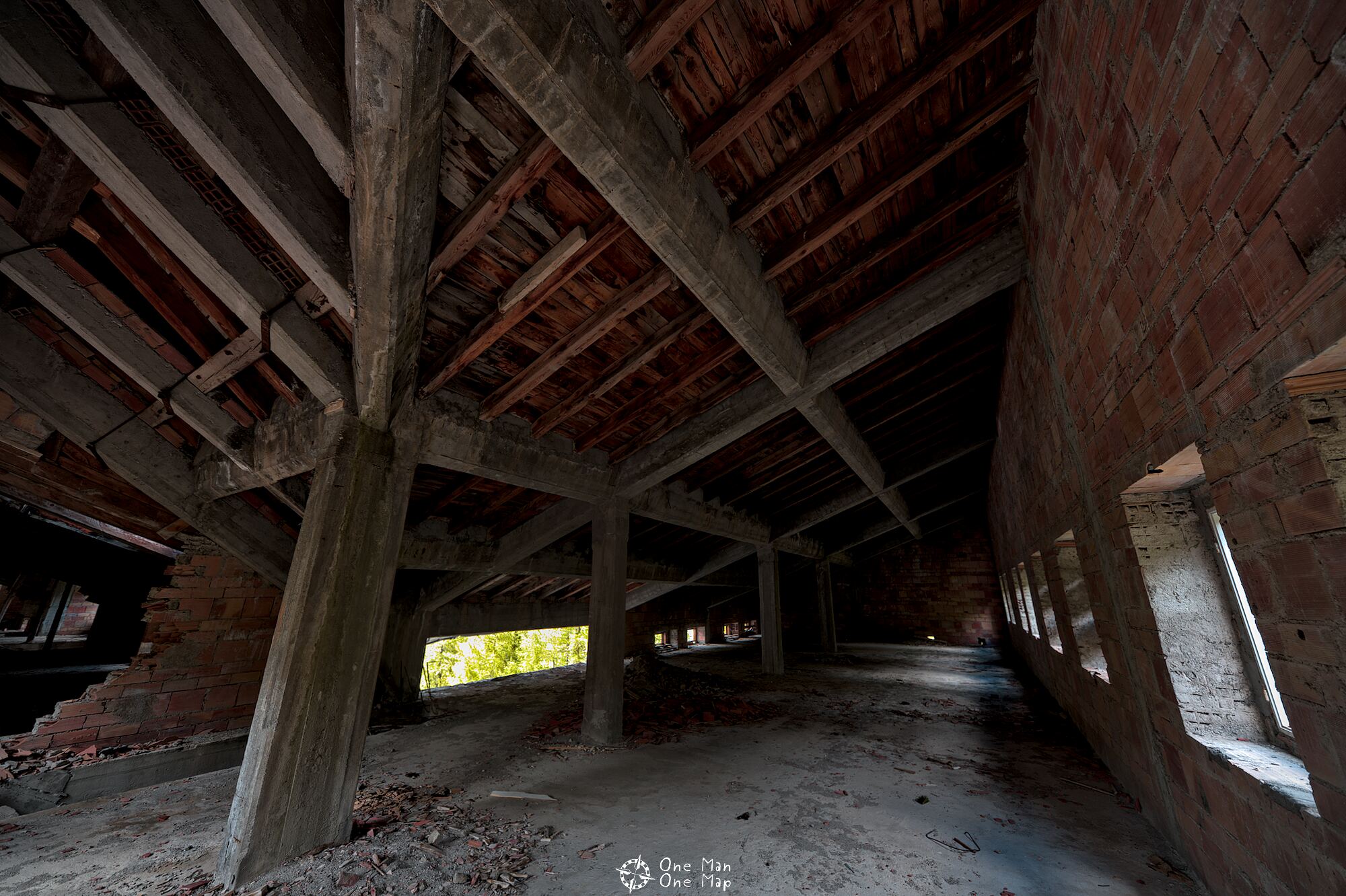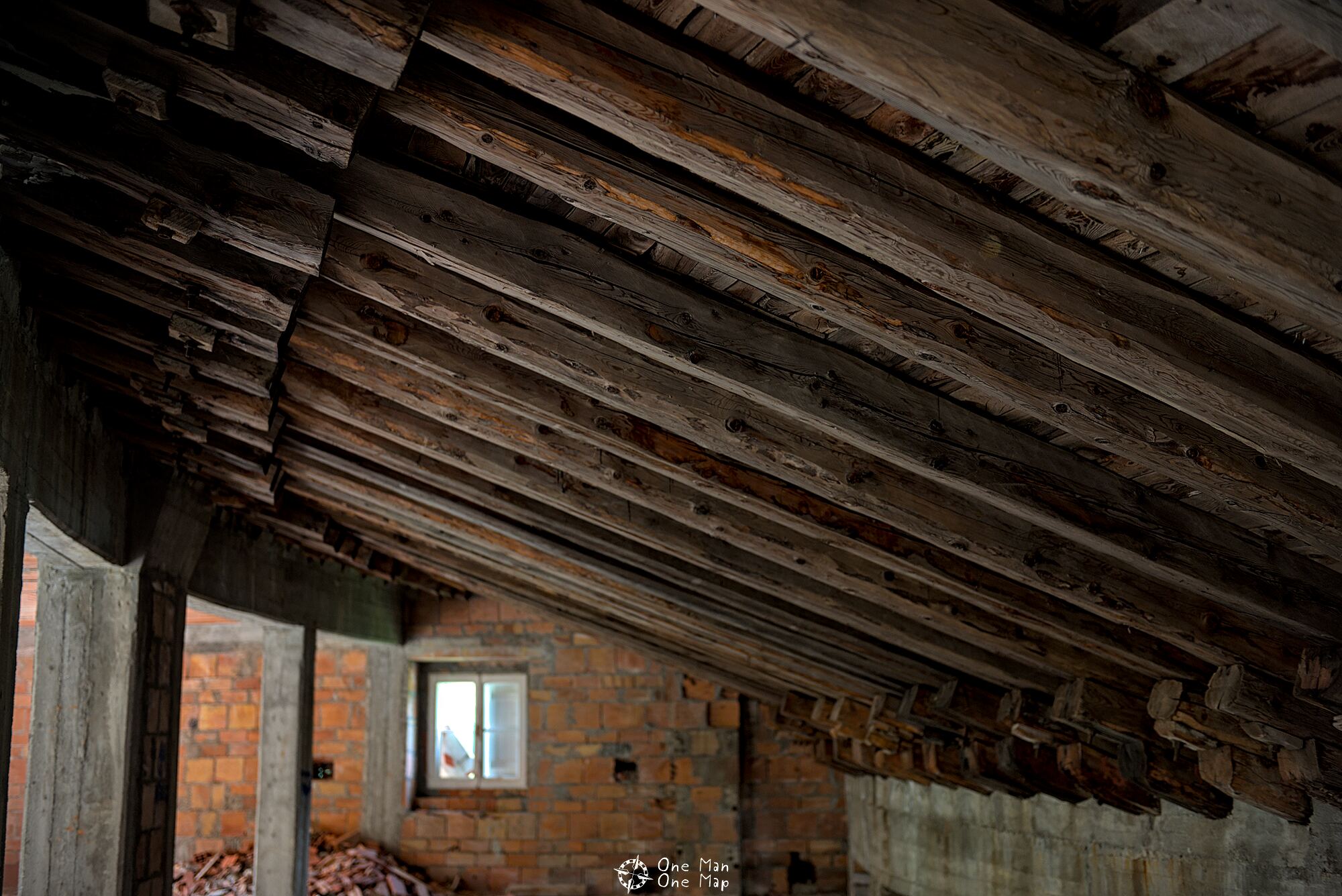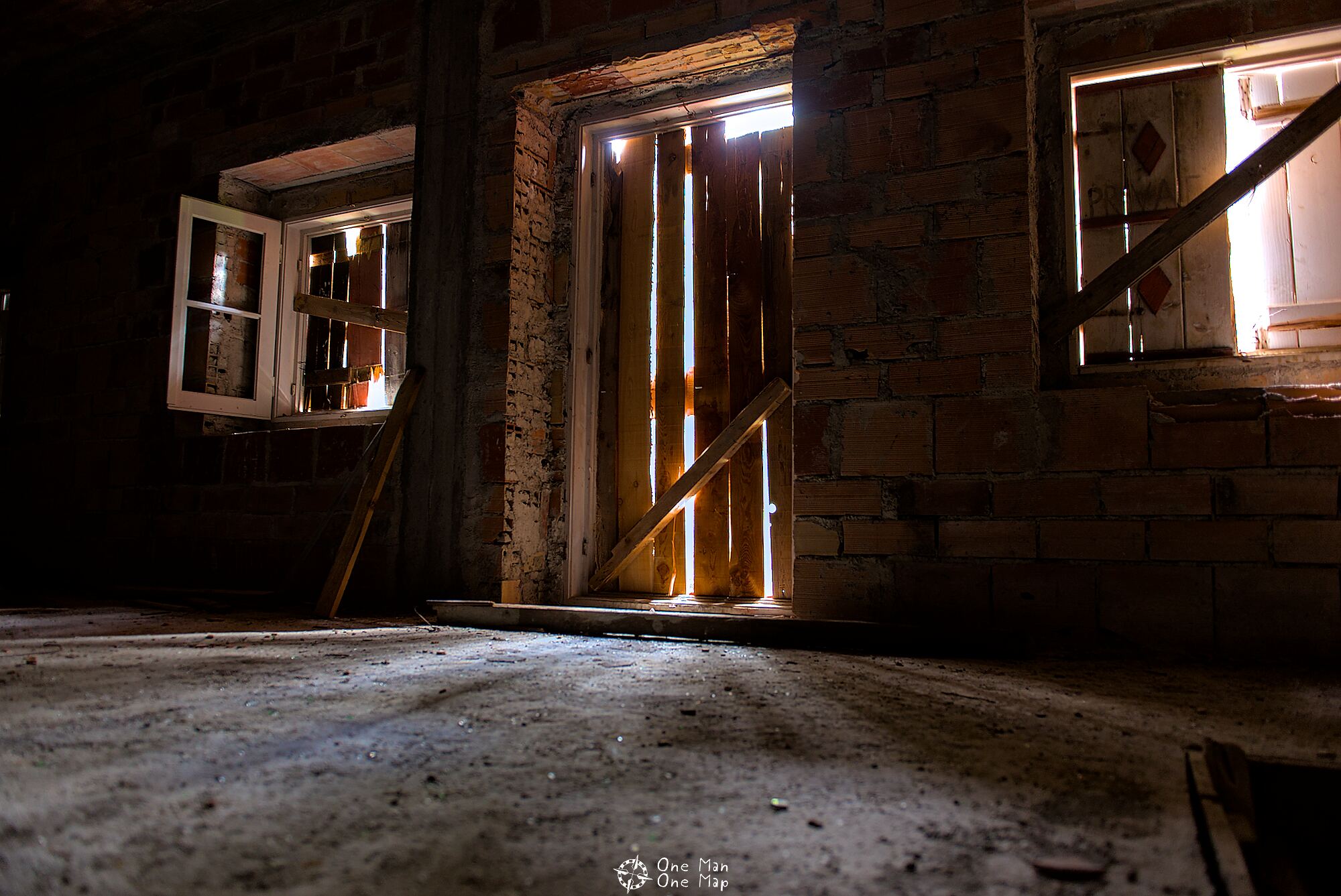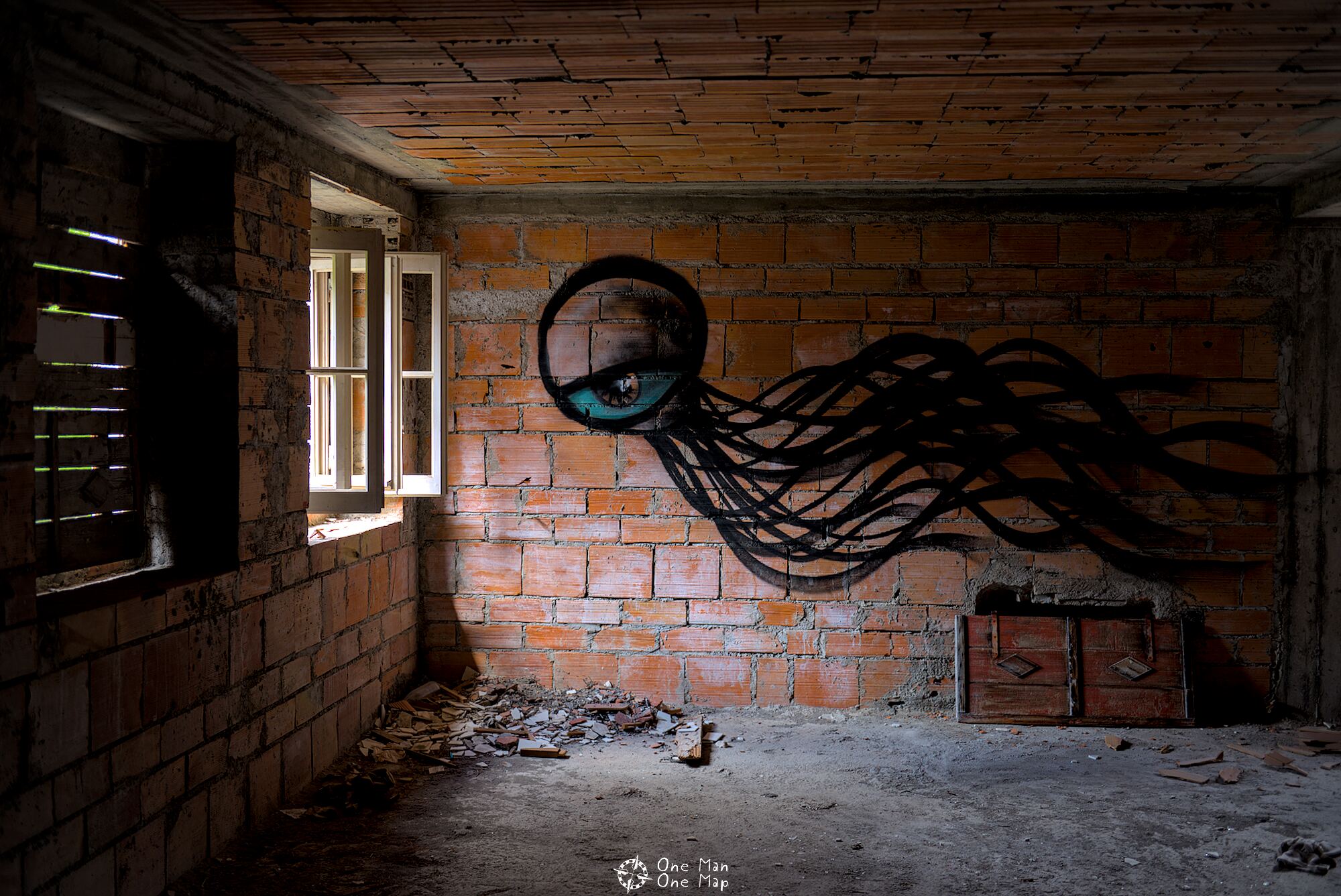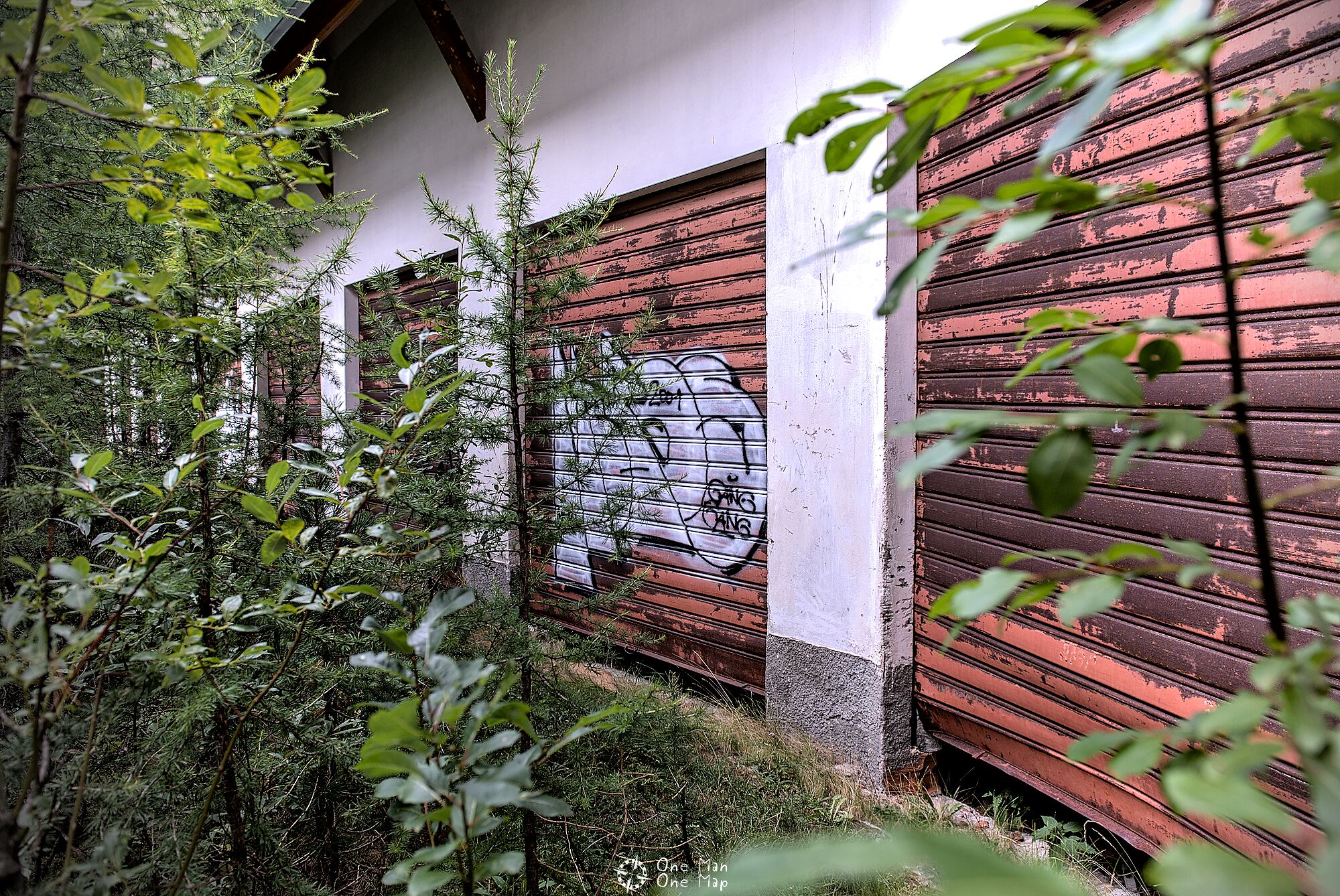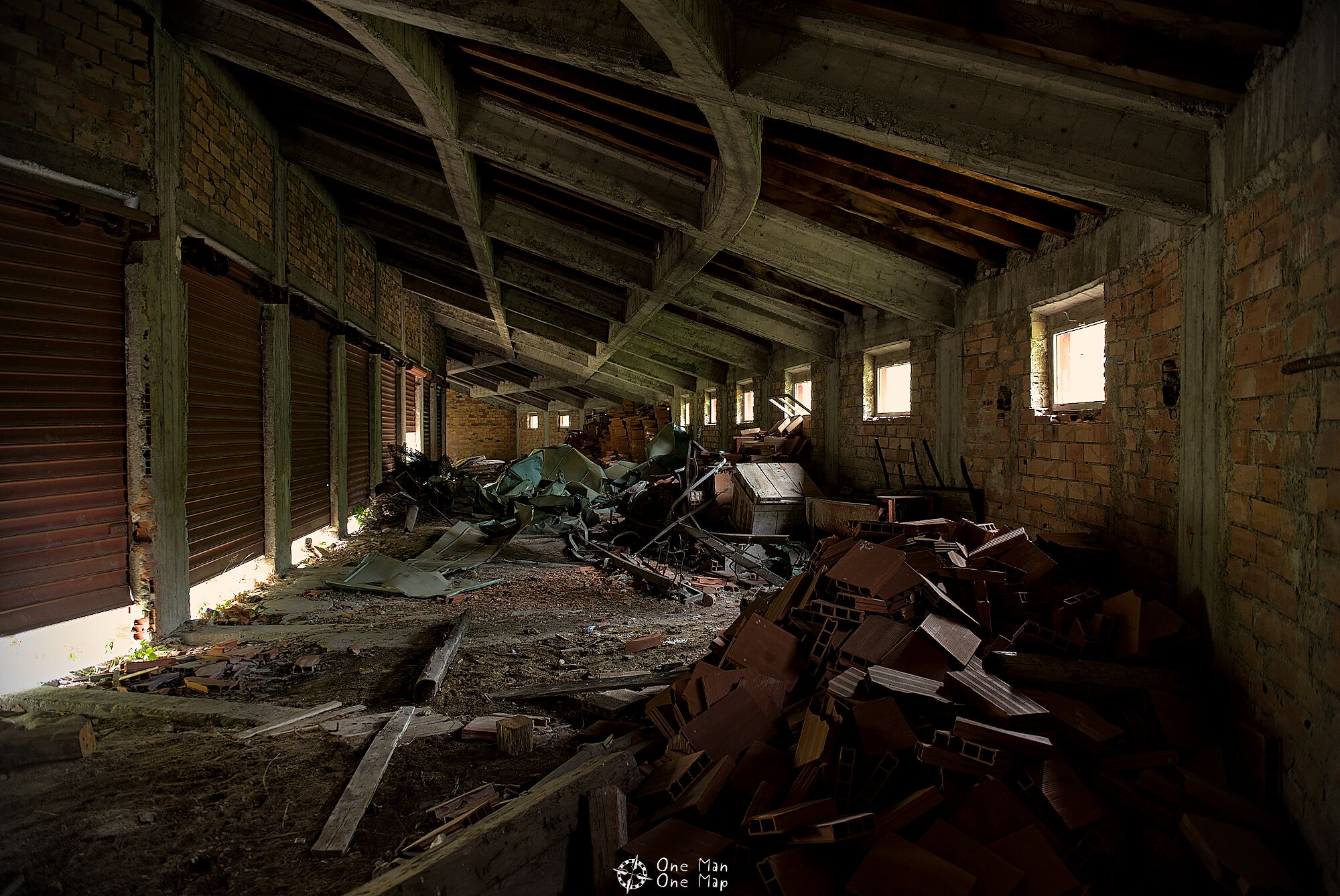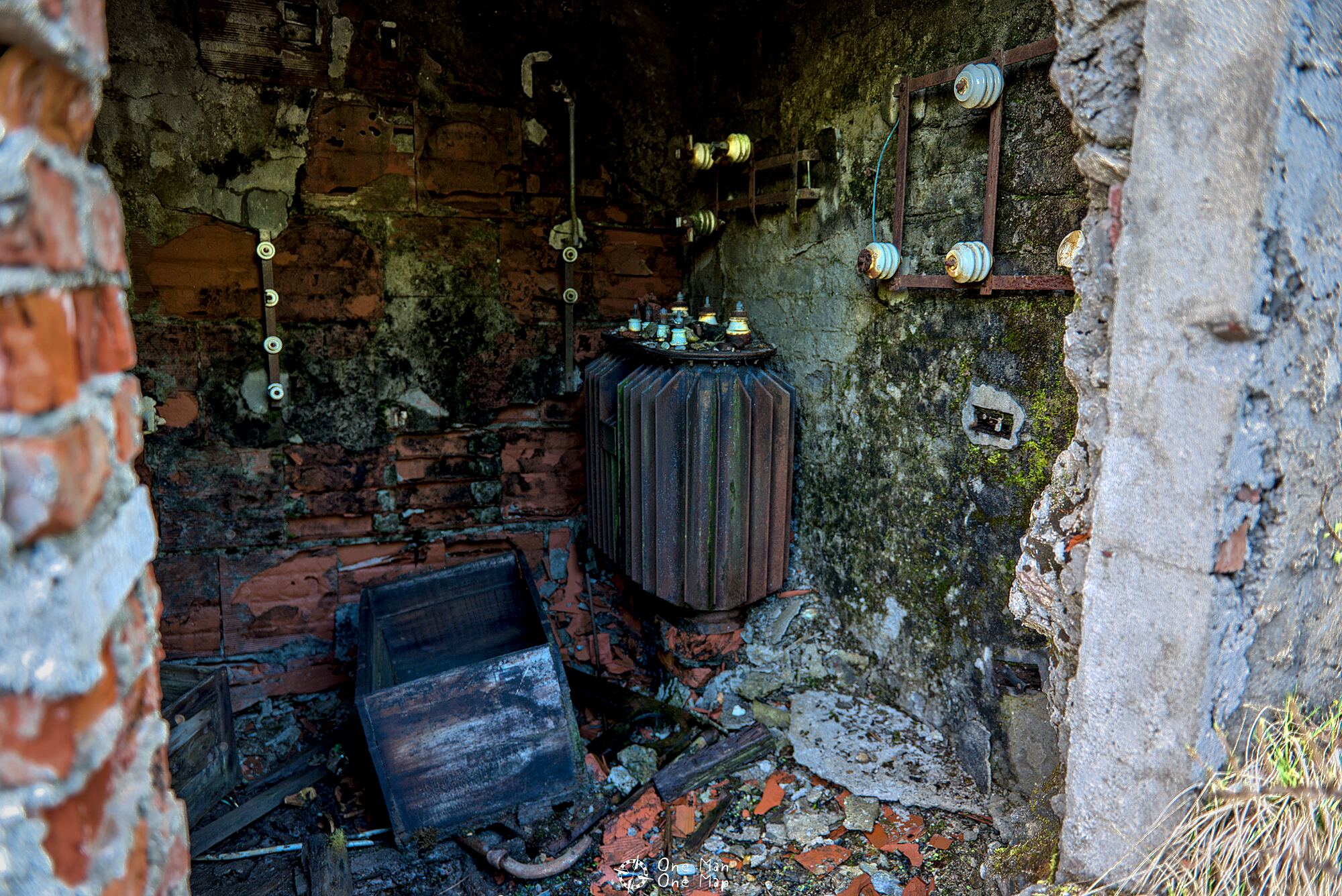Dieser Artikel ist auch auf Deutsch verfügbar. Click here to find out more about Italy!
Somewhere in South Tyrol, surrounded by mountains 3,000 meters high, there is an almost 90 years old former luxury hotel. However, no one has spent the night here since the World War II, and the ruin has been decaying for more than 70 years. Five years after my first post, I’ve revisited the location, explored the areas that had been left out back then, re-edited the old pictures and gathered new information about the history of this site.
The unmodified original post from 2017 can still be found here. More abandoned locations can be found in the Lost Places category on this site. Attention: This post is about Urban Exploration and Lost Places. I won’t publish any location data or coordinates. Take nothing but pictures, and leave nothing but footprints!
The building actually still looks modern today, but it was commissioned in 1933 by Milan-based businessman Emilio Penati and designed and completed by Italian star architect Gio Ponti by 1935/1936. The construction work at a remote location in the middle of the mountains, far from the nearest major road, turned out to be very difficult. With the curvature of the façade, which follows the course of the sun, and the “pent roof”, the construction companies faced even more challenges. When the building was completed, the facade was still painted in “pine green” and not in today’s red color.
The construction is said to have been accompanied by the fascist government under Mussolini from the beginning, in order to open up the area for tourism and to bring the “Italian style” to the German-speaking areas that had belonged to Austria until 1918. The architect’s plans also included other hotels and cable cars in the Dolomite mountains which were all never built.
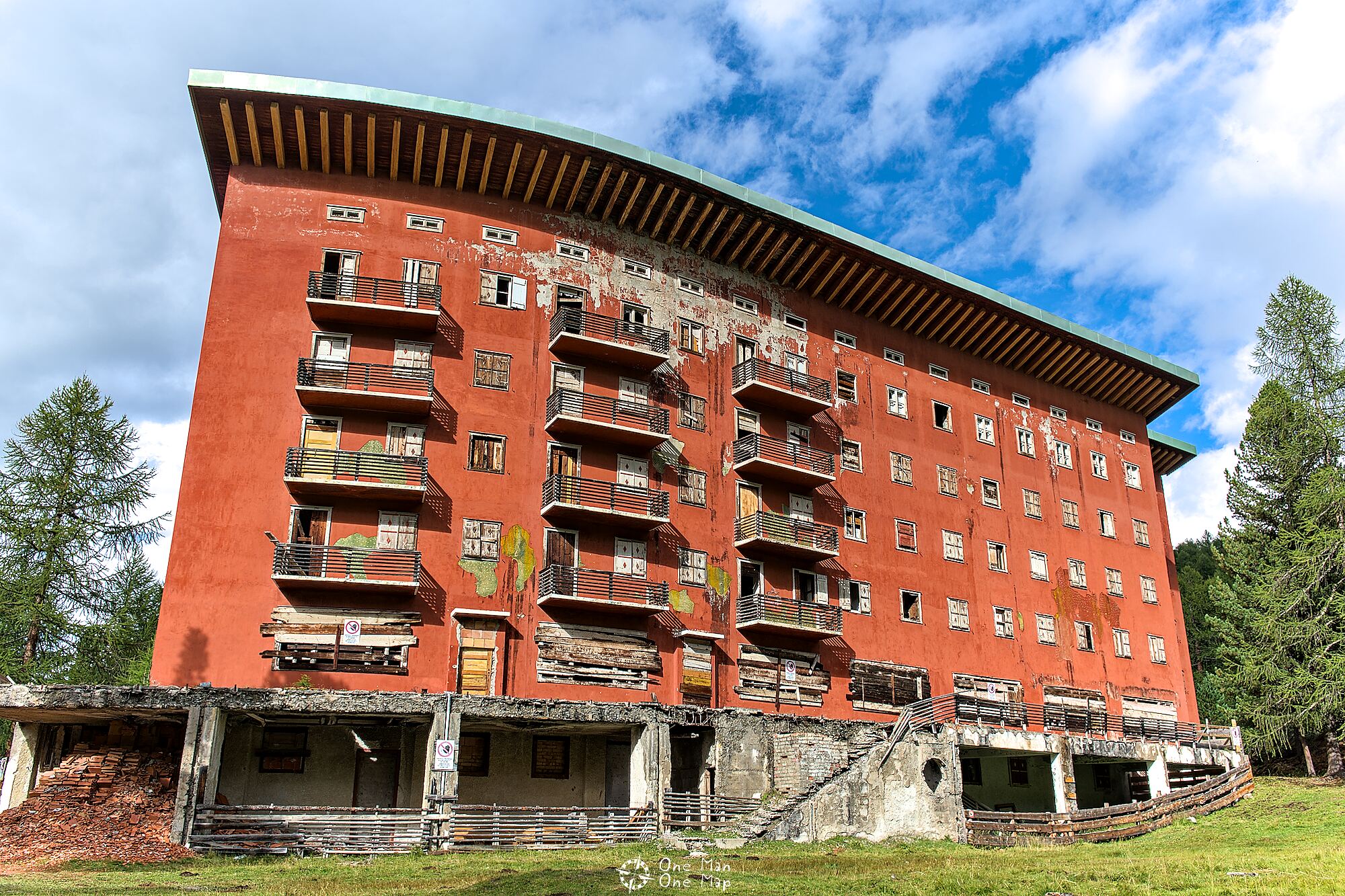
The former layout of the building is described as follows: A tavern under the main terrace served day tourists like hikers and skiers. Rooms with a view of the valley on the north-east side were reserved for second-class guests, and rooms with a view of the mountains and an artificial lake on the south-west for first-class guests. In the winter, guests could also ski on the slopes surrounding the glacial landscape around the Cevedale peak.
So the normal population certainly never resided as guests in this hotel. The exceptional ammenities make this quite clear: in addition to the 250 beds, there were also reading rooms with English-style fireplaces, a sauna, a bar, a hairdresser, a massage parlor and a post office. The bakery and butcher shop, which are also described in some places, were probably more likely just part of the kitchen.
Unfortunately, the idyll did not last long. After the outbreak of World War II in 1940, the guests stayed away, and in 1943 the Wehrmacht occupied the hotel. Various military units are said to have been quartered here, some for recreation, others for work. According to the local administration, a spy school for the SS “Brandenburg” division was also housed here.
In 1952, Italian shipowner Bennati bought the hotel, added a floor or two (details are not entirely clear here) and an east wing, and had the formerly green facade repainted in “Rosso Venetiano” red. How much better the building must have blended into its surroundings before, the glowing red building looks like a giant foreign body…
Many local residents saw and still see the construction of the hotel very critically. In addition to the building land itself, farmers’ pastures were also fenced off and expropriated. The façade, which was painted green before 1952, allegedly reminded the South Tyroleans of a “barn”, and a solution is still being sought for the red eyesore in the middle of a national park. Since 1989, architecture students for example have repeatedly tried their hand at drafts.
It is unclear why the Italian shipowner was not able to complete and reopen the newly expanded hotel. According to one of the stories, his son, who should have started his career as a hotel manager here, died in an accident. Another claim is that the permission for operation was no longer granted.
But maybe it just turned out that the demand for such luxury rooms was not high enough just seven years after the end of the war. Bennati is said to have turned to a hotel in Meran, about 50 kilometers away, which was demolished a few years later.
After 1952, a caretaker couple is said to have guarded the construction site and served drinks to hikers in the bar/tavern for some time. The hotel has been empty since 1956, and since 1966 it belongs to the Fuchs family of entrepreneurs from South Tyrol, owners of the wel-known local Forst brewery. There is disagreement about the reasons for the purchase, officially it’s because of the family’s “closeness to nature” and an interest in meaningful use of the property. A few renovation works, including the construction of a new roof, the securing of the lake and the construction of a new bridge over the nearby creek were carried out in 1966.
According to rumours, the Fuchs family had supposedly relied on receiving an exceptional permit from the South Tyrolean state government to continue hotel operations. However, the planned expansion of the Stelvio National Park (finally implemented in 1977) made this impossible, and now for reasons of nature conservation it is allegedly never again possible to obtain a permit at this location. This would also be the reason why the hotel has not been demolished. The excavators and trucks would probably block the narrow road for months and cause a lot of noise. And as long as the ruins don’t pose any other danger, they simply remain as eyesore and adventure playground.
There were no security guards present during my visits. Once a herd of cows had made their way into the inner courtyard and was grazing there. The animals were not afraid, depending on the specimen almost a little too curious…
The ground floor
On the ground floor there are various larger rooms, probably the former dining or reading rooms. However, you can no longer see this exactly. Somewhere between 1952 and today, most of the furnishings have been removed or stolen, and the rest have been vandalized.
Probably quite progressive for the time: An electric heating system.
This stove was probably part of the restaurant or maybe a tea kitchen, but at least it didn’t look like it had always been standing in the middle of the room. In the background one of the brick chimneys can be seen.
The hallways in front of reception must have been pretty gloomy… Old postcards and other artifacts are said to have been found here in the 1980s, but there was nothing left when I visited. There were many traces of vandalism, though.
This stove here has probably also not always been right in the middle of the corridor. In fact, in the five years between my visits, it has actually moved quite a bit further down and has been flipped upside down. Who or what is moving the old stoves around in this abandoned hotel? 😯
Now down the stairs to the basement…
Cellar and kitchen
During my first visit in 2017, I had come with neither the right equipment nor enough time. In 2022 this was different. With a few LED spotlights, even the darkest ghost cellar turns into a work of art 😉
In addition to the storage rooms, there was also a full-on laundry, already with some electrically operated machines. However, a great deal work was certainly still done by hand and using – not exactly harmless – steam.
Speaking of steam: The former heating system with several boilers and a large tank is located in a kind of deep cellar, which can be reached via a small ladder.
Apart from a little vandalism, the kitchen was almost in its original condition. The large stove dominated in the middle, worktops and machinery were arranged around it.
This was probably a dishwasher once.
Two electric saucepans with labels in Italian. The device in the background appears to have been a pressure cooker.
An electric oven. If you look closely, you can see the heating coils that were already visible on the electric heating system on the ground floor.
And now something very special: A refrigerator 🙂 In the 1950, this was still a simple wooden cabinet with a small cooling unit. Back then, not all households could afford a refrigerator and the electricity it required yet. Today, however, refrigerators are probably among the cheapest household appliances in existance.
Now, who knows what this is? Right! On the left, chickens are turning on the spit (Spiedo), and on the right, schnitzels are sizzling (Bisteccheria).
All these devices were actually operated electrically. According to some reports, there was also a dumbwaiter – quite new at the time – going from the basement to the dining room on the ground floor. I can imagine something like that very well, but at least I didn’t notice such an elevator on either of the floors.
As is so often the case, there are also some old newspapers and magazines left in this Lost Place. The TV schedule is not clearly dated, but on Thursday (Giovedì) September 9th there is a metion of a special report about a “Journey from Saragat” (Servizio speciale del Telegiornale sul viaggio di Saragat) on the evening news. It must have been about Giuseppe Saragat, the fifth President of the Republic of Italy between 1964 and 1971. Between September 10th and 24th, 1965 he took a trip to South America, so this is almost certainly a TV schedule for September 6-12, 1965. At this point, the hotel had been closed for nine years.
Also interesting is an advertising page from “Saint Anthony’s Messenger” (Messaggero di Sant’Antonio), a Christian monthly magazine that has been published in more than 140 countries (!) since 1898. Alarm clocks from Fratelli Borletti, a traditional group of companies that still exists today, are offered. At that time, the portfolio of this group included not just watches but also sewing machines, car parts and measuring instruments. Today, Borletti is mainly involved in large European department store and supermarket chains such as Italian chains La Rinascente, UPIM, Standa and German Karstadt.
This magazine page is not dated either, and price comparisons are difficult because the average income in Italy rose sharply in the 1960s. There were also large fluctuations in food prices.
If you take the year 1965 as a base, the 6,200 lire of the most expensive alarm clock shown here goes against around 50 lire for a cup of coffee. A kilo of sugar cost 1,900 lire, a liter of petrol 245. A vinyl record cost around 1,800 lire and a pair of shoes 6,000. So a brand-name alarm clock wasn’t exactly cheap, but it wasn’t overly expensive either.
The two advertisements for the Scuola Taglio Altamoda, a correspondence school for tailoring, give a completely different insight into people’s lives back then. The top ad advertises a specialization in elegant children’s clothing under the heading “Optimal Earnings”. The lower ad is captioned “A Dream Reachable For Every Woman!” and was aimed at women who wanted to copy the latest fashion from magazines at low cost. At that time, it was not yet possible to get the latest fashion for cheap from large store chains or even online, you had to do it yourself. The organizer from Turin therefore not only provided the customers with the latest sewing patterns and instructions, but also utensils and even tailor’s dummies.
The hotel rooms
Enough hanging around in the basement! Let’s go back up the stairs to the hotel rooms.
Pretty scary in these corridors, and what was that cracking noise? Another visitor? Just a cow? Or maybe the woodstove-shifting ghost, the real reason the hotel has been abandoned since 1952? 😯
The rooms appear to have been comparatively large for the time. Vandals and graffiti artists had also found their way here, but some of the graffiti was actually quite nicely done and not just scribbles. Some empty rooms would have looked more boring without some art on the wall.
In today’s time probably very unusual, but at that time a work of the star architect himself: In some of the rooms the ceiling is painted with patterns. Stripes might okay, but rings?
“Break the rules, but first break the rulers” – “Why was man created on the last day?”
Someone has put a lot of effort into this. The second quote is from the Talmud and reads in full:
“Why was man only created on the last day? So that when he becomes too vain he can be admonished: The mosquito is older than you.”
The small outbuilding with the garage doors and the east wing built in 1952 can be seen from the window.
The bathrooms
I was a bit surprised by the sanitary facilities. Sure, there are no cisterns of this shape anymore, but I would not have guessed that the tiles and toilet bowls were actually over 60 years old.
The attic
It is not entirely clear how many floors were actually added in the 1952 expansion. It is quite obvious, however, that it really only the shell of the building was plastered and painted on the outside, but nothing had happened on the inside. Even the wooden supports for the concrete formwork had not been removed.
The roof commissioned by the Fuchs family in 1966 was still surprisingly tight 55 years later. No wonder, with these massive wooden parts.
The East Wing
From the first to the last floor, the east wing consists only of large, empty and unplastered rooms. There is little to see here.
The side building
The small side building is equipped with garage doors. Judging by the structure of the building, this was not built in 1935/36, but later. In the beginning, there was no need for so much space for vehicles: in 1932 there were only 188,300 cars in Italy, in 1950 around 342,000. Even the rich guests came to South Tyrol primarily by train and were then brought to the hotel by car and horse-drawn carriage.
The transformer station
The former transformer station is still there in a small outside room. Compared to conditions inside the hotel, it is almost surprising that only the cables have disappeared, but the transformer is still there.
The electricity came from a turbine installed in a nearby stream. The hydroelectric dam further down the valley was only finished in 1956, its electricity was therefore not yet available when the hotel had still been operating.
A small piece of the reservoir can be seen in the cover photo of this post. The unobstructed view of the valley that hotel guests could experience more then 70 years ago no longer exists.
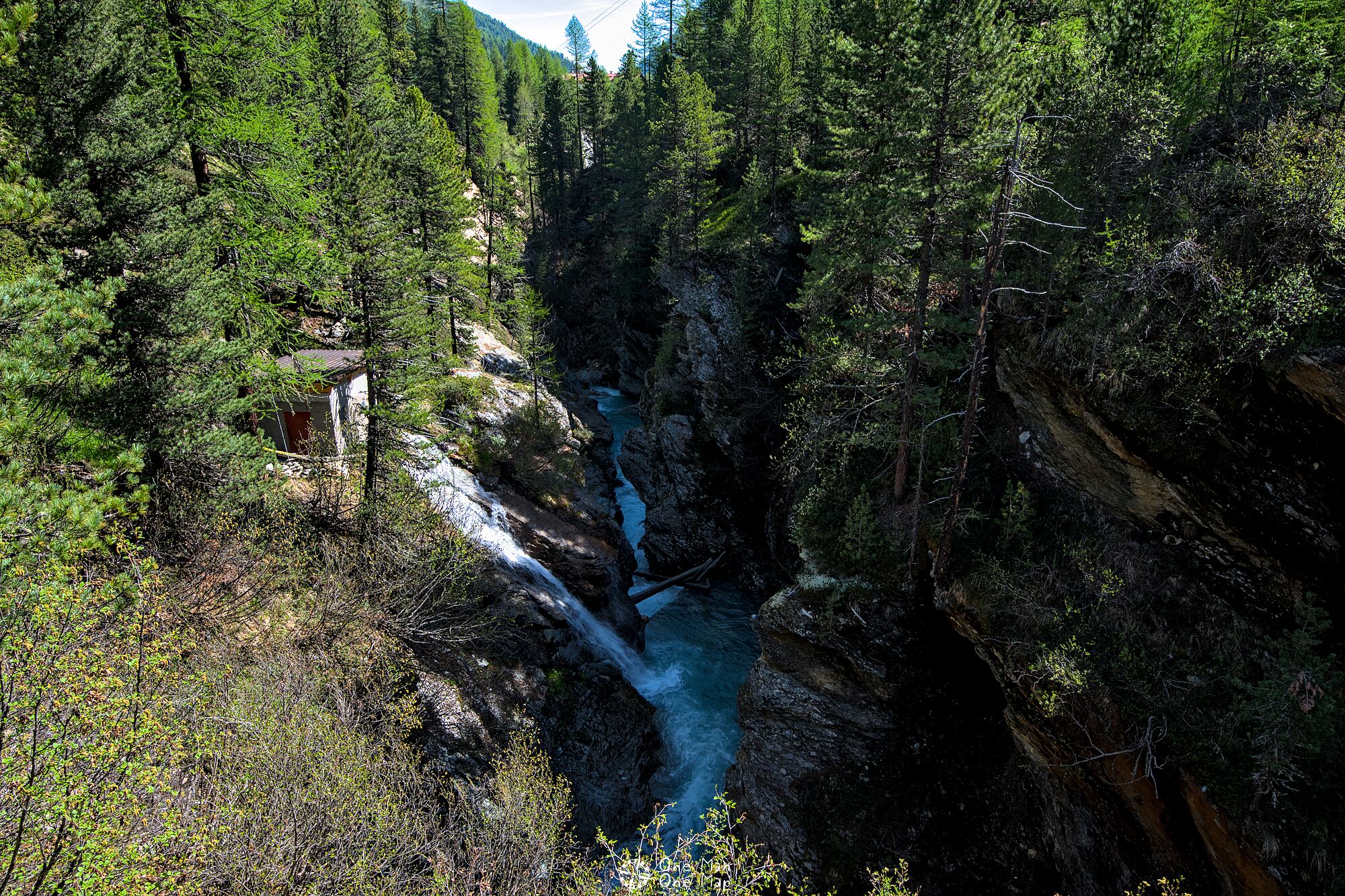
Conclusion: Even if there isn’t that much interesting to see outside of the cellar, this hotel is a very special Lost Place in a unique setting. Having enough time for exploration on the second visit was definitely worth it 🙂
This post was written by Simon for One Man, One Map. The original can be found here. All rights reserved.

